Read the FEB ISSUE #98 of Athleisure Mag and see 9PLAYLIST | Lionel Messi in mag.
Featured

Read the FEB ISSUE #98 of Athleisure Mag and see 9PLAYLIST | Lionel Messi in mag.
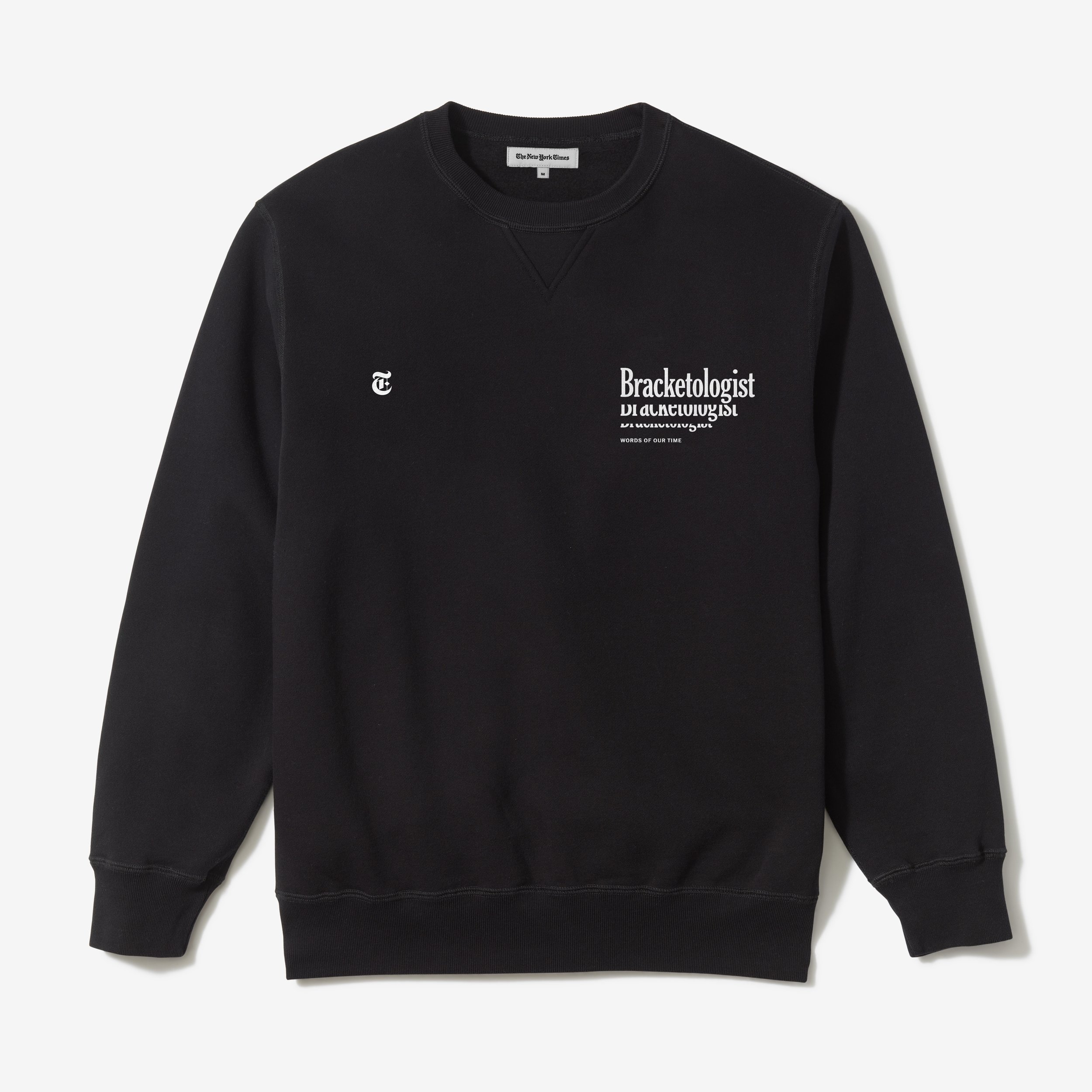
PHOTO CREDIT | The New York Times
You know what time of year it is, we’re all focused on March Madness which allows us to increase our ability to showcase our depth of knowledge in Bracketology, “the activity of predicting the participating teams in a tournament, typically the NCAA. basketball tournament.” With Selection Sunday, March 17th around the corner, we’re all thinking about who is going to the big dance and who we’re adding into the Big Bracket. The New York Times is launching a Bracketologist Sweatsuit Set for college basketball-watching enthusiasts this Friday, March 8th.
This set will exclusively be sold on The New York Times Store and is the first drop from their “Words” Capsule Collection. This will be an evolving product collection that decodes modern language through journalism. This collection will include the Bracketologist Sweatpant ($80) and Bracketologist Crewneck Sweatshirt ($70), the perfect ensemble to wear when you’re out and about or gathering with friends to get your brackets in order!

Read the latest issue of Athleisure Mag.
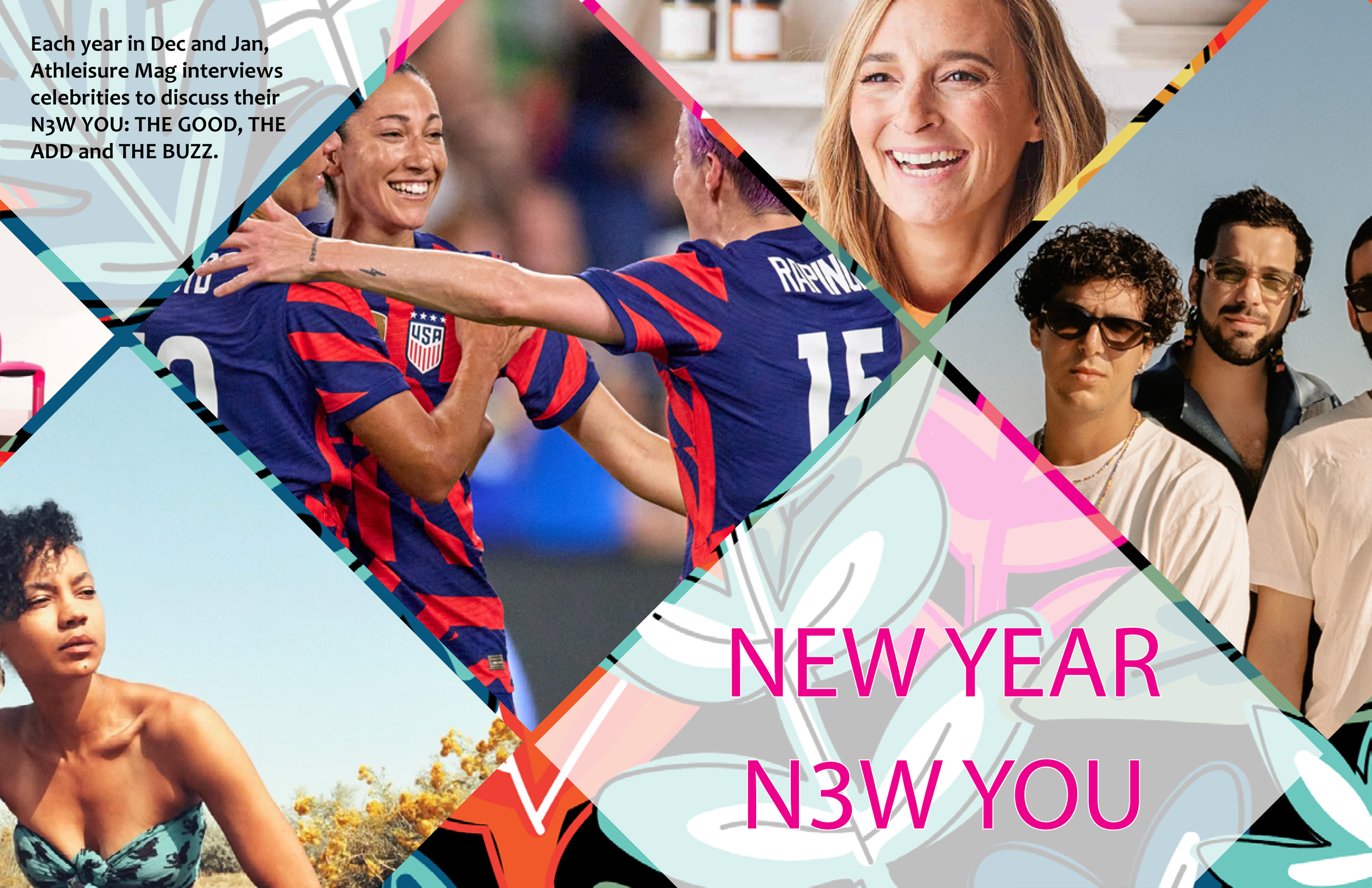
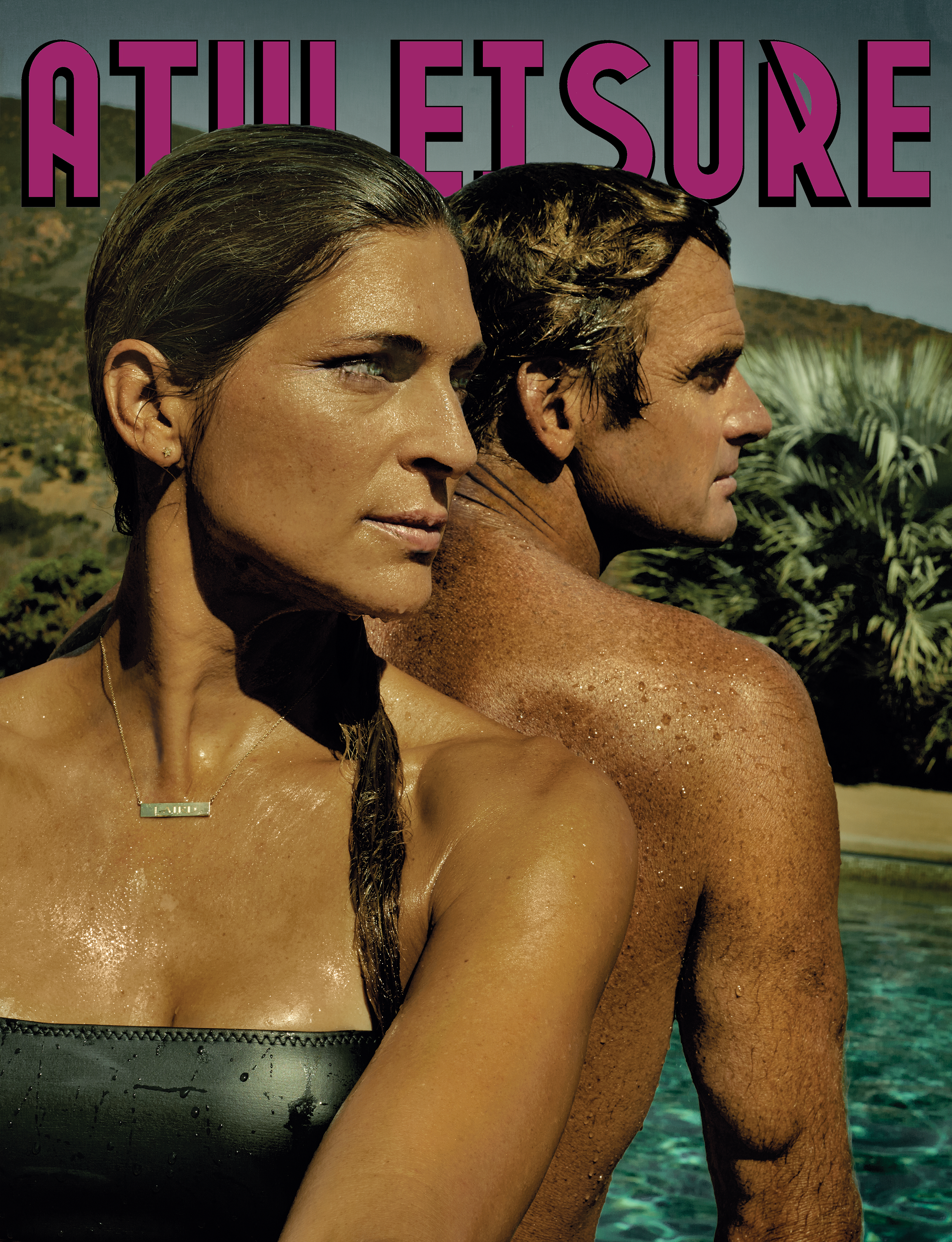
PHOTO CREDIT | Phillip Dixon
In this month’s issue, our front and back cover story is with Pro Beach Volleyball Athlete, Gabby Reece and Ultimate Waterman, Co-Inventor of Tow-In Surfing, Laird Hamilton. Both have been models, TV personalities, producers, etc and are Co-Founders of Laird Superfood. We talked with them to find out more about Laird Superfood as well as XPT, products that they are focused on as we continue into fall and holiday, and how they balance their coupleship with the work that they do. We also interviewed the first African American principal at ABT, Misty Copeland. She talks about the sport, how she uses her platform to amplify ballet voices, and more.
This month, we have a number of culinary stories that we're so excited to share with you. We covered Food Network's New York City Wine and Food Festival presented by Capital One. We give you an inside look on the events we attended as well as including interviews we have with Chef Brooke Williamson (Chef/Owner - Playa Provisions), Chef Antonia Lofaso (Chef/Owner - DAMA Fashion District, Scopa Italian Roots), Chef Andrew Zimmern, Chef Robert Irvine, Chef Philippe Chow (Chef/Owner - Philippe by Philippe Chow), Chef Franklin Becker (Chef/Owner - The Press Club Grill), Chef Alain Allegretti (Partner Culinary Director - Fig & Olive), Chef Alez Guzman (Chef/Owner - Archer & Goat). We also cover the Concorde Hotel as they were a great partner in this story as we enjoyed a staycation there while covering this food festival.
Our food coverage continues with Hortus NYC in addition to this month's The Art of the Snack which brings the Hamptons to the city, Sagaponack. This month's Athleisure List comes from Paros Tribeca which makes you feel like you're enjoying a Grecian getaway, along with Seasoned Vegan which has opened recently in the East Village. We also caught up with Gaby Dalkin who is known for her take on food to tell us a bit how we can prepare for holiday entertaining as the season is around the corner as well as her latest cookbook. We also talked with Doreen Winkler, a noted sommelier who will bring orange wines to her 2nd Annual Orange Glou Fair. We talk about her boutique, her passion for orange wines, the event, and mroe.
This month’s 9PLAYLIST comes from EDM DJ/Producer, Miley Cyrus. Our 9LIST STORI3S comes from EDM DJ/Producer, Honeyluv and from DJ/Producer/Rapper/Singer/Songwriter, Jesse McFaddin. Our 63MIX ROUTIN3S comes from icons Laird Hamilton and Chuck Norris.
Read the OCT ISSUE #94 here.
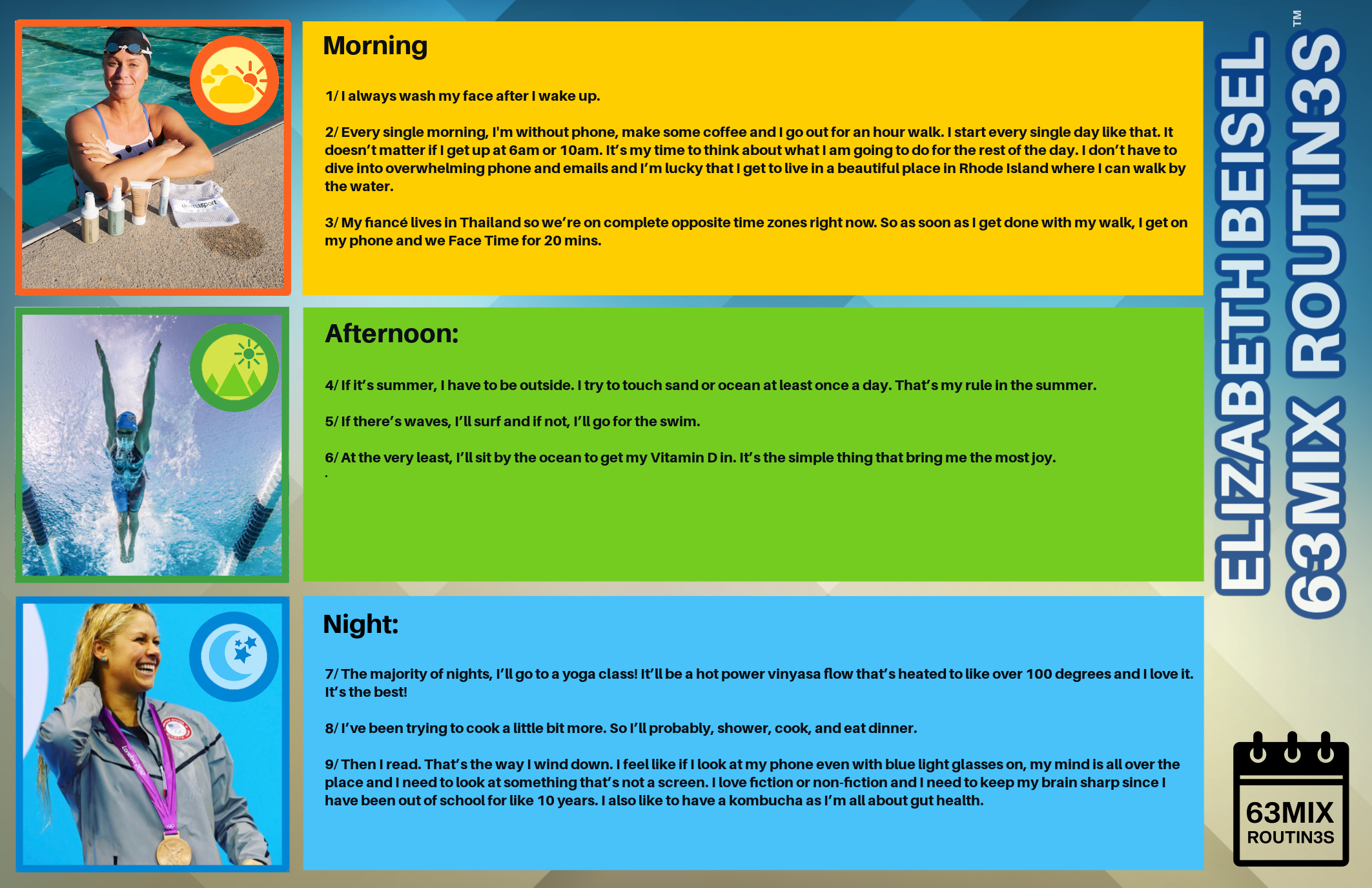
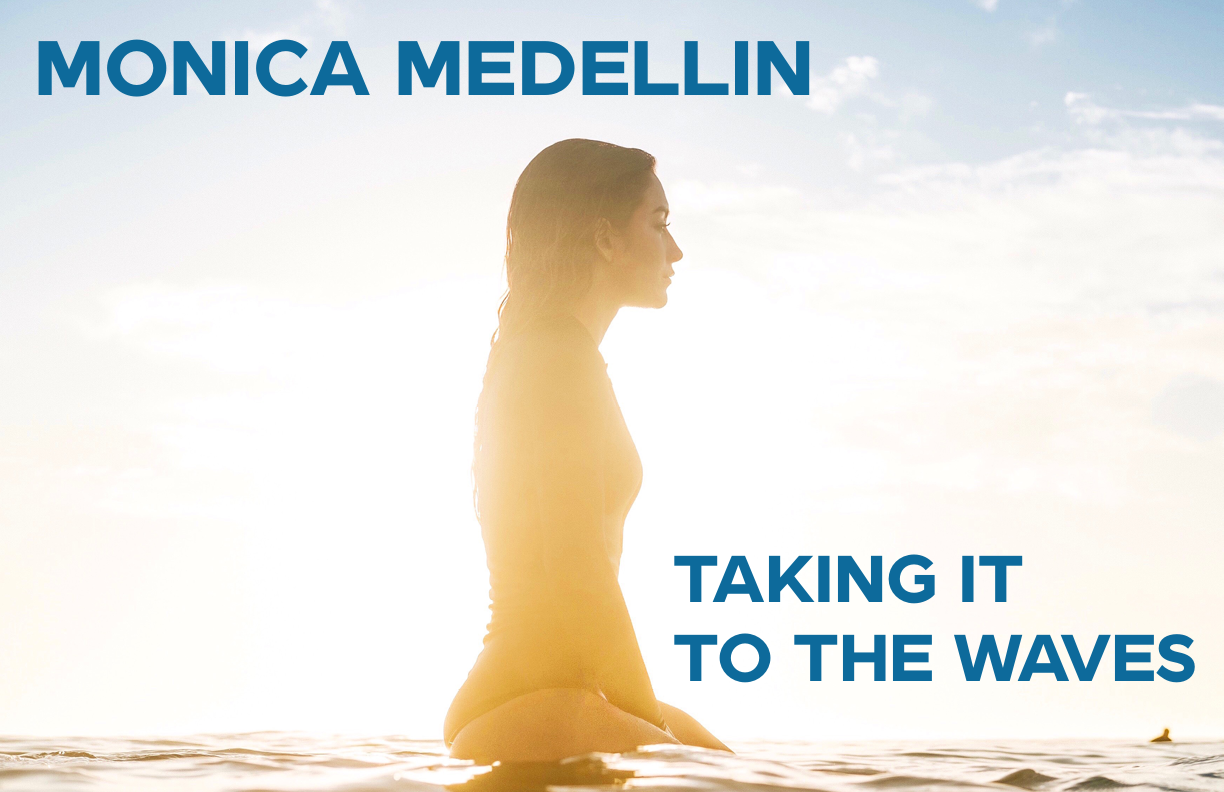
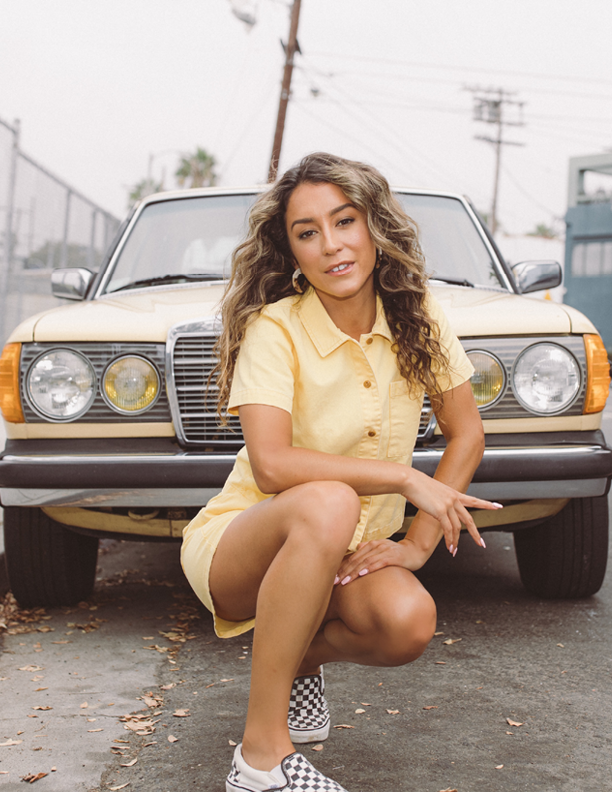
We enjoy a great docuseries where we get to follow our favorite sports and get behind the action to find out how it all comes together. Prime Video's 4 episode series, Surf Girls Hawai'i follows 5 native Hawaiian females as they take their shot on obtaining a spot in the world tour. We follow Moana Jones Wong, Ewe Wong, Maluhia Kinimaka, Pua DeSoto, and Brianna Cope as we see them navigating their season, training, and interacting with their friends and family.
We caught up with Monica Medellin, Creator and Executive Producer of this docuseries. We wanted to find out more about how she became a fan of this action sport, being a surfer, working in the surf industry, and the importance of storytelling to amplify voices that are underrepresented but have powerful points of view.
ATHLEISURE MAG: We’ve personally been a fan of your work for awhile so it’s exciting to be able to talk with you to know more about you’re your docuseries, and what you’re working on that’s coming up!
MONICA MEDELLIN: Amazing! I’m so excited! I think that this is perfect because every body that knows me makes fun of me because athleisure is all I wear.
Thank you so much for highlighting me. I feel like a unicorn in this space. I just turned 30 and this all happened before then and it seems like the tides are changing and there are very few women that are like me in this position. So I really want to share my story and to hopefully inspire more storytellers in narratives like this.
AM: Absolutely!
Before we get into talking about the docuseries, we want to know more about you. What was the moment that you realized that you wanted to be a filmmaker?
MM: Oh, I mean, I feel like I was destined to be a filmmaker ever since I was a little girl. I couldn’t really identify that that was what I wanted until later in life. I've always been involved in sports as a child. My mom was a single working mom from Mexico and she raised me on her own.
Through that, she found different sports programs and extracurricular activities and that’s where I really fell in love with different sports and it started with more traditional sports like volleyball, basketball, and soccer. Then I moved into gymnastics and then we both discovered surfing while we were walking along the Santa Monica Beach and at that point, I had started skateboarding, surfing, and exploring these non-traditional sports.
I actually used her old camcorder to film myself skating! That’s what I did with my friends on the weekends, so obviously the production value was what it was!
You know, I started documenting sports from a young age and I started documenting myself as a young girl participating in those sports from that time. You know from there, I obviously played sports in high school – I was the team captain of the volleyball team, I would teach at surf camp over the summers and I moved to university and I studied Journalism at the University of Oregon. So, this theme of filming our experiences as women in sports has been something that has been a thread throughout my entire life!
AM: Wow! It also seems that a lot of your films as well as commercial work that you have done has also focused obviously on sports, but also covering underrepresented groups as well. As someone who is Black and has enjoyed sports such as snowboarding where people don’t think of us playing it, I like that you’re showcasing what is being done that people don’t necessarily think of.
MM: Right and I think that that’s something where you want to be niche, but not too niche where you miss out on telling other stories as well. I think that my main thing is highlighting and shining a light on stories that are underrepresented in the mainstream. That is the essence of my work. It doesn’t just need to be sports, it can be in anything. I mean, when I worked at the Los Angeles Times in 2015, I was helping launch a new platform that talks about this emerging American identity with race, immigration, identity, what does it mean to be American, but also never to really see yourself represented in the story in that way. So, I think that that time at the Los Angeles Times and producing documentaries around those topics really did shape the direction of how I approach my storytelling. Like sure, if I’m telling a story about an athlete, that’s in sports, but I want to uncover who the person is behind the athlete, what is the human experience that we can all relate to because ultimately, even when you see Surf Girls Hawai’i, it’s not just about surfing. It’s about coming of age, it’s about sisterhood, it’s about supporting each other through challenging times, and navigating life. So, I think that that is my approach through all of my storytelling that makes it universal whether you are interested in the sport or the topic itself.
AM: Absolutely!
What was the first project that you did that you realized that you wanted to do this as a career?
MM: Hmm, it’s actually funny, because my first film that I created was about a young Latina surfer in the Bay Area. She was part of a program that helped underrepresented youth get into the sport of surfing, get into action sports, and that film actually premiered at the Los Angeles Latino International Film Festival here in LA. That moment of seeing my work and my film, premiered at The Chinese Theatre, in Hollywood was such a monumental moment for me because I could see that this kind of storytelling was valued. I could see the reaction of the audience and I could see the emotion and I could actually feel the energy in the room. So, I feel like the LALIFF selecting my film to premiere at the Chinese Theatre in that way was a really defining moment for me. I knew that I could really make something out of this career and hopefully, tell more stories. At that point, I was still in my early 20’s so it was just the beginning, but I think that that was the moment that I decided to pursue this full time.
AM: We love surfers! This year alone we had the honor of speaking with Carissa Moore as well as Kai Lenny as covers for Athleisure Mag. You also surf – what is it about this sport that you enjoy so much?
MM: I think surfing is such a unique sport because it’s not just a sport. It’s a lifestyle, it’s a culture, it has deep roots around the world, and had I known that this sport is originated by people of color and women of color, I would have felt that I belonged in it sooner. (Editor’s Note: The origin of surfing can be found in various cultures as far back as the Incas in 1590 when a Jesuit missionary José de Acosta published it in Historia Natural y Moral de las Indias. In West Africa’s – Ghana, Ivory Coast, Liberia, and Senegal and Central Africans in Cameroon have had various accounts of this activity in 1640, 1679, 1834, and 1861. In Polynesia in 1769 there is documentation of he’e nalu which translates to wave sliding by Joseph Banks as he was on HMS Endeavour during the first voyage of James Cook while the ship was in Tahiti.) I didn’t know anything about the history of surfing until I met another Latina surfer who shared with me this deep history. After discovering that, I made it my life’s mission to try to tell the world that this is the truth and that this is the history of this.
I think that with surfing, it’s so special for that deeper reason, but also I think that it’s a way of connecting with nature to get outside and get off your phone. You have no way of communicating with anybody when you’re out there. It’s your time to exist and enjoy yourself and I think that it resonates with a lot of people. I think that when I first started surfing in Los Angeles, the lineups looked a lot different than they do today. Today I actually paddle out and I see more women, I see more women of color and I actually see friends every single time that I go. I think that this surf culture has been defined by advertisements, brands, the industry, but we are reclaiming what it means to be a surfer and you’re seeing that happening in your local lineups. You’re seeing that happening through Surf Girls Hawai’i, you’re seeing that happen through different lenses, I think! I think that that is what makes surfing special. It’s just, there’s nothing else like it honestly.
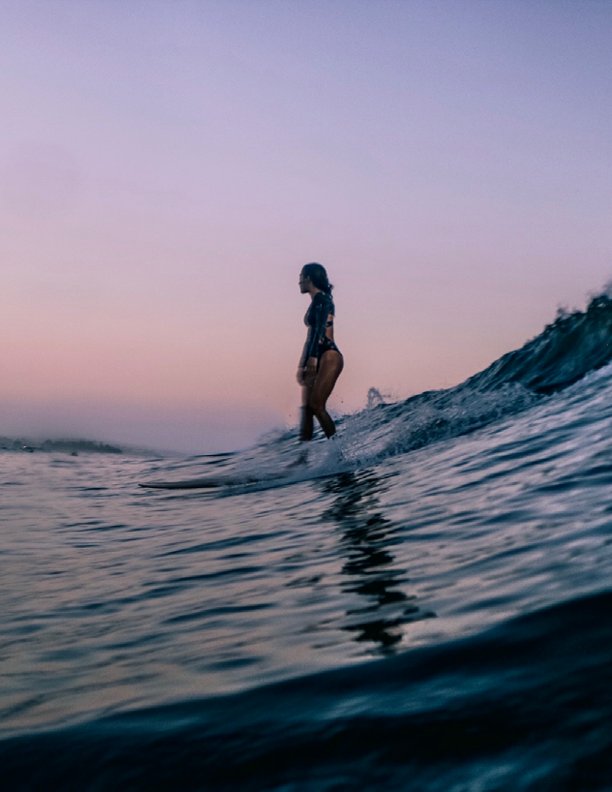

AM: As the creator of Surf Girls Hawai’i, what drew you to telling this story?
MM: Surf Girls Hawai’i is what I have dreamt of ever since I was a little girl. We saw Blue Crush released back in 2002, which was my favorite film, and I really identified with Michelle Rodriguez (Fast and the Furious franchise, Machte franchise, Resident Evil franchise), who was another Latina and I mean, that’s just one part of it. When I was working in the surf industry, I noticed that major mainstream platforms just had more coverage of male surfers. You barley saw women and in advertisements, it’s still really common to see a surfer girl in a bikini and a man on a wave surfing.
AM: Right.
MM: You walk down to any surf shop and that’s still the reality of our time in 2023! Actually, while I was working at the League (World Surf League), I started a personal archive of my favorite surfers who were women, who I thought deserved the spotlight and I pitched an idea that would eventually push the company to promote men and women equally on our social platforms. I think that since then, we have seen a shift. I just really wanted to be able to highlight women that I felt didn’t have a seat at the table. I think that through Surf Girls Hawai’i, they are finally getting the recognition that they deserve. That’s really cool that I helped spearhead that effort and identified this talent early on.
AM: For those that have not seen this docuseries, can you give us the premise of the show, and also, how did you decide to select the 5 Native Hawaiian female surfers that are featured in the docuseries.
MM: Surf Girls Hawai’i follows the next generation of native Hawaiian, female surfers as they compete at an elite level to earn a spot on the world tour of professional surfing. Surf girls is about a sisterhood of native Hawaiian surfers who are on the cusp of becoming pro and this is the most elite level that they have ever competed on and they are competing against each other, but also together in a lot of different ways and they support each other through that. I think that what makes it special is the fact that oftentimes when you see shows that center women, you see maybe cattiness or drama between the women. You see this marketable yet damaging portrayal of female relationships.
I think that what’s different with Surf Girls Hawai’i is, even though they are fierce competitors, and they are competing for one spot, they all support each other through this journey. That’s because they all know that if one of them makes it, everyone makes it because this is more than just winning for their own personal gain, this is about representing native Hawaiian culture at the highest level of surfing. I think that carrying that responsibility, and that legacy, is what makes this highest stakes in a lot of ways. You don’t need that cattiness or drama between the girls. I think that that is the premise, but also what makes it different.
AM: From your perspective as a filmmaker, how do you go about creatively organizing all of this. As you said, they’re all there for that aligned goal, but they are also individual people. How are you weaving that story and kind of planning it in your head especially when it’s only 4 episodes! By the end I was wanting to see more about these women, wondering if there would be another season, would the same surfers be followed – so many questions!
MM: The response to this show has been so overwhelmingly positive and I have been told that it is over performing. It shows that there is a gap and this storytelling was absolutely needed and 4 episodes did the trick! I think that that worked and I think in going back to your question, this cast is so special because on the surface, they are all native Hawaiian pro surfers that share this bond and share their culture together. But what I wanted to really accomplish with this series was to show them as multi-dimensional, multi-faceted women. They’re all different and all have different interests and different mindsets. They’re all different because you have on the one hand, Maluhia who is 26 years old, considered older to be competing and is at the crossroads of deciding on whether she wants to be a professional athlete and fulfill that lifelong childhood dream or pursue her education. She did both. She got her degree from Stanford and she is pursuing her PhD at UH Mānoha – all while competing on the WSL tour. I think that that is super unexpected. That defied expectations and I think that each character defies expectations of what you would think of them on the surface. So that’s just one example of how we approached the storytelling around each woman. How do we paint them as more than an athlete? Because each character is more than an athlete.
AM: What was it like working with Hello Sunshine on this project?
MM: I’ll start with Hello Sunshine. Hello Sunshine was honestly a dream partnership. Like we were aligned in our values before we even made the show together. I think for me as a creator, it was really important that the team working on Surf Girls was women-led and women-run, that is the essence of what makes Surf Girls Hawai’i what it is. I think that Hello Sunshine’s mission of changing the narrative for women aligned with my mission well before the final product. I think that Surf Girls put this native female Hawaiian experience at the forefront and Hello Sunshine invested in that, believed in that, and they saw that from the beginning. I think that that’s brave. This talent, they’re low profile, lesser known names outside of the surf industry, but that didn’t matter to them and I think that they just saw the magic. I also think that the Hello Sunshine team was very collaborative and supportive of hiring women behind the camera and making sure to work with my recommended Hawaiian and Hawaii local creators and crew. I just felt like the set was forward thinking and they understood the importance of picking a team to tell a story and in the best way.
I actually created and directed the original digital series that sold the show, and the vision stayed true throughout the process. I think that that is really hard to do actually. I feel that the women were really portrayed in a positive light and the culture wasn’t sensationalized. That was really really important. That’s my bit on Hello Sunshine!

AM: That’s amazing to hear. What has been your biggest takeaway in doing this docuseries?
MM: Oh my gosh, so much! I mean, creating and executive producing my first TV show, was an experience that I learned a lot from. I think that a big takeaway from the series is that you see the reactions from people that watched this and people are hungry for this kind of storytelling and they’re hungry to see women and women of color in sports. I think it’s interesting because this was technically made for Gen Z young women to identify with. But you see women of all ages responding to this and you see men of all ages intrigued, interested, and inspired by this story. So, I think that this is a story for everyone and that’s the takeaway – this story is important and deserves a spotlight and we were the first to do it and that’s really, really special. We were the first female sports docuseries on Hello Sunshine’s platforms and this was the first female sports documentary on Amazon.
AM: That’s a pretty big first!
MM: That’s big!
AM: That’s awesome!
I’m sure you’re always working on different projects, is there anything coming up that you are able to share that we should keep an eye out for?
MM: Yeah, so 2 things! I just got back from Tahiti for a shoot with the Olympic Channel, so that’s coming up. Then, I have another underreported, but fascinating field that centers women of color and Black women in sport that is not highly covered that I am currently developing. I’m developing projects constantly so we can leave it at those things.
IG @monicamedellin_
PHOTOGRAPHY CREDITS | PG 52 Ryan Gladney | PG 54 Brie Lakin | PG 57 Katie McDonald | PG 58 - 63 Prime Video |

Read the AUG ISSUE #92 of Athleisure Mag and see TAKE IT TO THE WAVES | Monica Medellin in mag.
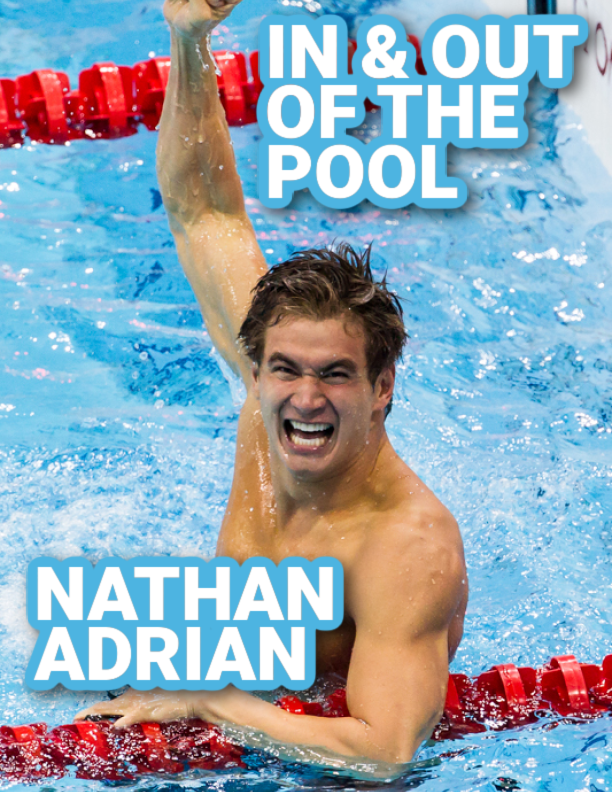
We are 1 year away from the Summer Olympic Games in Paris 2024! There is nothing like that time of year when we cheer for our favorite athletes as they make their dreams a reality! This month, we caught up with Nathan Adrian 8X Team USA Swimming Olympic Medalist (5G, 1S and 2B). We enjoyed seeing him in Beijing 2008, London 2012, and Rio 2016. We wanted to catch up with this freestyle swimmer to find out more about how he got into the sport, competing in it, his Olympic experience, safe sun that allows swimmers to enjoy being in the water without sacrificing their aesthetics, how he gives back to the sport, and how he continues to advocate for men's health.
ATHLEISURE MAG: When did you fall in love with the water?
NATHAN ADRIAN: Oh haha, you know, I think before I was even old enough to make memories to be honest. Some of my earliest earliest memories are my mom going and doing laps and I would just turtle on her back and just cruise around. It was something that was just always deeply engrained in all of us as a family. My sister is 8½ years older than me, my brother is 6 years older than me, so it’s something that I was born into and it wasn’t just something that us as a family picked up.
AM: That’s amazing!
When did you realize that freestyle was going to be something that you wanted to continue to do and excel in?
NA: Oh yeah, good question! So like, swimming overall – freestyle is what I gravitated towards and I had a really good situation and set of coaches that gave me what I needed at that particular time in my life and my development as an athlete. So when I was young, it was just fun times and it was all games, happy smiles and lots of energy. That transitioned into games and also, “hey, let’s set some goals and try to focus while we’re here. Let’s try to show up more,” and that kind of thing. Then, eventually, it was, this is my life and this is how I did it. I set goals, I worked really hard, and through that, that’s how I think that I fell in love with that process. It also me as an individual, looking back, swimming was the perfect thing for me. I had a lot of energy, it helped me focus and it also allowed me to set those big goals and then you set those little goals and if you’re good at it, you can set little goals for every month of practice, every week of practice and down to everyday of practice. If you achieve that, whether you achieve them or don’t achieve them, if you reflect and then you figure out how you can be better, that’s just like a little puzzle that you’re trying to optimize and to figure out how you can be the best athlete that you can be.
AM: So true!
Did you always dream about going to the Olympics?
NA: So that started when I was watching the 2000 Olympics. I was about 11 and then in 2004, I was trying to qualify for the Olympic Trials and I did not and then in 2008, I was like, “hey, I’m 19 and I know that it’s kind of young, but maybe I can do this if the stars align.
AM: We enjoyed watching you and to know that you have participated in the Olympic Games of Beijing, London, and Rio where you medaled as an individual as well as a team of where you swam along with Lochte, Phelps, Murphy, and all of these amazing people, what was it like to work with those people and those various teams?
NA: Oh that was awesome! I feel very very blessed. I really got to experience what I consider to be one of the highlights of Team USA dominance in the sport. You know, people who were around during the 70s and stuff, they would argue back pretty hard core, but that’s ok. This is what I would call the modern era of swimming let’s call it that. There were guys like Michael Phelps (28X Medalist 23G, 3S, 2B), there was Jason Lezak (8X Medalist 4G, 2S, 2B), Aaron Peirsol (7X Medalist 5G, 2S), Ian Crocker (5X Medalist 3G, 1S, 1B), Brendan Hansen (6X Medalist 3G, 1S, 2B) – oh my gosh, these guys had world records in each of their events and then in my 2008 team, I was with Dara Torres (12X Medalist 4G, 4S, 4B), Katie Hoff (3X Medalist 1S, 2B) at the peak of her game, I was with Natalie Coughlin (12X Medalist 3G, 4S, 5B) when she won. There were so many athletes for me to watch and learn from. It was absolutely incredible for me to be part of that and especially on that 2008 team, that was a transition for me from being a fan to actually doing it on that international stage. So I got to see my heroes and watch them, talk to them, hang out with them, and be a part of their team. As you move on from that, as with all things, you see the times that swimmers are going so fast as they are now. You take what they did and try to bring it in to what you’re doing and make it better!
AM: What were some of your favorite moments in competing or just being with them?
NA: Oh gosh, I think that there’s a lot! I mean, I have 8 medals so those are obviously a favorite moment. The ones that aren’t just as public, are those that happen when you are with a team or a group for 3 or 5 weeks all day everyday – like summer camp for adults! But we’re all there for a job with a very, very serious purpose so there’s not much messing around. Whether it be someone I think playing a prank in 2008 and they put a cicada in the trail mix bag which was pretty funny. I mean it’s pretty gross because they’re so big!
Another one in 2012, I roomed with Matt Grevers (6X Medalist 4G, 2S) which is one of my best friends to this day. He looked at me and after we both won, he was like, “dude, think back to a year ago, who would have bet on us besides our parents?” You know? Special moments like that are awesome because in 2011, I didn't medal in any of the individual races and Matt didn’t even make the World Championships team – so we weren’t even on the radar for winning. But here we are at that point, we won gold and we’re preparing for the 4 X 100 medley relay after that. So that was really awesome.
Just eating in the dining hall and experiencing that. World Championships is similar, but not the same as the Olympics. The Olympics are just that special feeling because you have every sport there and to just people watch and to enjoy that. You can watch the pride that people have in their country and as they are getting ready to compete and do what they can to win those medals that’s just something that’s really special.
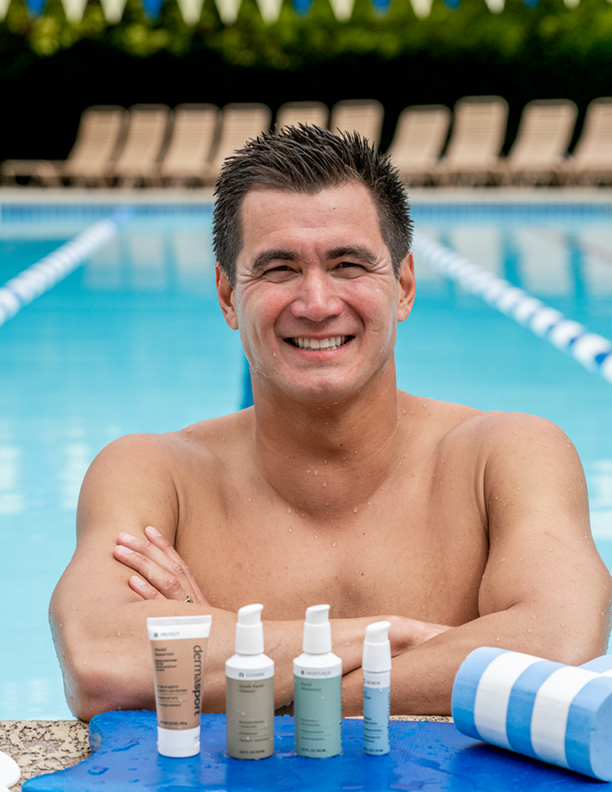
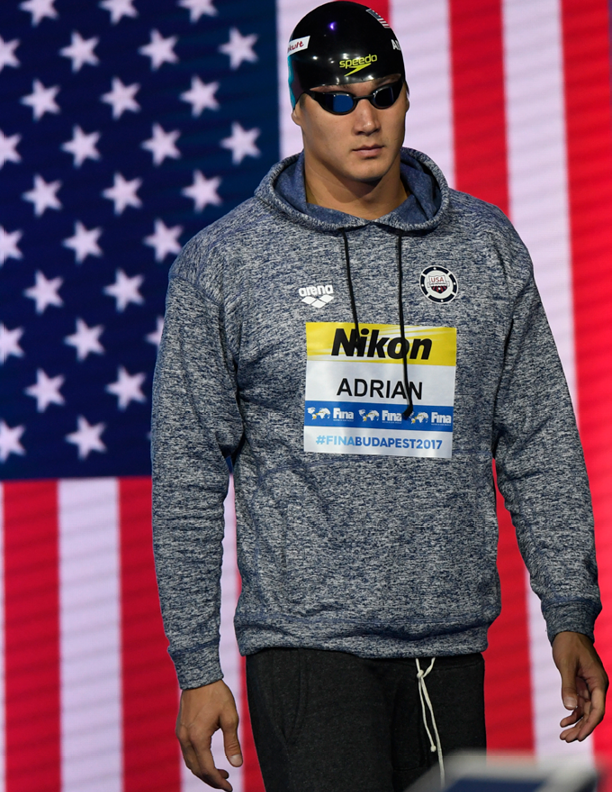
AM: Obviously swimming is such a great way to meet your fitness goals. Here at Athleisure Mag, we like to ask athletes what you like to do in and out of the water to stay fit that we can add to our fitness routines?
NA: You know, I actually think that one of the things that we did was a lot of good mobility. I actually find myself that after pouring that first cup of coffee, I will just do a really deep lunge hold. My hip flexors, I’m sitting in a chair right now, I need to stretch these hip flexors out. I’m probably not going to do it here at work, but in the morning is a great time as you’re getting your mobility going. Same thing with doing some thoracic spine mobility. Again, this is before my daughter and my wife is awake, I’m just sitting in the kitchen doing Spider-Man stretches which are different rotational stretches. It really is that if you don’t use it, you’ll lose it! I want to be able to keep that mobility and then I do my best to get pops of strength in.
Certain days when I can’t get into a weight room, you need to activate those muscles, you do a push up, a bodyweight squat, you can do a single leg squat – find an overhang and do a pull up. Do something just to activate it and keep those muscles moving. I’m in a pool right now, I work in a pool, but I just try to do it. I’m telling you what I want to do, and I don’t always live by it. But I do try to get into the pool and do some aerobic stuff because you’ve just got to keep that heart rate up and keep it moving.
Definitely another thing that if you don’t use it, you lose it! That’s where Dermasport really comes in nicely because I’ve used it. My break is usually smack dab in the middle of the day and we’re coming in on a California heat wave right now so it’s about to be bright and sunny and I’m swimming in it. So I need to wear my sunscreen and then afterwards, I need to be able to take it off so that I don’t look funky when we’re talking to kiddos and giving them lessons and things.
AM: How did your partnership with Dermasport come about and what was it that you felt was synergistic between you and the brand?
NA: Well, the partnership came about because I was actually working with somebody with some goggles and they knew about Dermasport and they introduced me to the team. They sent me a trial package and I loved it. I grew up in Seattle, so we were doing sunscreen over the summer, but I didn’t have that 365 exposure to the sun that we have here California now. So when I moved down here, it was like, what do I do? Everybody was just like zinc, zinc, zinc – everyone looked like a ghost, the creases in your elbows looked all white even though you scrubbed and did that whole song and dance. I tried this and it’s zinc sunscreen, but it also moisturizes my face and I feel better after I put it on as well as more hydrated than I did before – which is awesome. Then, you do the cleanser which gets it all off and then the moisturizer afterwards as it’s very refreshing. I mean, it’s a product that’s made for swimmers. Even though I’m not still swimming internationally, I'm still very much so a swimmer. I'm a swimmer in California that needs to protect my face. My sister is actually a derm PA so she’s constantly reminding me on my sunscreen. I’m like, “no, no – I got it covered. I’m doing what I can to protect my face from the sun.”
AM: What will you be doing with the brand in terms of clinics, partnerships etc. that people will be able to see?
NA: I think that we’re still working on that and developing it. There’s actually a meet coming up here that I’m hoping – I mean we just got the product launch happening, so if I can get my hands on some, I’d love to go and see some of those master swimmers and let them try. I mean, this is one of those things that I know that people just need to go and try it. You need to just get your hands on a sample, try it, and it will absolutely blow you away with the way that your face feels when using this sunscreen as opposed to the other ones that are made to be in the water. I will say that certainly other people have made sunscreens that make you feel hydrated, that make you feel nice, but this is something that’s taking a beating! We’re in chlorine water and the sun so it has to have some staying power and it does!
AM: Are there any projects that you’re involved in that you would like to share that we can keep an eye out for?
NA: Honestly, right now, I’ve got my hands full. My life has changed a lot since I was done competing. I have 2 daughters now, so that’s definitely a project, I’m here at the Swim School and we’re running swimming lessons trying to teach as many kiddos to swim as we can. I still do a lot of stuff with the USA Swimming Foundation, traveling around especially during Water Safety Month talking about the importance of swimming lessons and how it can save lives.
I also do a little bit of men’s health advocacy. You know, I was diagnosed with cancer and it’s kind of an uncomfortable thing to talk about for some people and I’m pretty comfortable talking with people about it especially because it was testicular cancer (Editor’s Note: At the age of 30 in 2018, Nathan was diagnosed, it was caught and treated.) and I think that there is just a cultural barrier for people – for men specifically to 1, see the doctor and 2, to talk about an issue with their reproductive organs. Most of the time, when testicular cancer is diagnosed, the patients know that something was wrong pretty well in advance. It’s really sad in that way when you talk to doctors and they’re like, “yeah, so many people wait and wait and they wait until their lower back is hurting or they’re coughing up blood because it spread and they just didn’t know.” You can just be out there whether it’s a blurb on the bottom of the ticker tape on ESPN or whatever it might be and say, “hey, testicular cancer is a thing and it affects young people too.” That’s something that means a lot to me.
AM: How do you give back to the sport to the next generation of people coming up?
NA: Well, I was in the water for about an hour today teaching kids how to swim! I have another couple of lessons coming up later on today around 1pm. I mean, just doing what I can! I feel very blessed. Summer is an absolute marathon, just because it’s summer time and that’s when we can run all day long because kids aren’t in school. But it’s an absolute dream come true to be able to do something that I love, to be able to spread my love for the sport and to maybe ignite some passion in some others as well as give a life saving skill. It’s the only sport that is a life saving skill! I just feel so lucky to be able to wake up and be excited for what I’m able to do and to feel good about what I do every day.
AM: What do you want your legacy to be in the sport or in general?
NA: I don’t know. People who ask me that, I thought that I would have a better answer by now. I think that just thinking about it off the top of my head, like I was talking about in 2008, me taking what other people were doing at that time, making it their own and making it better. Just being a small piece of that – maybe the athletes of today saw something that I did or how I approached my swimming. It doesn’t have to be that every athlete has to do their swimming the way that I did. I think that that is something that I learned back in 2008 where I said, “oh, ok I can’t do that.” I can try this, or this might work or I can see myself doing something like that could work. For those that see themselves in something that I do, them taking it and then working with their coaches and then bringing that further and further. The cool thing about swimming is that we’re still setting World Records pretty regularly. I mean track and field is pretty fun and super exciting, but – the 100 meter dash there hasn’t been a World Record in quite some time. So that’s what I love seeing. People pressing it further and further.
PHOTOGRAPHY CREDITS | PG 52 + 55 Courtesy Narthan Adrian | PG 56 Stephane Kempinaire KMSP DPPI Icon Sportwire | PG 59Zumapress/Icon Sportswire |
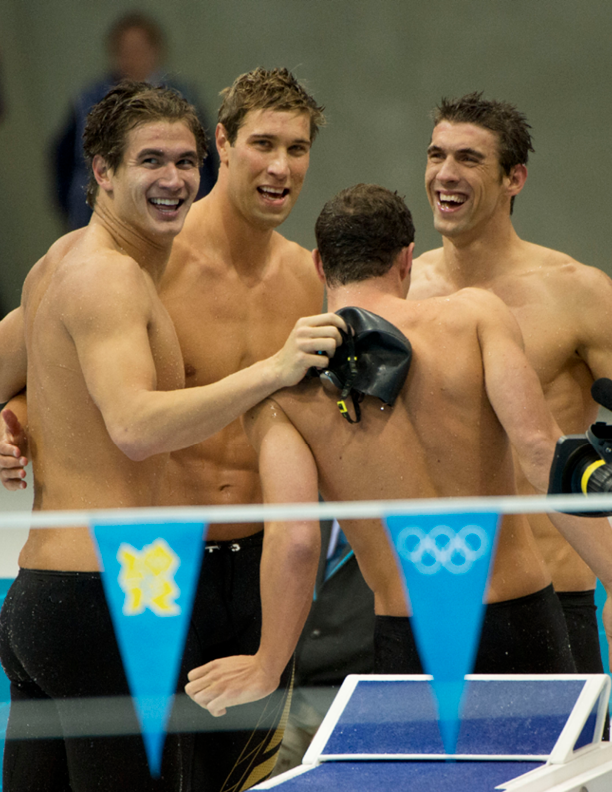

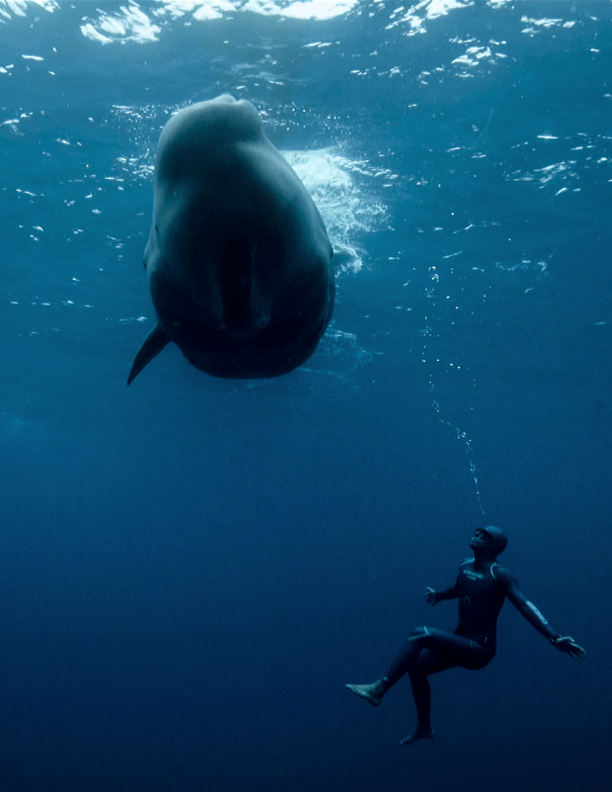
Prior to the release of Netflix's The Deepest Breath, we had the pleasure of watching the screener for this documentary film that not only brings us into the world of freediving, the relationships between freedivers as well as safety divers, but the dedication and the complete use of the athlete's body when they are competing. We are introduced to Alessia Zecchini who is known as the Deepest Women on Earth at 123 meters, 38X Freediving World Record, and 17X World Champ. We also meet her safety, Stephen "Steve" Keenan who was passionate about this sport as well as protecting the freedivers who continue to trailblaze in this sport.
For those that may not be aware, we wanted to give a bit of background on the sport as well as some terminology. Freediving is the practice of holding your breath when diving underwater without the use of breathing equipment, such as a scuba tank. This takes on more meaning when you realize that prior to Alessia winning the 2023 AIDA Oceanquest Philippines in Camotes Island, she broke a world record in the Bifins discipline during the 2023 Secret Blue International Depth Competition in the Philippines by achieving a 109 meter dive in 3 mins and 38 seconds. She broke her own 2-day old record of 107 meters set on a 3 min 26 sec dive in March and surpassed the previous AIDA record by a 10meter margin. Her world and Italian records are definitely astounding and even more so when you realize that this is done by simply holding your breath as depths are being navigated!
In this sport, there are blue holes which are a large marine cavern or inkhole, which is open to the surface and has developed in a bank or island composed of a carbonate bedrock. They can be an oasis in an otherwise barren seafloor. Blue holes are diverse biological communities full of marine life, including corals, sponges, mollusks, sea turtles, sharks, and more.
If you have yet to see this documentary film, you can stream this now on Netflix, but this interview may have spoilers. We sat down with the film's director, Laura McGann to find out about why she wanted to share this true story, bring this sport to life, show how one trains to do it, and to transport us to phenomenal locales around the world.
ATHLEISURE MAG: What drew you to want to direct The Deepest Breath and how did you find out about this story?
LAURA MCGANN: Look, I love the sea and we moved to live by the sea because we love swimming all year around and it gives me a lot. I’m a better person for the sea for sure!
So I suppose, that I would be attracted to anything about it and I remember seeing it in the Irish Times and I didn’t know what freediving was and I had to Google it. I was met by these incredible images of humans behaving more like dolphins and holding their breath for what felt like forever. It was kind of like learning that there was a group of people who had cracked the code on flying and that they had just learned how to fly! I was like, what? So it started there and then I learned more about Steve and Alessia, that’s when I really felt like, oh God this could be an incredible story, an incredibly cinematic documentary and if I were possibly able to tell it in the moment, and go on their journey with them – Alessia the World Champion freediver and Stephen Keenan an expert safety diver and their lives are just so incredibly dramatic and also just really inspirational. Just seeing that if you just live your life a little bit differently, follow your dreams – what it is that you can end up doing!
AM: When we first heard about the movie, there was a general sense of what freediving was but the first 5 or 10 minutes of actually watching your film, you get the depth of the intensity of what the film as well as what the sport is about! It really puts you in awe about all the things that have to come together to compete in this with holding that breath and really using your body as an instrument.
How did you immerse yourself in being able to really know about what the sport is and to get those moments so that as a viewer, you’re able to translate those anxiety filled moments as you’re watching it?
LM: Well, I suppose I came to this not knowing anything. It was really a long time before I would see a freediver with my own 2 eyes! It would actually be years, about 3 years and so the free divers from all over the world, held my hand and spent many an hour explaining to me over Zoom on what they did, why they did it, how they did it and how it all was. Then eventually, the first place that we went to where I saw Alessia dive was in fact the Blue Hole in Dahab, Egypt. One of our participants in the film, Kristof Coenen, he describes it as like putting his head in the water for the first time and holding his breath and all the shit from daily life just vanishes. I was at the Blue Hole and I looked in the water and I saw all of the little fish and the coral and I was only up to about my hip, but then I swam about 5 meters out and then all of a sudden, it just drops like a cliff for about 100 meters deep from 1 meter to 100 meters – just like that! It was an incredible blue, the kind of blue that calls you down and so getting to see that for myself, experience it for myself, I think it was really important as the filmmaker that I could kind of grasp something from it and try to bring that onto the screen.
AM: From an organizational standpoint, the way that the film reveals itself is really interesting and it tells a deeper story. You have so many people that talk throughout this film. How did you coordinate it all as it must have been massive?
LM: I suppose that part of it was that we had the pandemic which stopped us from doing a lot, but it also allowed us to do a lot as well in terms of the research and being able to spend so much time talking to them. It allowed us the time to really sit with the story and I would use our Zoom transcripts to piece together, kind of as a script to see what people were saying and to figure out the best way to tell this story in the most compelling way and to try to figure that out. And really, just to do it justice.
AM: What’s the big story that you want people to walk away from in terms of having the freediver and having the safety diver, what is it that we should be getting from that?
LM: I suppose that one of the things is to open people’s eyes up to what humans can actually do as that’s just fascinating! To watch that play out in someone’s life, to see them develop the skill, but it’s also like, 2 people that had this wild streak, this curiosity for the life and this world and just living their life in a way that was different from the way that it was expected or would have liked from their parents. Going on that journey with them is a bit like living vicariously through Steve and Alessia and doing something that maybe a lot of us would not be brave enough to do, but perhaps should be!
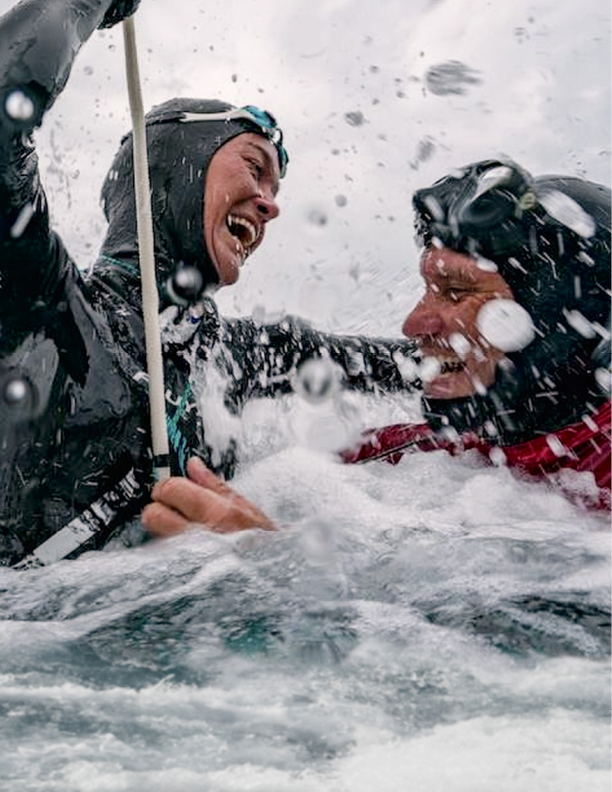
AM: We’re taken on a journey of a number of locations in this film. What were all of the locations?
LM: Oh my God, it was incredible! Freedivers know how to choose locations and they were more like that of a Bond film! So we started in the Blue Hole in Dahab and we went to Dean’s Blue Hole on Long Island in the Bahamas – it’s a 200m sinkhole. It’s just stunning. We went to a number of cenotes (Editor’s Note: Cenotes are a natural pit, or sinkhole resulting from the collapse of limestone bed rock that exposes groundwater. This term originated in the Yucatan Peninsula of Mexico, where cenotes were commonly used for water supplies by the ancient Maya.) in Mexico. I didn’t even know what a cenote was and looking at some of the footage from Daan Verhoeven, he’s a freediving cinematographer – I had seen these incredible images. Our main image is of Alessia swimming up towards the light in a cenote and I remember seeing images like this from Daan and asking him, “Daan, what’s this?” He explained that it was a cenote in Mexico. So it was just such an incredible learning curve for me. Then, filming off of the Caribbean Sea off of Mexico as well with the freedivers along with incredible freediving cinematographer Julie Gautier, she would with the safety and the divers, dive down to 30m, pop back up, show me the shot, I would be holding onto a noodle on the surface and I’d say, “that’s great Julie, could we just do that one more time, slightly different?” She’d say yes and pop back down to 30m and then come back up again. It was like having a fleet of dolphins on our crew. That’s what it was like!
AM: What was your favorite moment of this production?
LM: Oh God, there has been many really! Many moving moments. I would struggle now to name 1. It was in the Blue Hole in Dahab and as I said, it was our first shoot and it was my first opportunity to see what it was all about and it was swimming out over that cliff like I was saying to you. There was that moment when I was looking down at the fish and then it broke down and away into 100m. It was just this blue that went on for forever! It looked more like you were looking into the sky or something and you could see for 30 or 40m. You could see fish and that was just a moment that I will never be able to forget for my entire life! There were core memories made there in that moment.
AM: What was the most difficult part of this production?
LM: For me, I would say, getting it right. It was really important to me, not just as a filmmaker, and as a film that people would be able to get something from and enjoy. But for the people that are in it. It was just really important to me that Peter, Steven’s dad and his family, Alessia and her family were happy and felt like it reflected their memories of what happened and that it was true and it was fair. That was something that was always at the forefront of my mind and it was really important.
I wouldn’t say that it was a difficult thing, I would say that it was extremely important that we would have to look after.
IG @netflix
PHOTOGRAPHY COURTESY | Netflix/The Deepest Breath
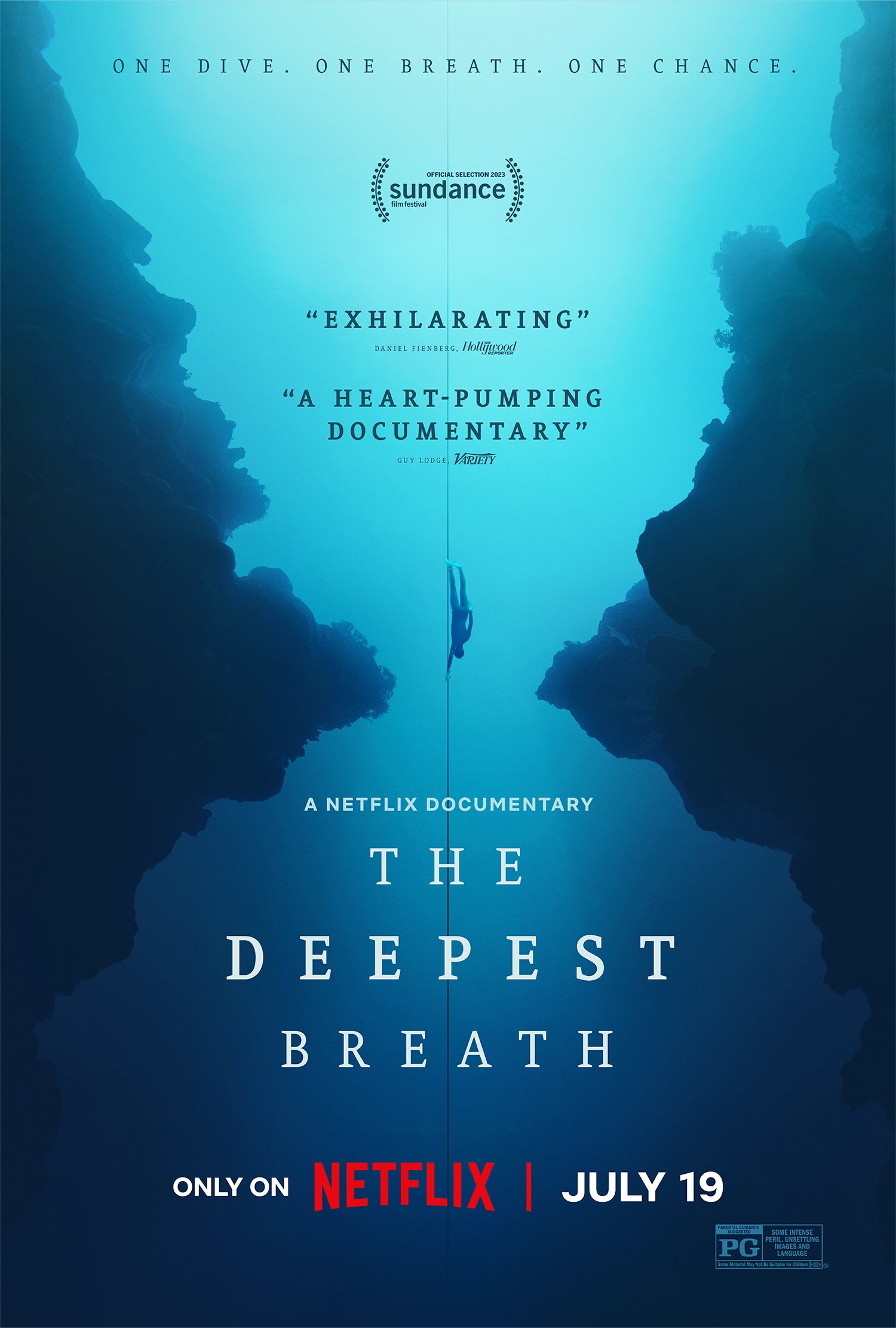
Read the JUL ISSUE #91 of Athleisure Mag and see THE DESCENT | Laura McGann in mag.
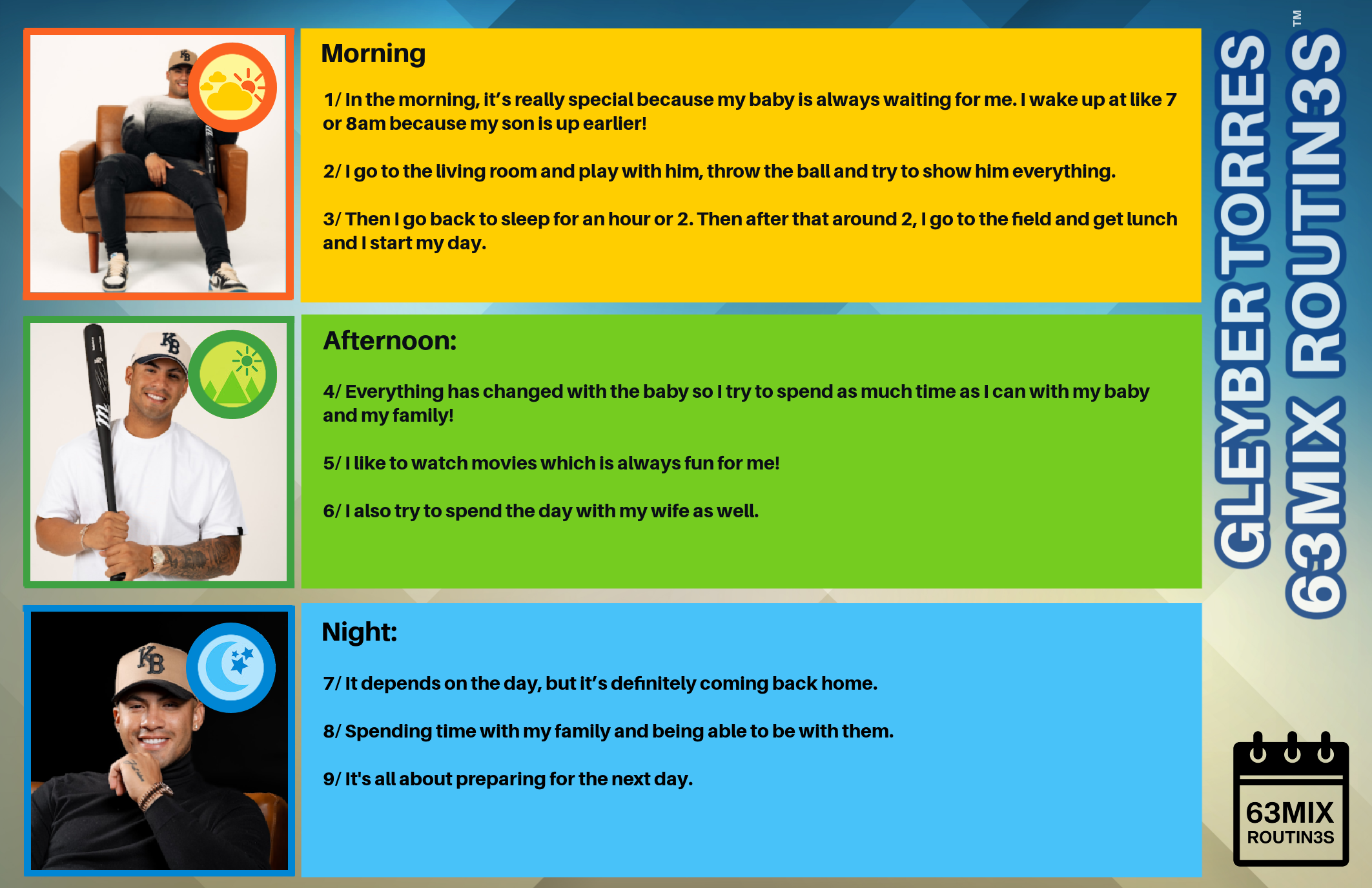
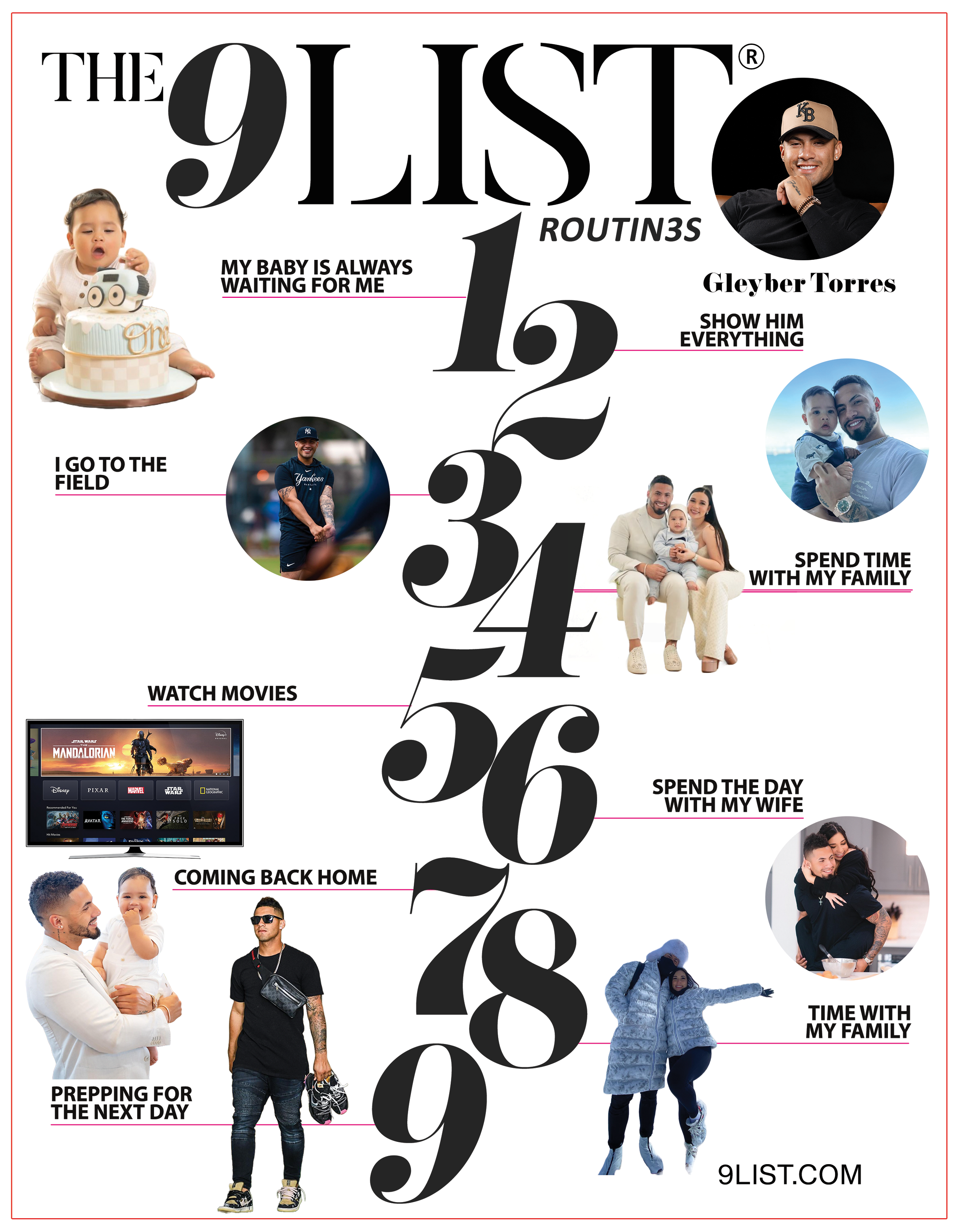
Read the JUN ISSUE #90 of Athleisure Mag and see 63MIX ROUTIN3S | Gleyber Torres in mag.
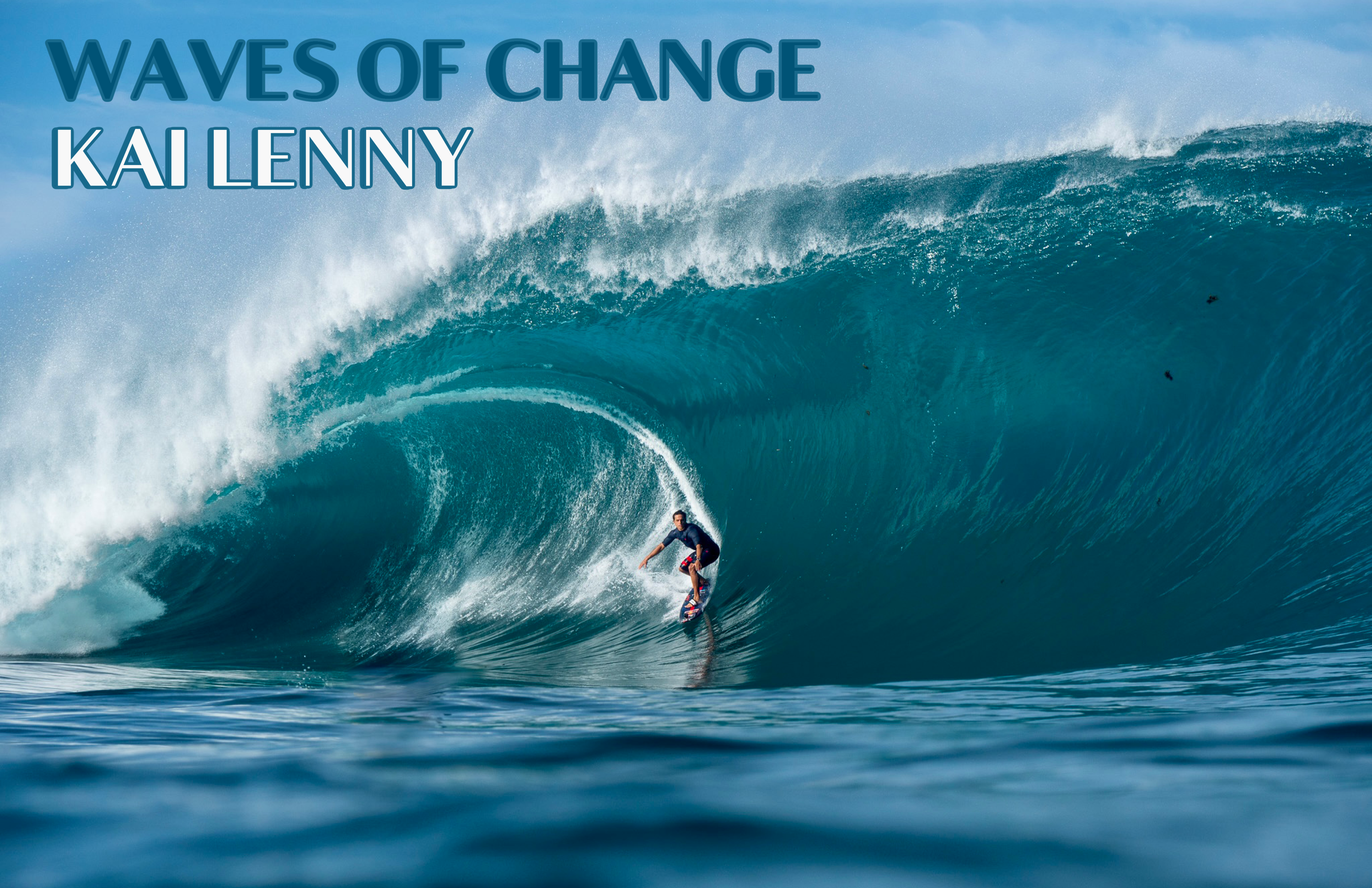
This month's cover is with 8X standup paddleboarding (SUP) champion, and accomplished legendary waterman, Kai Lenny. He has mastered big wave surfing, windsurfing, bodysurfing, hydrofoil surfing, kitesurfing, SUP, prone paddling, and more. Where there's water, he's there enjoying all that the elements can give him as he utilizes his athleticism to navigate it. He's known as a hydrofoil surfing pioneer and was one of the first wave riders to self propel himself into a wave, ride it, kick out, pump his foiling gear back in the sea and then catch another wave! He has had a number of accolades from winning the WSL Men's XXL Biggest Wave Award and the Men's Overall Performance Award in 2019, in the same year he was inducted into the Surfer's Hall of Fame and named Surf Industry Manufacturers Association's Waterman of the Year, in 2020 in addition to winning the Men's Wave of the Day, Team Champions trophy at the Nazare Tow Surfing Challenge at Praia do Norte and also received the Biggest Wave and Performance of the Year at the 2020 Big Wave Awards to name a few.
We caught up with Kai while he was in Bali to talk about how he became a waterman, his career, his partnerships and the projects that he's working on from the Life of Kai to his focus on sustainability.
ATHLEISURE MAG: When did you first fall in love with the ocean?
KAI LENNY: I think that the ocean – I feel like it was just in my veins when I was born because it comes down to the circumstances of where I emerged into this world which was in Hawaii, in Maui, to loving parents that had a real passion for the ocean. When you’re that young and you’re just kind of taking in basically the world that your parents have created or that you’re a part of, you end up becoming your environment. I knew no better then to have a love for the ocean because the culture of just being in Hawaii and it was like being outside, just playing in the waves and riding in the wind – that was just normal. My love, I think it was there before I even knew. I mean in the description, I knew that my parents loved me and I knew that I loved the ocean. That was how I found and felt loved.
AM: When did you decide that you loved doing all of this, and that you wanted to take those passions and make it into a career?
KL: You know, pretty much early on! Obviously, there was no social media back then, you had DVDs, VHS tapes, magazines. My super heroes to me were not comic book heroes, because I actually have real life ones that were these incredible athletes that surfed, wind surfed, kite surfed, rode giant waves because the people that I was looking at in the magazines and in the movies, because I was able to see them also in person, because I was growing up in the mecca of watersports, it really was something that I immediately wanted to do! I remember when I caught my first wave by myself when I was 4 years old, it was like, that’s what I want to do for the rest of my life. I don’t care what it takes, I just want to be able to do this. It’s just that my life has just evolved in that direction. I’m totally living the dream right now!
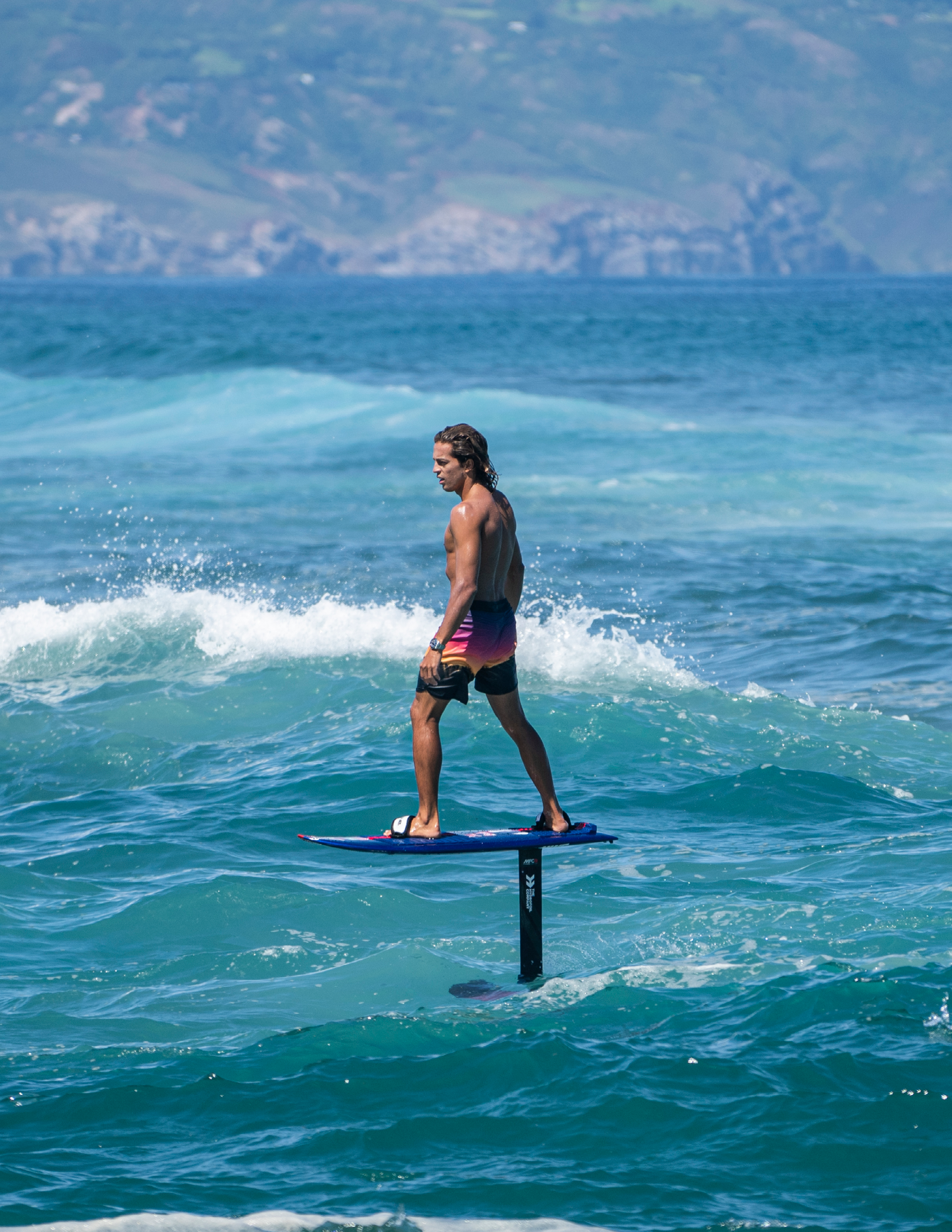

AM: We love to hear that!
As a waterman, you have mastered so many modalities from being a wind surfer, SUP, and more! Why is it important for you to be this versatile and to use the water as such a big canvas?
KL: I just think that I looked at a waterman and a waterwoman as being somebody that can do anything in the water – ride waves from 2ft to 100ft, also being able to go below the surface of the water and to be a fish in a way! So, the ocean really is a place that can provide everything for somebody to survive and to live and to enjoy. I think that that is really a testament to ancient Hawaiians and how they sort of figured out one of the best ways of living life and their whole culture was surrounded by the ocean and not only – very few cultures in the ancient world allowed time for leisure and play and fun. The Hawaiian culture did that so kind of just taking what the ancient Hawaiians did before and fortunately, we live during a time of modern advancements and technology so that all of the toys and the fun equipment evolves and there’s more opportunities to see sort of a different face of the same sort of book or cover. You can ride a wave 50 different ways and it can feel like 50 different experiences, but the spot is the same exact one. So it’s all about perspective and how you come into it and at the end of the day, it’s about riding waves, riding wind and having fun and making the most of our time on this planet!
AM: Well, do you remember your first big wave or what you felt at that time was your first big wave?
KL: Well I mean, going way back, I think that waves are relative you know? When you’re I don’t know, 8 years old and you’re riding a 15ft wave, that’s a big wave! My first wave when I was 4 years old, by today’s standards, it would have been maybe chest high for me now which is very small! But when you’re 4 years old, and you stand less than 2 feet tall, it felt like a giant wave! I think that that’s what I love about surfing and what I love about wave riding in general, everyone is a big wave surfer in a way. You only discount yourself as a big wave surfer when you start comparing yourself to others. Because there is always someone out there who’s going to ride a bigger wave probably. You know?
AM: Right!
KL: It’s not something that you can get in on any given Sunday, there’s a bit of luck involved in getting the single biggest wave, but I have always found that at a certain point, above 50ft, it all just feels the same. It just feels gigantic. But yeah, my first legitimate big wave which would be my career starter was when I was 16 years old and it was at Pe’ahi also known as Jaws, on Maui. It's the Mount Everest of big wave surfing, the best big wave in the world with my heroes, Laird Hamilton, Dave Kalama – they took me up there for the very first time. I was riding a hydrofoil board, but back then it involved snowboard bindings and so the consequences were extreme, but that sort of was the first day of my big wave career and so I have been surging giant waves every single year since!



AM: If you had to choose, what is your favorite watersport?
KL: I think that that is a really difficult one, it’s like, picking a finger for me, you know? It’s like, which one would you want to chop off, you know? I sort of like all my fingers, but you know at the same time, trying to describe the sensation of these sports, is like trying to describe to somebody a color that they have never seen. It’s hard to explain as each one in their own way is very special and unique and in the right conditions, that sport that I would be doing is my favorite in the entire world. Sometimes when you try to force a sport and not in the right conditions, it can still be fun, but it’s not like when the conditions line up. If I considered myself an ocean mechanic, and I had a tool chest of all of these different tools, one wrench is not going to help me fix the entire car necessarily or work on the entire car. So, it takes having many tools to kind of get to the point of riding the wave in the best possible way that I could imagine.
But that being said, if I could choose at this point, the most ideal condition to be in, it would be the culmination of every single sport that I do which is riding a giant wave on a tow-in surfboard going 55 miles an hour – I think that that sport is born of every sport that I do on a daily basis and it’s the type of sport that doesn’t happen every single day. You only get a handful of times per year to participate in something like that. So that’s like the pinnacle or the culmination of every sport that anyone has ever invented in the water.
AM: Wow!
You have competed in a number of tournaments, you surf the unsurfable, and you have such legendary status, what drives you to continue to do this?
KL: I guess beyond the desire to win competitions or to get another sponsorship deal or whatever, it’s the love of actually doing it! I often think that if I lost all of my sponsorships and I couldn’t be a professional surfer or athlete, I’d probably just be working a regular job as hard as I could so that I could literally go do exactly what I’m doing! I don’t think that I would have the opportunity to be able to do the extent of what I do at the frequency, but I pinch myself everyday that I am able to let my mind and imagination go wild! People support me to be able to go do this. It almost feels like I’m cheating at something in life! I try to just work hard every single day to make it happen. It’s something that I would do no matter what. Even if I had all the money in the world, I was the richest person on Earth, my actual life probably wouldn’t change that much. I’d probably not be on social media much and I’d be surfing even more. But for the most part, I’d be riding the same waves and doing the same sports.
AM: Do you have any routines that you do before or after competitions that are always your go-to’s to get in that mind set?
KL: I always try to go to the basics, I try to go to my foundation which is not thinking about the result. Obviously, I know the result that I want which is to be #1! Sort of less about like, comparing myself to others and I always feel that if I put in my best performance, I’m going to win and I don’t necessarily need to compete against anyone because surfing, and the collective surfing sports, are judged so it’s kind of a subjective view and you can ride the way that you want to ride, but at the end of the day, you kind of have to conform yourself to what the judge is looking for. That’s just the art of the game. If you’re playing a game of chess, there's the way that you want to play and then you’ve got to do what your opponent is giving out and you sometimes have to consider your opponent is the judge too. You’re kind of doing a dance with the judges to kind of get their approval.
I think that for me, the lead up to an event, it’s all about doing everything that I can, all of the training, all of the hard work, so that when the day comes, I don’t have to worry. I can fall back on my training rather than feeling like I didn’t do enough. I would say that the categories are, physical training, mental preparation, and then making sure that my equipment and the technology that I got is the best possible stuff that I could be riding. When all of those align, you kind of just have to see what happens. Most of the time, you can come out on top when you do it right.
AM: What is a typical day like when you’re surfing? How many hours a day do you surf?
KL: Before children, probably 8 hours! Now that I have kids and they’re really young, it’s a lot less because obviously, daddy duties and all that! I would say that now, I’ve become a better athlete because of it. In a way, in the past, I would overtrain. I would spend too much time in the water and my body would get fatigued and mentally, I would be drained. It’s pretty intense to be in an environment of these situations, but also just being out so often and pushing your body and never getting a rest day, that also holds you back! Less time on the water has actually meant that I have gotten better, faster because resting is actually training as well. Resting is just as important as lifting really heavy weights or doing your sport. It’s about finding a balance. You can’t be resting too much and you can’t be overtraining.
In a perfect world, I would be out there 100% of my time, but that’s just not the world that we live in!


AM: Clearly, surfing is a total body workout, but are there other workouts that you do either in the water or out of the water to maintain your physique?
KL: Absolutely, you know, it’s difficult when you’re traveling, because you’re just adjusting to time zones and you’re probably spending more time in the water then you have the ability to go to let’s say a gym. The types of gyms that might be around, they may not be existent in the surf world because of the remote places.
When I’m at home, my training routine is to get in the ice bath before bed every night to kind of recover. I have a hyperbaric chamber that can kind of cut down a rest day from 2 rest days to just 1 rest day. Doing hot and cold which is going through a sauna to the ice bath is very important. That’s just on the recovery side of things. I would say, that as far as training and beyond getting the workout in from being in the water, it’s going to the gym and doing different kinds of exercises and working out and actually doing enough heavy lifting with some heavy weights. I would say that it’s not about stiffening up because most people think you have to be as flexible as possible and that’s really important, but you don’t also want to be too flexible because you can actually break joints in the occupation that I participate in. So, it’s building up the muscles around the knees, the VMOs (vastus medialis oblique muscle), strengthening the shoulders, the hips and being able to handle the power of a big wave that crashes onto you. I do that 5 times a week, also going on trampoline training to get bare awareness. That’s a great workout and no more than 30 minutes will do the job! Underwater pool training, so carrying weights underwater and holding your breath simulating a big wave wipe out. It’s hard to – it’s difficult to do all of those things in one day. Depending on the season and depending on the time, you can be very well trained if you play your cards right. They’re all fun activities to do anyway.
AM: What competitions are you focused on for this year that you’re excited about?
KL: So right now, it’s a bit of my off season at the moment. Winter has passed in the Northern Hemisphere and typically, my biggest events are in the winter. But now that we’re in the summer, there’s a lot of opportunities to do some events.
Of course, every event you enter, you want to win. At the same time, my focus is right now riding big waves. One of the races that I want to do is Molokai 2 Oahu which is between one of the most powerful deadly channels in all of the Pacific. I’ve won it 4 times now across different disciplines from SUP to foiling and I’m going to go on a hydrofoil again this next year. That’s a really great test to see where your endurance lies. It’s in the middle of the summer. It’s July 30th, the last Sunday and that’s a good testing block for winter. Because winter is not too far off after that. In between there, if there is a fun and exciting event, I’ll enter. But right now, it’s about the winter time events.
AM: That’s incredible.
It was really enjoyable to watch the first and second season of HBO's 100 Foot Wave which can be seen on Max. Why did you want to be part of this show and what drew you to it?
KL: Well, it’s really cool! I was really honored to be on the 100 Foot Wave show. That being a show that recognized big wave surfers to a mainstream audience when our sport is typically reserved, or at least endemically for who’s riding what – I think any big wave footage that makes it to the mainstream, no one can tell who’s really going down the wave because we all look like specs. I wouldn’t say that I wanted to be on the show, so much as they sort of chose me. I was really grateful for that. It’s not something that you could really force unless you produce the show yourself or someone comes to you. The show wasn't about me, but I was able to be part of it and you know, that legendary figure, Garrett McNamara, is leaving an indelible mark on big wave surfing. His story is unique and special. I’m glad that people are enjoying it. It’s just bringing more eyes to this incredible sport.
The truth of the matter is, riding big waves is probably the most dangerous form of surfing and it’s typically also where maybe, people have the least amount of resources to do it – to support it. The stories that come out of big wave surfing, I’m probably the most successful big wave surfer, but there are so many guys and girls who work hard jobs during the summer months so that they can go surf giant waves in the winter and spend all of their money. It’s really a nomadic, mountain man/woman – it’s just so hardcore and those show really shines a light on the hardest working people in surfing.
AM: What is it about Nazaré that you enjoy being there?
KL: I think that Nazaré is a freak of nature. It’s the perfect combination of monster waves meeting in Europe. I think that if you saw the show, it’s a wave that’s hidden in plain sight. I mean, it was only surfed in the late 2010’s and that’s just kind of incredible because big wave surfers are always looking for the biggest waves in the world to ride. It just so happens that there was one in Europe and in Portugal, a surf rich country that it just came at the perfect time for this town where society and everything it dipped in to, the world supply chain and the small fishing village which once was supported purely by fisherman – it was a dying town. When the surfing world converged into this incredible place, it definitely brought so much new life that the town is now as well known in Portugal as being a fishing village as well as one of the most renowned big wave surfing destinations on planet Earth! It attracts tens of thousands of people per day to go watch these magnificent monster waves. Vertically, they're some of the tallest waves on the planet and some of the most challenging surf that a big wave surfer will encounter. It’s just that the story of the town itself, in a way, is far more interesting than even the waves that are being ridden out there now. It is the one place on Earth that you can go as a big wave surfer and be recognized by people! Most of the time I feel like as a big wave surfer, you’re kind of like moving silently in society before you step outside of the bubble to go ride these monsters out in the ocean. There, it’s a real unique place, and I look forward to going back every year and I count my blessings that I come home safe. Most recently, we had a friend, Márcio Freire, that died there and that was the first death in modern big wave surfing at Nazaré and it was tragic because he was a pioneer and it just goes to show you that no one is safe. You can go and get really unlucky. You just have to put yourself in the hands of a higher power and if you really want it, you have to commit.


AM: Last year, you released your movie Pe’ahi. Why did you want to tell this story?
KL: That film Pe’ahi, was really inspired by part of my life story, partly my director’s life story and I think you know, truly trying to shine a light on the realities of Hawaii, I would say that it’s a yin and yang. On one side, Hawaii gives you the greatest opportunities to become somebody and to do something great. I don’t know if you watch American Idol, but Iam Tongi just won and he is the testament to exactly why we wanted to make this film.
Coming from humble beginnings on the east side of Oahu to being at the very top, I’d say that our film really lines up with his story because that’s a real Hawaiian story. If you play your cards right, you're passionate and you love what you do, you can become the greatest because everyone is looking to Hawaii at all times. But, Hawaii in some ways, is like a third world country. There's a lot of poverty, there's a lot of homelessness – on one side, there’s this billion dollar tourism industry and there’s also locals who can barely afford a tent. Cost of living in Hawaii is just outrageous, especially for the ones that generationally, have been born and raised there.
Instead of just feeling sorry for ourselves, there was this need to try to make a film that would inspire kids who do come from the most humblest of beginnings to go all the way to the top and to be the best at anything that they want to do. Surfing was just a natural vehicle to carry the story. It’s a story of hope and perseverance and working hard to get to where you need to be. It’s just wanting to tell that story that we always knew existed, but that not a lot of people outside of our community, knew existed.
AM: Tell us about the Life of Kai? How did this come about? You’re in your 3rd season which is amazing!
KL: The Life of Kai is basically, adventures that I’m very lucky to partake in. It’s about the people that I’m meeting along the way. It’s not just about showing my best moments, but showing – I wouldn’t say the struggle, but the uphill battles to get to the ultimate goal and if you want to do anything amazing in this life, there’s always going to be a lot of work that is going to need to be put in. There’s going to be the ups and the downs. It’s showing that with perseverance, you can overcome any obstacle and you can do fun stuff and that’s kind of like the whole idea behind the series. I’m sharing this adventure and at the end of the day, it’s about inspiring the next generation and most importantly, being able to entertain people too, you know and letting people be able to takeaway what they want from the show. Not necessarily trying to sell them on anything – not that they have to be a surfer or ride giant waves. If they can see the passion for what I like to do, hopefully, they can translate that into what they want to do.
AM: As passionate as you are about the sport and what you do, you’re also vocal about the oceans and beaches. You’ve partnered with A New Earth Project in this effort. Can you tell us more about this?
KL: I’ve been given so much from the ocean that it only feels like my responsibility to give back and raising awareness is always great! We’ve done so many beach cleanups. It’s only the tip of the iceberg. What I really love about working with the A New Earth Project is that it's not just about bringing awareness, it’s not just about cleaning up beaches and rivers, it’s actually about going to the source of the solution and A New Earth Project is part of Atlantic Packaging which is located on the East Coast. Their whole goal is to change the plastic wrapping that goes around every soft drink or soda that is shipped around the world into something that is environmentally friendly. That company is working on ways to produce product that is not going to affect the end user in any way. The end user won’t even see a change, but behind the scenes, I think that that is the only way that we can save our oceans from plastic pollution. Not trying to get people that don’t really have a real relationship with the ocean to change, why not just change the stuff that has been delivered to them. They can still enjoy it the same way and that’s sort of the thought process.
So this trip that I came to Bali was inspired by A New Earth Project. Bali is one of the most beautiful places on the face of the Earth, but it is plagued with trash when western society reached these islands, everything before that was wrapped in banana leaves. Plates were made out of banana leaves, wrapping food was in banana leaves and traditionally, you’d throw the banana leaves into the river because there are so many rivers here and it would flow down into the ocean and it would biodegrade. It was really a cycle of this place, a cycle of life in Indonesia. Without educating the locals and the public here that plastic will stay for 1,000's of years, there just seems like there is no education behind that. So being able to come down here with A New Earth Project, we got to link up with a lot of local groups that are working to basically educate the people and to kind of figure out a way for waste management. Any plastic that does end up being produced is never going to end up being net zero, can be picked up. Because there is no trash service like we have in the states. So it’s trying to find solutions that help these people and help the environment. We ended up getting in one of the most gross rivers that I have ever been in in my life because they have these nets that catch all of these plastics and we were just loading up bags. That was a real eye opening experience because every time that you travel to a beautiful place like this, I never want to feel that I am just here to take their waves or to take advantage of anything so it really felt good to at least clean up an entire river for the surrounding people that make this place so special.
AM: That’s really amazing to hear!
Travel is such a big part of what you do. Where are your favorite places to go and what do you do when you’re not in the ocean?
KL: Yeah so, of course, my “vacations” are going to waves! My family vacations are just one tropical place from Hawaii to another! Here we are in Indonesia! Truly, I love to go to places that inspire me and people find inspiration in a number of different ways. For me, big mountains inspire me, big waves inspire me, the ocean of course inspires me! I’d say that 2 places that I have been that have had the nicest people that I have ever encountered, which is really a draw and makes you want to be a better person, is here in Bali in Indonesia. I don’t know if people get any nicer! You can literally drop your wallet and I’m telling you, as beautiful as it is, it’s a 3rd world country and there is a lot of poverty. You drop your wallet with $500 in it, somebody will track you down and give you back your wallet and not take any money. That’s just – it can be the Hindu religion here or just be the way that the upbringing is here – everyone here is just so gracious and kind. It’s amazing! If there’s any kind of crime at all, it’s typically, outsiders or foreigners that are causing a ruckus.The other place is Fiji.
Some of the most amazing people and I think that one thing stands out with these 2 places for Bali, Indonesia and Fiji, is that you can be gone for 10 years and you can return and see the same person, and they will remember your name. There’s nowhere else on Earth like that where they will remember you, they will remember the experience that they had with you and a lot of the people in these areas, may not understand the same way as we do in western society, but they are some of the smartest people that I have met – they speak 5 or 6 languages. If they can remember the simplest of things like your name when you return in 10 years, it’s really unique and exceptional. The destination is one thing, but it’s really the people that you meet along the way that make the places that you go to, what they are.

“Life of Kai is basically, adventures that I’m very lucky to partake in.It’s about the people that I’m meeting along the way. It’s not just about showing my best moments, but showing - I wouldn’t say the struggle, but the uphill battles to get to the ultimate goal and if you want to do anything amazing in this life, there’s always going to be a lot of work that is going to need to be put in. There’s going to be the ups and the downs. It’s showing that with perseverance, you can overcome any obstacle and you can do fun stuff, it’s about inspiring the next generation to entertain people too.”



AM: You’ve been sponsored by Hurley for a number of years and have done a number of collabs with them as well. What is it about this brand that is so synergistic with you?
KL: You know, I try to always align myself
with brands and companies that I can relate to or that are equal minded. Hurley really embodies the surfing culture and there is something so amazing and pure about how in a way it is exclusive, but it is also welcoming to anybody.
That’s the one cool thing about traveling
the world because you get to meet so many unique people from different ethnicities, creeds, and just perspectives. We may be in sort of one group here on land, but together in the water, we’re all the same thing.
Surfing, I think, is a really great craft to be able to gather people. Beyond Hurley being a great brand with amazing product, you know, their ethos is, just have fun. That I think, a lot of companies want to be hardcore like surfing is for surfers and that’s attractive to many people, but I have always been drawn to having a lot of fun in the water with people that you don’t even know and sharing this great experience, because like the great Gerry Lopez once said, “the one having the most fun is the best surfer.” I think that Hurley as a brand, embodies that ethos.
I think that if you can go out and get some Hurley stuff – their trunks and stuff, that literally makes you feel good enough that you want to go out there on the water and do something. That’s the whole point of surfing – it’s sharing this experience and sharing this life. There is always going to be another amazing wave and there’s plenty for everybody!
AM: Tell us about the Kai Lenny Paddle Series that you have with Hurley?
KL: I mean, the paddle series that we have created with Hurley, was really inspired by my trip here to Bali, Indonesia in 2021. I learned so much about my surfing and my athletic performance, but I also realized that I needed certain tools to allow me to surf longer and to have more fun so that I didn’t have to be stuck outside of the water with either reef cuts, rash or sunburn! We developed a board short that had a lot of pockets in it so that I could carry stuff like my GoPros, my sunscreen, basically a snack and anything that I needed, but also up to that point, no one had created a board short where the pockets wouldn’t turn inside out and you’d lose all of your stuff or they became more drag in the water as opposed to being hydrodynamic.
Really, the idea was to have a board short that was something that you could wear on land, dry really fast while you go from one adventure to the next! Maybe it even means going hiking in the woods because most of the time, the best boardshort is one that you only use for surfing. Whereas this trunk is amazing for hiking, it’s amazing for even going out to dinner, going out to lunch, or breakfast. You can carry all of your normal things, but then you can go surfing and have something that’s high performance. Then moving to something like the rashguard or the top that we use, it has a hood to protect you from the sun when you’re trying to surf for hours. It has a pocket in the back where you can put sunscreen, snacks, water, food, tools, and then it’s also designed to not give you rash. But it also has a cushion and a protective layer around your body. Again, all of these things are ideas that were put in that I really wanted. I feel like if I needed these things as a professional athlete, everyone can benefit from it. So far, everyone that sees it, wants a pair of both. I think that that’s pretty cool and it feels cool to develop something that people might want to use themselves.
AM: It’s definitely really cool when that happens and to get that feedback from people!
You have all of these different sponsors including Red Bull and Go Pro for a number of years, what do those partnerships mean to you?
KL: I mean, my sponsors, those partnerships, they are the reason why I get to live this life that I do and they all bring something so amazing to the table. For example, Red Bull has been – above the nice paycheck to basically live and to afford being alive - they are incredible at allowing me to have opportunities to up my level of performance and I mean most recently, and we just filmed this for the Life of Kai series, they brought me to the mountains of Alaska with one of the greatest snowboarders of all time, Travis Rice! I’d always been inspired to ride giant waves from and to look towards snowboarders that they’re doing on giant mountains and in particular, with Travis Rice and they made probably a once in a lifetime dream trip come true. The stuff that I was able to learn by riding giant mountains with my hero Travis Rice, is something that – snowboarding is so far removed and different from surfing. Something like that would have never come up on its own without kind of the support from Red Bull. It’s opportunities like that that make me a better athlete and I’m just always so grateful to be part of that company because they’re more than just trying to give an athlete a paycheck, they’re really about trying to help the athlete become the best that they can possibly be and to support them. They do feel like a family at this point.
With my other sponsors for example GoPro, I love GoPro because they give me the cameras to capture what’s going on in my world and bring people into this crazy environment – to take a camera that no other camera could go into.
And so, those relationships, if I go down the list even farther, Cariuma shoes, they have been amazing. They’re this environmentally safe skate shoe that is the most comfortable shoe that I have ever worn. But for every shoe that they sell, they plant a tree in the Amazon Rain Forest because they are based in Brazil. That’s really cool and their shoes being environmentally friendly is awesome and they’re the best shoe that I have ever worn!
Of course, the people that develop my equipment, people like KT Surfing and Goya Windsurfing, they make the equipment that I ride today. It really does take a village to raise somebody and it also takes a village to allow a professional athlete to perform at the highest level.
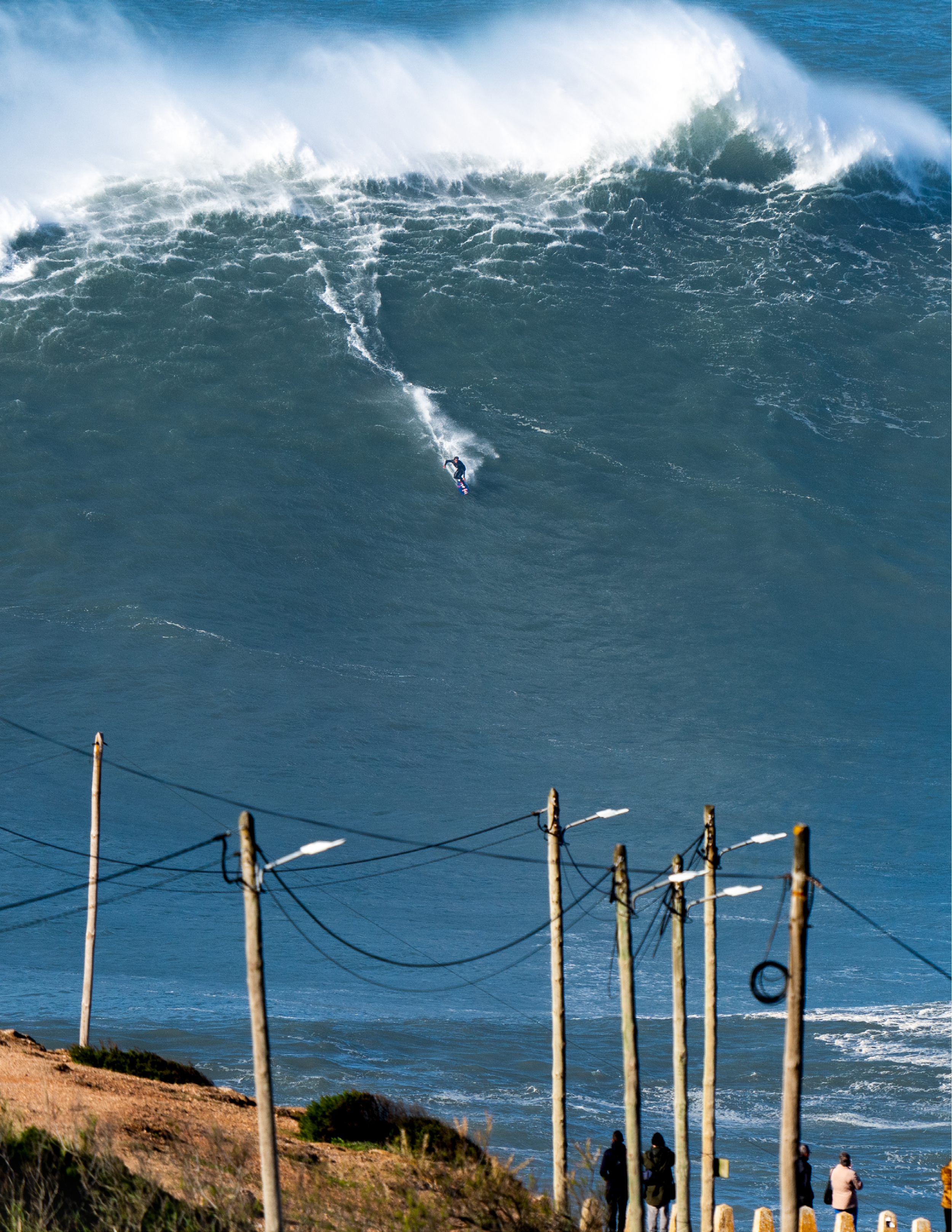
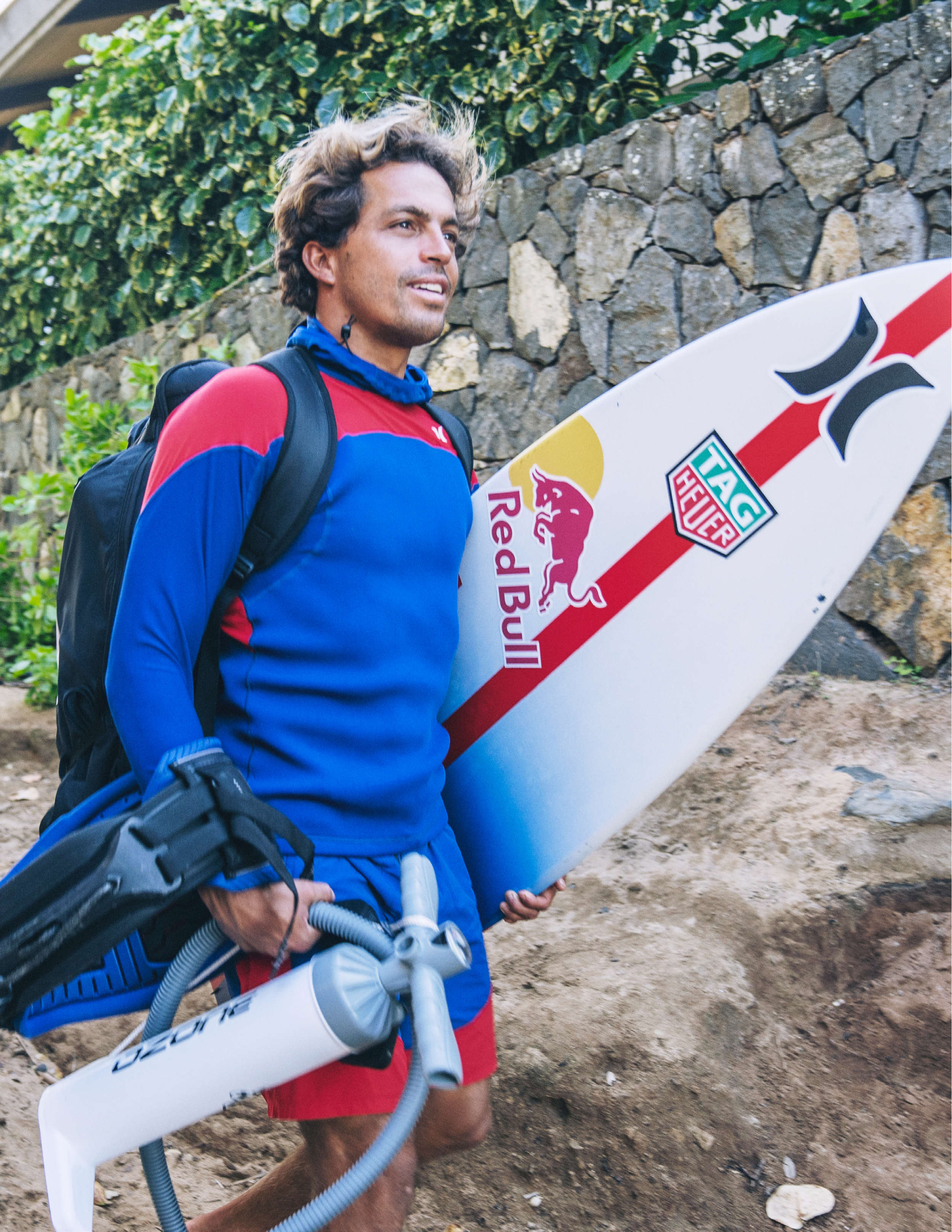
AM: How do you give back to those that are coming up in the sport who are also passionate in it?
KL: I remember being a kid and the mentorship that I had from the best water people on the face of the planet and I'm only 30 years old, but every time I do see a kid that’s coming up, I do try to like help them in any way possible to get them to accelerate their performance or to help them not necessarily make the same mistakes and to basically get them to their ultimate goal quicker. Certain things in life, you have to go through yourself of course and you have to learn on your own before you truly understand it, but you know, I think that at one point towards the end of my career which still seems so far away, being in a mentorship role will be probably more exciting than doing it myself. To see the excitement and passion of kids, that want to become something great whether it’s in the water or not, that’s inspiring. Having that young and excited energy really drives me to want to improve!
I may be 30 years old, but deep down, I’m probably still that same 12 year old kid that is just as excited or even more excited to be able to do what I am doing. It’s really important to be there for the next generation and help guide them through whatever passion they’re going in. The next generation is going to be better than whatever I can be and that’s just how you know a sport remains healthy – when the next generation overtakes the previous. That’s good for sport!
“I think that that is the only way that we can save our oceans from plastic pollution. Not trying to get people that don’t really have a real relationship with the ocean to change, why not just change the stuff that has been delivered to them. You can still enoy it the same way...”
AM: As someone who is always on the go, being a dad, a husband, traveling – what kind of self-care do you incorporate just so that you can be present?
KL: I think it’s being able to really turn off the switch. It’s so easy to be consumed by your quest and your passion. You can definitely feel like all of your focus is going to one thing. I think that the way that you get the best out of yourself is when you get home at night and you can turn that I think it’s being able to really turn off the switch. It’s so easy to be consumed by your quest and your passion. You can definitely feel like all of your focus is going to one thing. I think that the way that you get the best out of yourself is when you get home at night and you can turn that off. I can turn it off and just be a dad. I can just be there for my little girls, be a good husband to my wife, and just basically be able to transition and to have my focus be on my profession and then being able to just do what I need to do at home and do it with love. I think that that is the real trick to finding balance. You can’t overly consume yourself in anything. You may be able to sustain it for awhile, but eventually you might be crashing down. Finding balance is the key to life. So it’s learning when to turn things on and turn things off.
AM: Are there any upcoming projects coming up that you want to share that we should keep an eye out for?
KL: There’s always something coming up, I mean we’re in the middle of the season of Life of Kai and like I said, we just did this incredible trip to the mountains where I was probably the most scared that I have ever been in my entire life. No big wave has scared me as much as those mountains did and so that’s going to be really exciting to share that episode and to kind of share what went down on this incredible trip. I’m really looking forward to the rest of the series dropping.
I’m in the works with new equipment of course and nothing really that’s anything yet, it’s all just ideas on paper, but I’m hoping that by this next winter, I’ll have it all dialed in and figured out and I’ll be able to go out there and do something that has never been done before!
AM: That will be interesting to see!
What do you want your legacy to be in the sport?
KL: I don’t know if you can ever have any say in what your legacy is going to become. That’s almost reserved for everyone else watching what they are going to brand you as. I think that if there is one thing that I would like to leave this Earth being known for is just being able to accomplish things and to do many things that people didn’t think that you were allowed to do necessarily. Having that enthusiasm, that passion and that love and that excitement for the sport that I do. I would say, that as a whole, I couldn’t say the one thing that I would want as a legacy. If anything, it’s to inspire the next generation to do what they love regardless of whether it’s surfing or not.
That’s the same thing that I have as a goal for my kids too! I want to give them every opportunity to be the absolute best people that they can be and to always go for it and sometimes, just taking that leap of faith. So, I think that’s what every great dad wants to be known for is that. Maybe that’s my legacy, raising the best kids I can. I want to be known not as Kai Lenny, but I want to be known as my daughters' father basically – Senna and Willa’s dad.
IG @kai_lenny
PHOTOGRAPHY CREDITS | Front/Back Cover + PG 46 Hurley | PG 16-41 , 48 + PG 146 for 63MIX ROUTIN3S Red Bull | PG 42-45 HBO/100 Foot Wave |
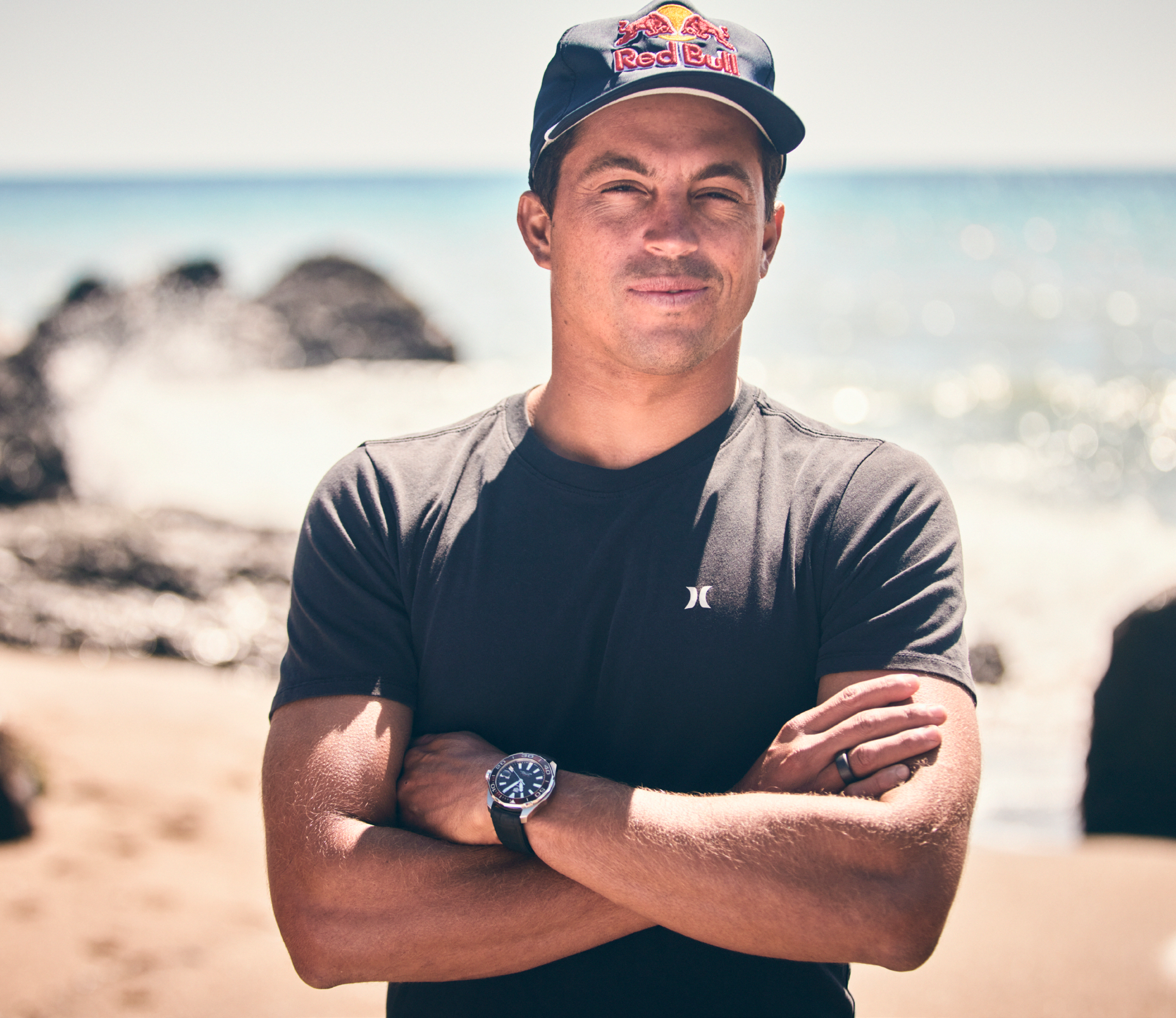


Read the MAY ISSUE #89 of Athleisure Mag and see WAVES OF CHANGE | Kai Lenny in mag.

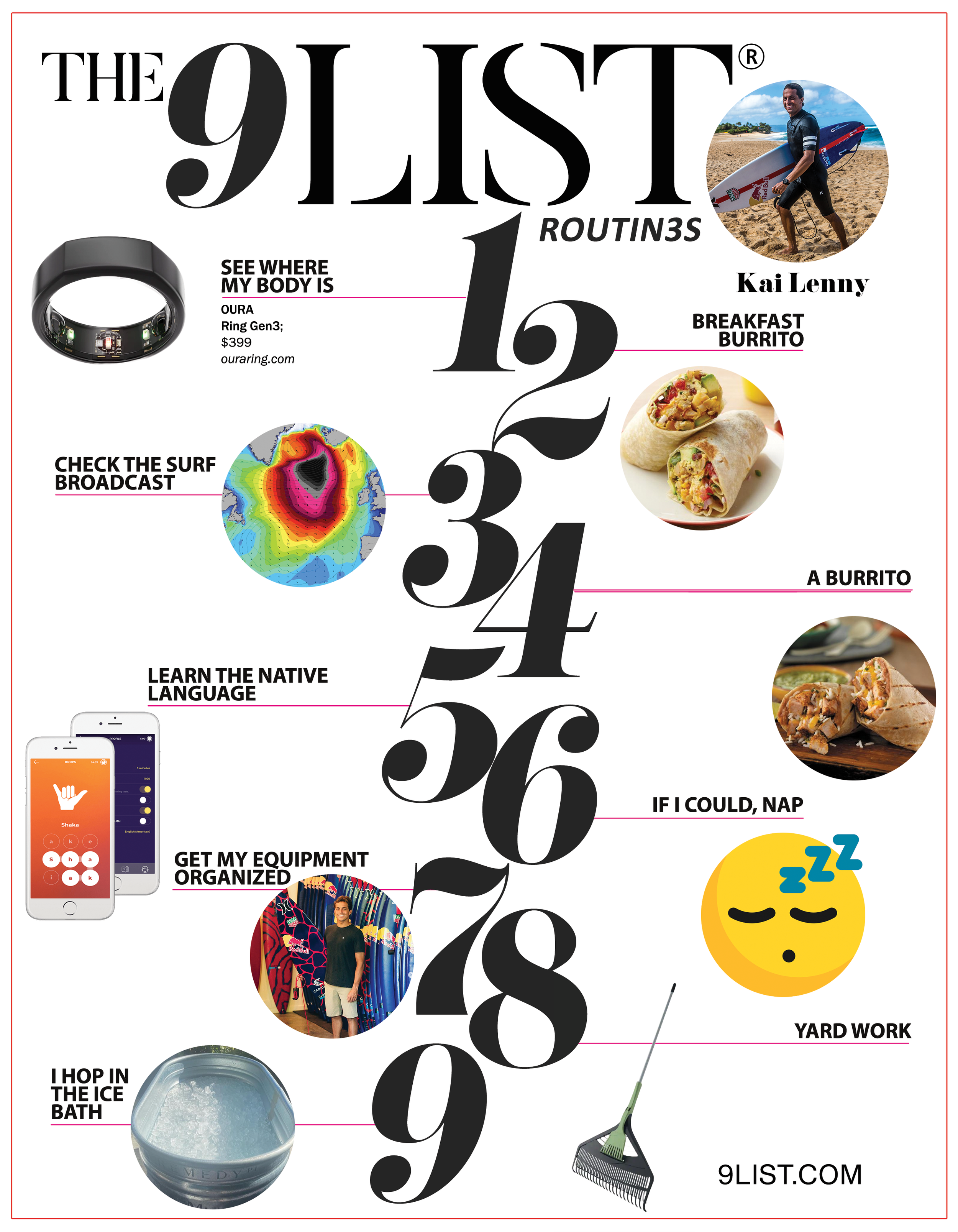
Read the MAY ISSUE #89 of Athleisure Mag and see 63MIX ROUTIN3S | Chef Matthew Kenney in mag.

There is something empowering about seeing those who dominate their area of expertise regardless of the vertical as well as putting good back into the world! This month's cover is 5X World Surf League Women's Champion, Olympic Team USA Surfing Gold Medalist and winner of countless accolades, Carissa Moore. This powerhouse takes to the waves with a focus and competitive spirit that we can appreciate. When we had the chance to talk with her as she was waiting for her call time for the Hurley Pro Sunset Beach earlier this month. We were also struck by how she brought the Aloha spirit with her as she talked about her love for the sport, going pro, walking us through her surfing schedule, her documentary and how she strives to inspire the next generation of women through Moore Aloha.
ATHLEISURE MAG: We’re so excited as we have been a fan of yours for awhile. So to be able to chat with you as well as for you to be this month’s cover, is so exciting and our readers are going to want to know more about you and the sport as well as what you have going on!
CARISSA MOORE: Perfect! Let’s do it!
AM: So when did you fall in love with surfing?
CM: I started surfing when I was about 5 years old and it was my dad who pushed me into my first wave at Waikiki. I think you know that it was a love that deepened over time, but I really fell in love with it at the very beginning. Being in the ocean, spending time with my dad. In the very beginning, it was just something that I loved to do with him and then over time, it became something that was more my own and I just love being in the ocean and it feels like a bit of escape from reality at times. It brings me back to the present moment which I feel like that sometimes, there are so many distractions and our world is going at such a fast speed sometimes that it’s hard to stay present. I think that that is one of the greatest gifts of being in the ocean. Just being here and now. It just brings a lot of joy.
AM: Was it hard for you because you do love it and it’s your passion – to know that it’s also your profession? Do you see it differently and how do you navigate that?
CM: I just feel extremely fortunate and grateful that I get to do something that I love as a profession! You know, the sport has evolved to a place that we can make a living out of it as professional athletes. At times, it’s definitely more intense than others, but what’s the coolest part is that in a jersey or not, I still want to go to the beach everyday and see the ocean which is awesome!
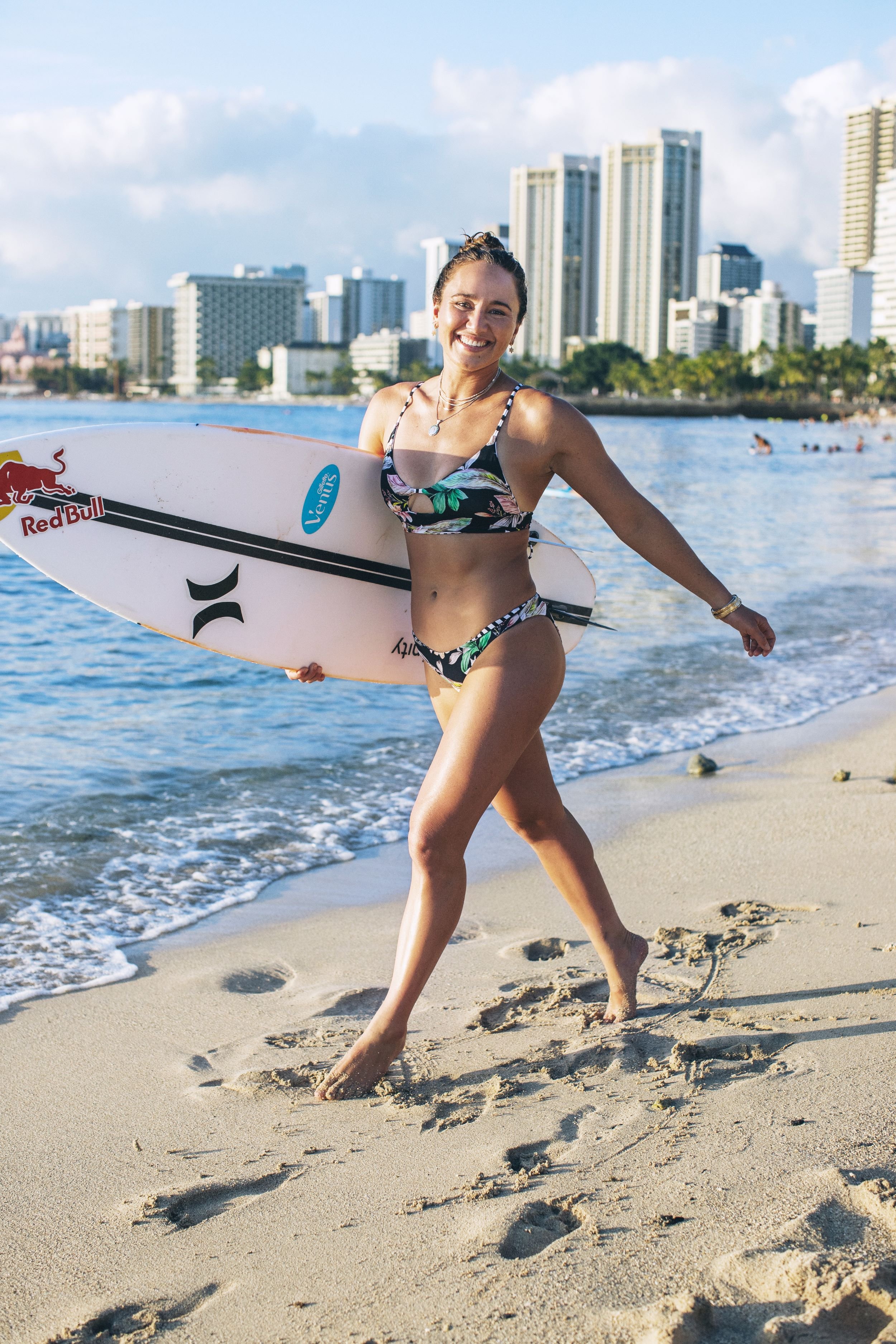

AM: That’s really cool! What’s an average day like when you’re training?
CM: An average day pre season, is waking up early. The crazy part about surfing which you were a little bit shocked to learn is that you’re kind of at the whim of Mother Nature right? So every day, you’re trying to find the best time to surf and whether that’s based on the tides, the wind or the swell that’s coming in and hasn’t arrived yet. Surfing is very fluid as the schedule depends on where the waves are. So I find the best waves that I can train on. I train with an on-land trainer 3-4 times a week and we’ll meet at a park or sometimes a gym at her house for like an hour or so. My day definitely includes a time to eat, refuel and to rest. Rest is very important for me so I like to set up at least an hour a day to read or go for a walk or watch some TV with my husband. Then maybe I surf again in the afternoon or check in with my sport psych so that’s kind of what a day looks like. Sometimes it includes sponsorship stuff or interviews like this!
Actually, between surfing and the ocean, it has taught me so many lessons and that's just one of them. There is so much that’s out of our control so you have to let go and surrender and say, ok, this is what we’re doing today – so yeah!
AM: It’s very cool. So what do you do, in terms of workouts that allow you to optimize yourself in the sport? Obviously, you’re in the water and surfing, but what other kinds of things do you also do to assist with that?
CM: I mean it’s pretty cool that as a surfer, you have to be fit in all different kinds of areas. Depending on what kind of event or wave we’re surfing at, some waves are big and powerful. Like the next event we’re competing at, we’re going to be on Sunset Beach on the North Shore of Oahu and it’s a very big playing field. So I like to say that endurance definitely factors in as well as power and strength, I don’t use a lot of weight, but we have been using a little more weight. Most of the workouts that we do are a lot of bodyweight stuff. I love HIIT workouts, stuff that’s fast paced for me is really mentally engaging, but we also work on agility, strength, cardio and core. I do go to Pilates once a week and incorporate yoga every morning for at least 30 minutes. There are a lot of different things that I do and I kind of do it all.
AM: At the Tokyo Olympics, that was such an amazing Olympics as both surfing and skateboarding were both brought in for the first time for the Summer Games. You won the first Gold medal which is amazing as it was the first time for that sport! What did it mean to you to have that Olympic experience?
CM: It was such a special experience. I didn’t really have that many expectations because surfing had never been there before. So, I was just excited to be part of it all and to be in a team atmosphere and get to go to the Village. Everything was a bigger and grander scale than I imagined. But just getting to be in that arena is the epitome of sports. I think that for the surfing community, it was a really huge moment to be elevated on that level and to get to perform on that platform. As a native Hawaiian, it means a lot to us and surfing is kind of our sport. It was really great to see and be able to get that representation of our people and our sport. That was really cool too.
AM: Are you thinking ahead to Paris?
CM: I kind of think that we all are because this season on the Championship Tour is a qualifying season. So for countries like America, Australia, Brazil, and some other countries, we qualify with our rankings at the end of the year through the 10 events through the season. So we are definitely all thinking about it. It’s really exciting, it will be quite a battle because there are so many Americans on tour and so many Australians on tour – it’s just a focus of doing our best on this season and hopefully it works out.
AM: You’re a 5X World Surfing League Women’s Tour Champion, you’ve won so many different accolades, how important is it to you to have balance and to implement self-care into your mental and physical practices?
CM: Oh, it’s huge! I think that for me, from a pretty young age, I realized how important it was to have a balance. For me, I finished school, I was getting to have a social life and being grounded at home was super important. It definitely gave me an appreciation for the time that I got in the water and it helped me learn how to use my time wisely and to train efficiently. Also, my dad has always stressed to take the time to rest because then you can come back stronger. Taking that time physically and mentally, I am definitely learning over time that in order to love others and to share more love with the world, you have to love yourself and take time to fill your cup so you can fill others' cups. I definitely think that it’s super important to slow down, take the time to appreciate the little things that you have done to improve yourself or to better yourself and it helps to give you momentum and the confidence to go forward.
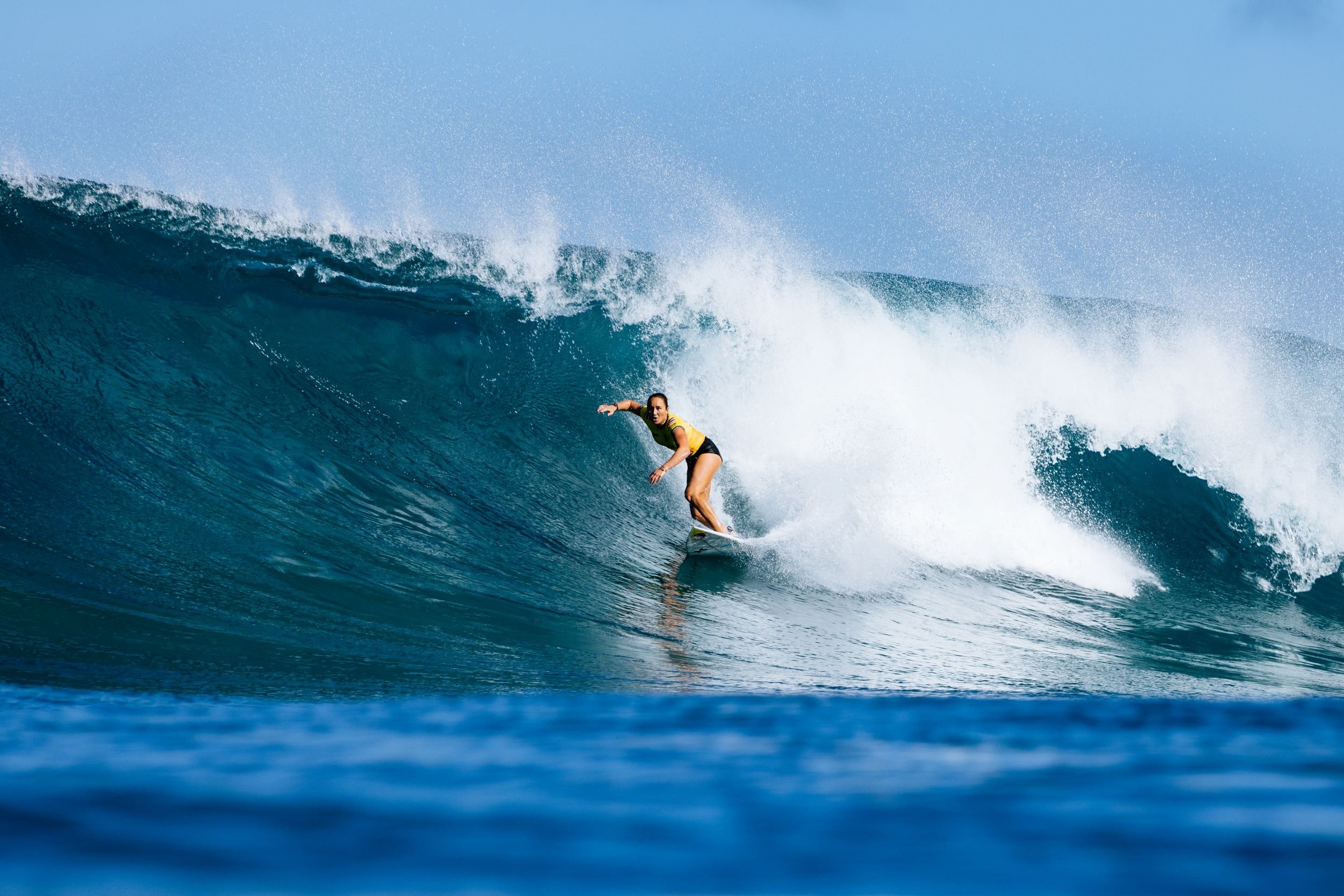
AM: Absolutely! We were just talking about the surfing season. What is the surfing season in terms of when it starts and stops and what are your favorite tournaments that you like participating in?
CM: So our season just started at the end of Jan and goes all the way into Sep. We compete in 10 events and then we have 1 final event. We go all over! So we start in Hawaii, then we go to Portugal, then Australia, California, El Salvador, Brazil, South Africa and Tahiti.
AM: Wow!
CM: We get to go to some pretty cool places.
AM: Um yeah! We want to go!
CM: There are a lot of great ones that I look forward to. I really love Western Australia. There’s something about that place, the raw beauty and there isn’t much fuss. It’s about surfing and getting in the ocean. I really like Tahiti, it reminds me a lot of home and the people there are just full of Aloha and good vibes! South Africa, it’s definitely a bit of a trek but once you get there, the waves are incredible and it's just like awesome!
AM: This month, you’re competing in the Hurley Sunset Beach World Championship, what are you looking forward to in this tournament?
CM: I’m super excited that my sponsor Hurley has stepped up to sponsor a World Tournament event and to see their support of all of us on that level. It’s really cool! I guess that being able to compete on home turf in front of my family and friends on beaches that I have grown up surfing on my whole life is super cool. I think that just trying to push myself competitively and to put forth some good performances hopefully, I’m just looking forward to getting in the water, putting the jersey on and competing at home.
AM: That’s awesome! You were just talking about all of the places that you travel to, because you do so much travel, how do you make your hotel rooms feel like home, and then when you’re on the road, are there things that you like to do when you hit certain cities or do you just focus on hitting that tournament?
CM: Since I have been traveling, you know it’s the 13th year that I have been on the Championship Tour, after doing it for a little bit of time now, out with the hotel rooms in with the Airbnb’s that have kitchens and living rooms – places that can feel like home and feel more homey. Just having kitchens which is so nice because you can eat what you want to eat and know what you are putting into your meals. I think that is super important and just having the room to spread out and train. Because we do have a lot of downtime and we have a 2 week waiting period most of the time. But then it only takes a day and a half – two days to run the women’s event. So there is a lot of downtime. Like you mentioned, the beauty of getting to do this is that we get to go to some amazing places and getting to go sightseeing to really get to immerse yourself in the culture, the people and the towns – it’s such a gift! I definitely like to take those lay days and take advantage to see those places.
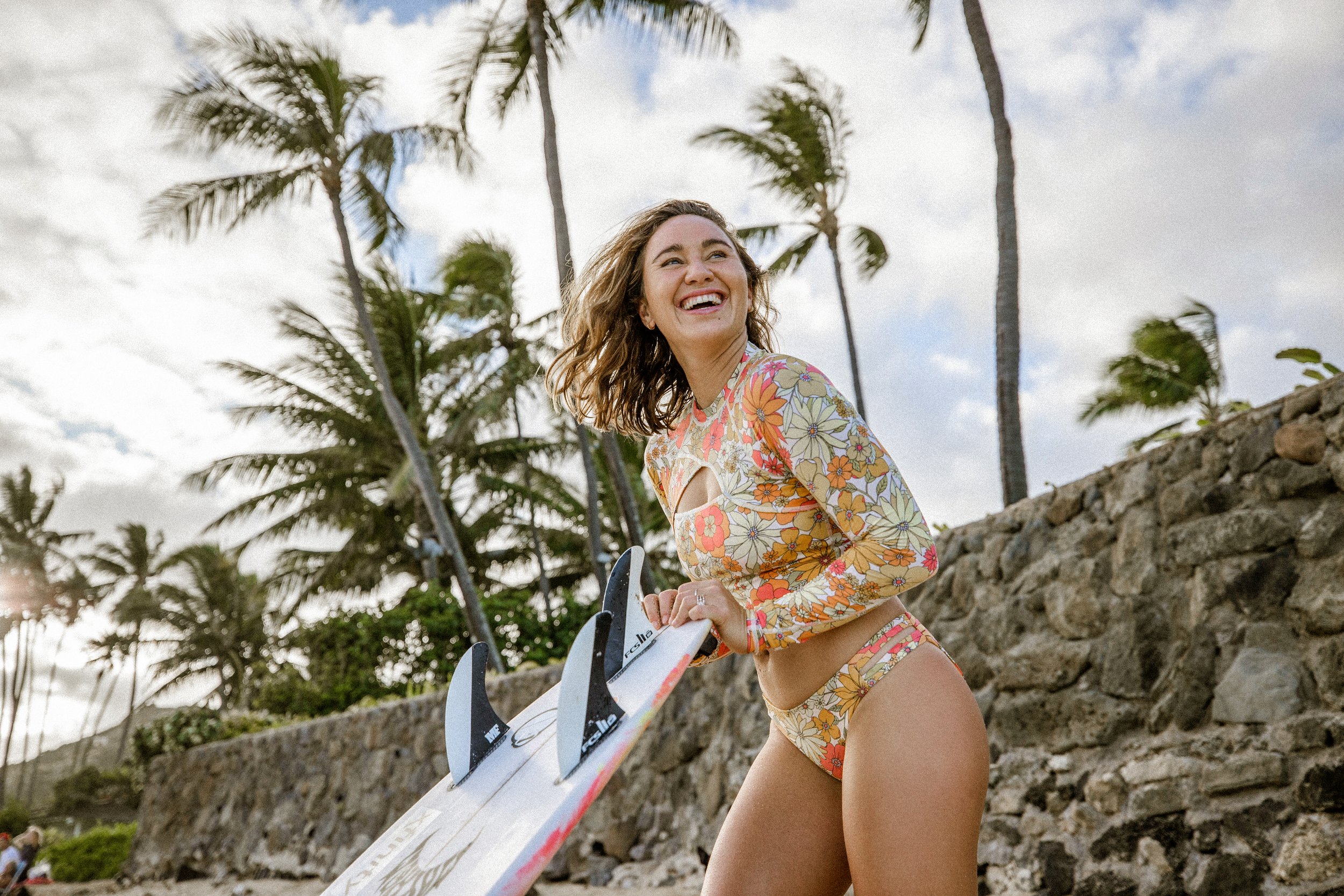

AM: You’re sponsored by Hurley, you have a collection coming out in March. What can you tell us about this as you shot this in your home and hometown which seems amazing!
CM: Ahh thank you so much! This is my 3rd collection with them and I couldn’t be more excited as I think that it keeps getting better and better. This one is super sweet because we actually got to partner with a local artist, her name is JT, and her art name is Aloha de Mele. So all of the prints that are incorporated in the collection are from her. So it just felt really synergistic to get to use my platform to also uplift another woman who is from Hawaii and is very talented.
Look her up, her artwork is amazing.
I got to work really closely with the team at Hurley to create designs, patterns and colors that are really important to me as well as silhouettes that are very feminine, very beautiful and flattering, but also super functional. I think that it’s really come together in this line and it’s a quality line. Like you mentioned, we got to photograph the collection at home and we actually did it in my backyard!
AM: Oh nice! We’ve had the pleasure of doing collaborations and there is nothing better than when it’s something that comes from you and your home, your backyard – that is so cool!
CM: Thank you so much! I can’t wait for you to see it. Hopefully there are a couple of pieces that you like from it that you can wear!
AM: Oh yes! I’m sure. Also as fashion stylist, it’s always fun to see items that you can style into shoots that we work on!
CM: Sweet!
AM: Yeah! Obviously at Athleisure Mag, we love things that are functional but when it’s great for transitional wear – life just moves so quickly, you want to be able to be prepared for anything. So I love anything that’s like that!
You had the Red Bull documentary, RISS. A Film About More Love with Carissa Kainani Moore, that talks about you and your life. Why did you want to do this and how does it feel to have your lifestory available so others can get to know more about you?
CM: Thanks for checking it out and bringing it up! I have always wanted to do a fun piece and it was important to me work with a director like Peter Hamblin who had kind of a different eye and an approach to things. It was super fun to work with him, we got really close in the process so it didn’t feel like it was really invasive at all. It was like just hanging out with one of my friends.
I think that those kinds of things, when I’m watching sports docs or sports movies on incredible athletes or athletes that have an inspiring story, it’s cool to see that they’re human, that they’re relatable and they’re tangible. I think that there is something so inspiring about someone being vulnerable and open. I’ve found that through other people sharing their stories. If it can help 1 person that is going through something, that’s the goal. If someone can relate to the story or take one little thing from it, that would be awesome.
AM: I just watched a sports documentary with NBA Legend Bill Russell last night. I’m always watching things like that. It’s great to get to know more about the sport but you get to see it and the person in the time that they grew up in. You then get to see how things have changed or progressive movements, it really lets you realign yourself and think about things in a different way.
CM: Totally!
AM: So when you’re not surfing, how do you take time for yourself?
CM: Number 1 is hanging out with my husband! He’s my pride and joy.
AM: You guys are so cute!
CM: He’s actually right here. It doesn’t matter what we’re doing. It doesn’t need to be much. Just hanging out with him and the dogs makes me super happy. My family lives really close to me so my sister, my mom, my dad, my grandparents so being able to check in with them and I still have some friends that are still in town. I think that surrounding myself with good people makes me really stoked and besides doing that, other things that make me stoked and fill up my cup, I started a charitable foundation, Moore Aloha in 2018. So, I spend a lot of time in investing in how to make it grow, grow programs and events that can make a positive impact on the next generation of females which is something that is near and dear to my heart.
AM: Are there projects with Moore Aloha that we should keep an eye out for?
CM: You are so sweet – thank you! I’m in the middle of competing and stuff so the bandwidth is pretty low at the moment. What has been fun is that we’re doing more online things. So we’re doing essay prompts where people are awarded scholarships every month; we just launched our first paid internship program this year; and we just did our 1st 6 week internship program with a former professional surfer Megan Abubo. So being able to connect the dots and create those meaningful mentorship programs for young girls is something that while I’m competing, I’m hoping to do at the same time! When the season is done, I have some really cool fun in person events planned on Oahu and in California. Hopefully, depending on if I make the cut, there’s a cut mid-season, so if you make the cut, you get to do the second half of the season. I would really love to be able to do an event before South Africa.
AM: Wow!
CM: Yeah! So if you want to be able to check anything out, please check out our website Moore Aloha.com.
AM: You’re a fan of scrapbooking. When did you start doing this and how do you approach putting one together creatively?
CM: I started scrapbooking in 2011/2012, but it was pretty close to when I started competing on the tour. You know, you lose more than when you win in this game. I think that for me, It was really important to be able to look back at all of the wonderful things and experiences that I had that still made the trip worthwhile. Because it’s easy to look back at an experience that you didn't win and say, "oh crap, I lost." But in reality, there is so much to be be grateful for and so much to celebrate. So it’s a little bit of time that I get to reflect and to see that we did this, you did that and even though I didn’t get the win, all of these other amazing things happened.
My process is, I don’t know – I get it all out and make a mess with stickers and colors. I get my scissors out and then I just lay out all of the photos and then I slowly just have them fit together like puzzle pieces.
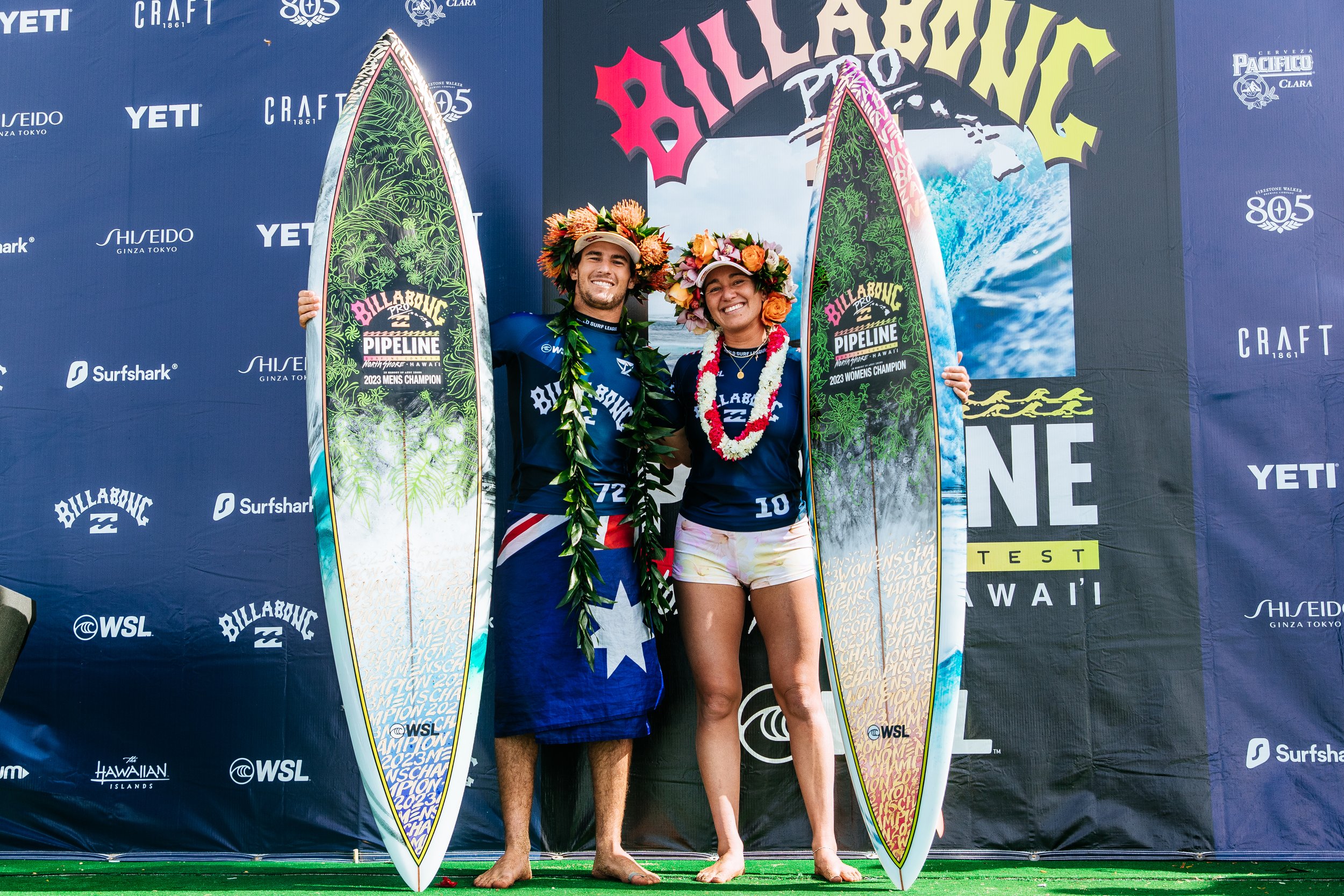
AM: What do you want your legacy to be in the sport and even in life in general?
CM: Oh gosh! My legacy! I think that through my surfing, I want people to feel something. I think that the greatest athletes, at least for me in watching the greatest athletes – you can feel the joy. You can feel that they are having so much fun and love it. In return, it sparks that passion in yourself. I hope that I can leave that feeling with people. Not necessarily the wins, but how did I make them feel. I hope that if I can encourage people to just be kind, loving, patient, understanding and more empathetic with each other – that would be a huge win, you know? It’s like carrying that Aloha spirit. Aloha, I’m sure you’ve heard of it. It’s so hard to put into words.
AM: I was just going to ask you if you could put it into words?
CM: Yeah it’s something that I grew up with and It’s engrained in me from my childhood. Just being in Hawaii, it’s how you treat people with this unconditionalness and not wanting anything in return. There’s no judgment, it’s being open and I think that if we can do that more with each other and the world around us, I think that there would be more harmony.
IG @rissmoore10
PHOTOGRAPHY CREDITS | FRONT + BACK COVER, PG 19 + 25 - 28 Hurley | PG 16 + 31 Billabong Pro Pipeline Jan 2023 - World Surf League/Tony Heff | PG 20 + 22 Hurley Sunset Pro Beach Feb 2023 - World Surf League/Brent Bielmann | PG 32 Red Bull |



Read the FEB ISSUE #86 of Athleisure Mag and see RIDING THE WAVE | Carissa Moore in mag.

The importance of sport brings people together as they accomplish amazing feats, learn the importance of being dedicated to their passion and continuing to push the sport. Chloe Kim is one of our favorite snowboarders who is the first female to have won a back-to-back Team USA Snowboarding Olympic Gold Medalist in Half Pipe, ESPY winner, 5X Gold Medalist of the Super Hald Pipe in the X Games to name a few. She's also been included in Mattel's Shero Barbie, appeared on the box of the special edition Kellogg's Corn Flakes where this version was the fastest selling cereal box in Kellogg's history, made it to the semi-finals as the Jellyfish in FOX's Masked Singer and in March 2022, she was added to Fortnite as a playable character as part of the game's icon series.
ATHLEISURE MAG: We’ve been a fan of yours for years. When did you start snowboarding and when did you realize that you wanted to do it professionally?
CHLOE KIM: I started snowboarding when I was 4, my dad actually took me up to the mountains because he wanted my mom to go, but she didn’t want to go. So he took me and he told her she was a terrible mother if she didn’t come so that ride turned into a professional career somehow!
But I think at the age of 6, I started competing at junior events with other girls my age and I started winning these events. My parents saw that I had potential and funny enough, they knew nothing about snow sports and so that was the only measure of my skills and to see how good I was. Shortly after that, I started training and now I have 2 Olympic Gold medals.
AM: Which is amazing! You’re the first female ever in the Olympics to win your Gold medal back-to-back in the Half Pipe. It’s always fun to see you out there! What are some of your most memorable moments from your career?
CK: I think that my most memorable moments are that they're always the firsts. The first time on a snowboard or the first time I won a contest, my first time traveling for a contest! All of the firsts are so memorable to me because I never expected my life to look like that.
Everyone was always like, “oh I don’t know what to do about my future,” but I always knew what to do in my future you know? This is what I wanted to do and it’s pretty cool.
AM: We’ve been a fan of Mucinex and we’ve been using it for the last 10 or 12 years as it clears things up which is amazing. So it’s great to see that you are partnering with them. How did you come on board for this project and tell us more about the “Small But Mighty Campaign.”
CK: I was super excited to partner with Mucinex on the “Small But Mighty Campaign,” and recently, I had the flu. My Mucinex Fast Max just really helped with everything that I had going on. I had a bunch of sinus things, my nose was running like crazy, I had the worst sore throat and it was just this tiny dose that I took, it was so much better! I felt like a human again – so this works. I highly recommend the Mucinex Fast Max whenever you’re sick, because it saved my life.
In addition to that, Mucinex is partnering with me and supporting 5 YMCA chapters with donations totaling $100,000 in 2023. I think that that is kind of why I decided to partner with them as well because they are giving back to these communities in need. That’s very important to me.

AM: That messaging is awesome as well. How do you see that message “Small But Mighty” in your own career?
CK: Yeah, you know that I think that “Small But Mighty” really resonates with me as a young woman who has always been looked down on or no one really believing in me on where I am today and proving everyone wrong has been my favorite part about my career! It’s like ha ha – look at me now, you know? I think that my career has always been about breaking boundaries and stereotypes and all of these things. To see how big of an impact that I have been able to make in other people’s lives and to also be able to change people’s perspectives on women in sports as well. Seeing how big of an impact that I have been able to make is incredible.
AM: You’re always doing so many things and it’s great to see it on IG as well. What are some things that you’re working on this Spring or things that we can keep an eye out for?
CK: I am relaxing as I’m exhausted. But you know, I think that I have just been trying to figure out what I want to do post snowboarding career as well. Knowing that I can partner with brands such as Mucinex for their “Small But Mighty Campaign” makes me really excited about the future because I see how the impact of my career can help these communities. Especially with this one as I started with very humble beginnings and knowing how this kind of support from these brands and how they care about our communities is really important because we had a really hard time when I started out. Snowboarding is not cheap, you know what I’m saying? I received a lot of support through a few charities and organizations so this means a lot and also inspires me to want to do more.
IG @chloekim
PHOTOGRAPHY CREDITS | 9LIST STORI3S PG 36 - 39 + PG 140 - 145 ROXY

Read the FEB ISSUE #86 of Athleisure Mag and see SMALL BUT MIGHTY | Chloe Kim in mag.
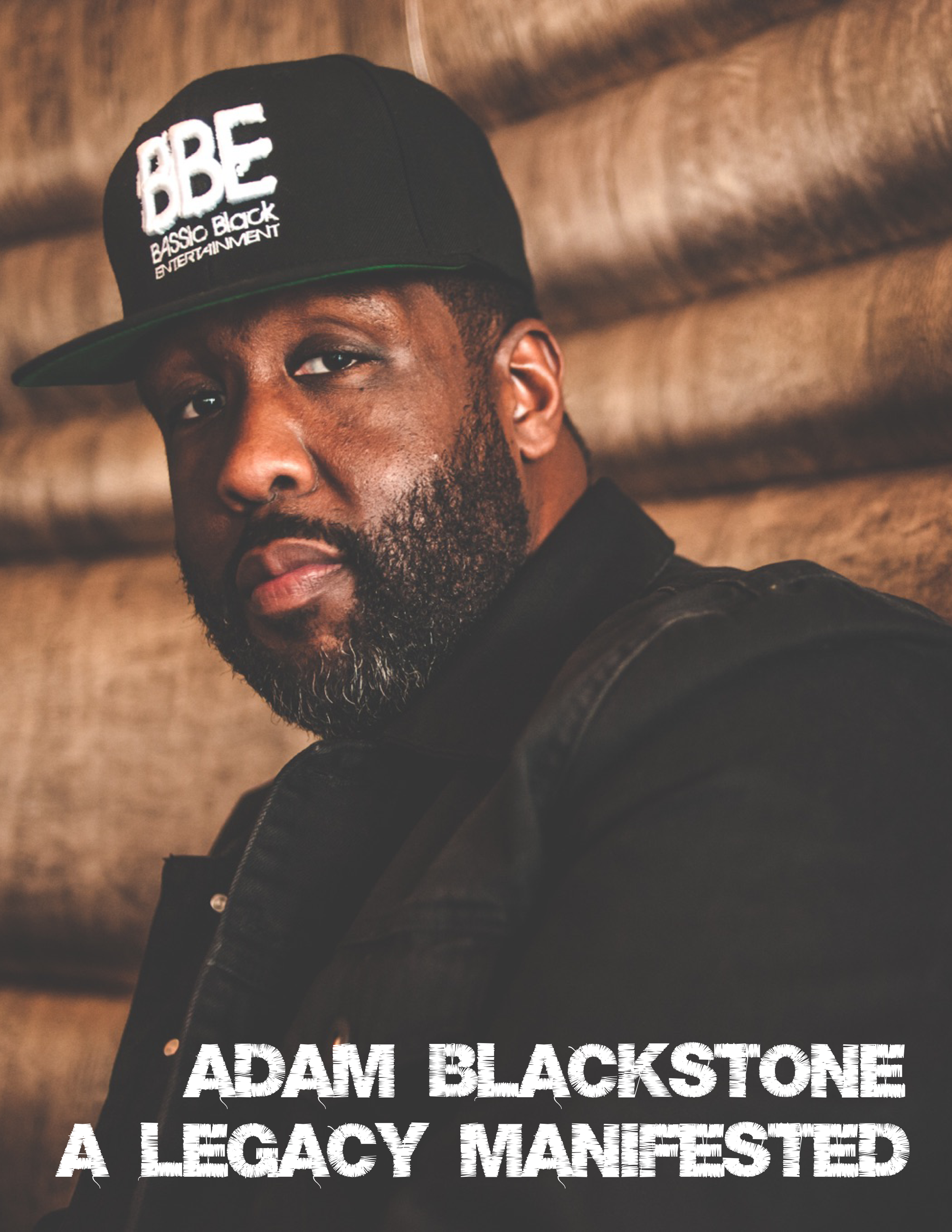
When we watch our favorite performances, there are so many people involved that make these shows come together. The Music Director has a birds eye view and is integral in making sure the components come together, keeping all the teams in lockstep with one another and being able to translate the artist's vision to what we see.
When you have a MD that is also musician and can play across genres, you really have someone that is multi-talented! We caught up with Adam Blackstone a bassist who has performed with Jay-Z, Dave Chapelle's Block Party, Justin Timberlake, Janet Jackson and so much more. He has also been the MD for a number of the entertainers above including Nicki Minaj and Rihanna - sometimes playing with these artists and more. In addition, this man has been the MD behind the historic Pepsi Super Bowl LVI Halftime Show featuring Dr. Dre, Snoop Dogg, Kendrick Lamar, Mary J. Blige and Eminem and will be back again when for the Apple Music Super Bowl LVII Halftime Show with Rihanna hits the stage for this moment of sports meets music. In this position, he has helmed the OSCARS, NBA All Star Weekend, The Masked Singer and more.
In addiiton to being in the industry for decades with a coveted list of talent that he has worked with, he just released his debut album Legacy last fall and his single 'Round Midnight’ with Jazmin Sullivan has been nominated for a GRAMMY which takes place next month! To ensure that he can continue to grow his brand and fingerprint on the industry, he also talks about how he supplies an array of talent from musicians, engineers and background singers to our favorite artists through BASSic Black Entertainment.
With some busy days ahead, we wanted to find out about how he found his way into the music industry, his love for bass, being a musician as well as a MD and what he has coming up.
ATHLEISURE MAG: What was the moment when you fell in love with music?
ADAM BLACKSTONE: That’s a great question! I think from birth! With my family, I was always surrounded by music, my father is a musician. What we would call today, probably a wedding band singer, but he did weddings, bat mitzvahs, church services, banquets, and all of that. Then, growing up in Black church, my mom and my family was heavy into choir and music ministry. I think that early early African American church experience allowed me to see the power that the music played in the emotional and psyche of human beings in general. Fast forward to me going to high school and getting some jazz band awards and all of the accolades and the praise and being a little bit turned on by that as well. It made me want to excel and to show Black excellence. Of course, fast forward to really my first major major gig was Jay-Z on stage at Madison Square Garden. There was nothing like that feeling! So those 3 instances for me were very much spread out, but were very much so similar feelings you know?
AM: Yes. What drew you to wanting to play bass?
AB: Funny story, I started as a drummer. I think every little Black boy in church as a musician wants to play drums. When we moved to a suburb in town - Willingboro, NJ, again, the band teacher who was white, I’ll never forget when he said, “listen, I have 14 drummers. I heard about your family, I hear about your musical lineage that you have and our band is missing a bass player.” This was in 2nd grade and he said, “I would love if you would switch over.” I said, “hell naw, I’m not doing that bro!” This was back in the day when you had to walk to school and all of that and I wanted to walk with my drum sticks – I didn’t want to walk with a bass! He talked to my parents and we made the switch and honestly, it was one of the best decisions that I had ever made of course!
So that is what introduced me to bass and that instrument in general allows me to be the foundation and the root of all of the chords that are being played. I learned that a little later on. Drums is the rhythm, but bass is really the melody and it controls the chordal structure. Me being the future MD that I was, I think that I like a little bit of the control!
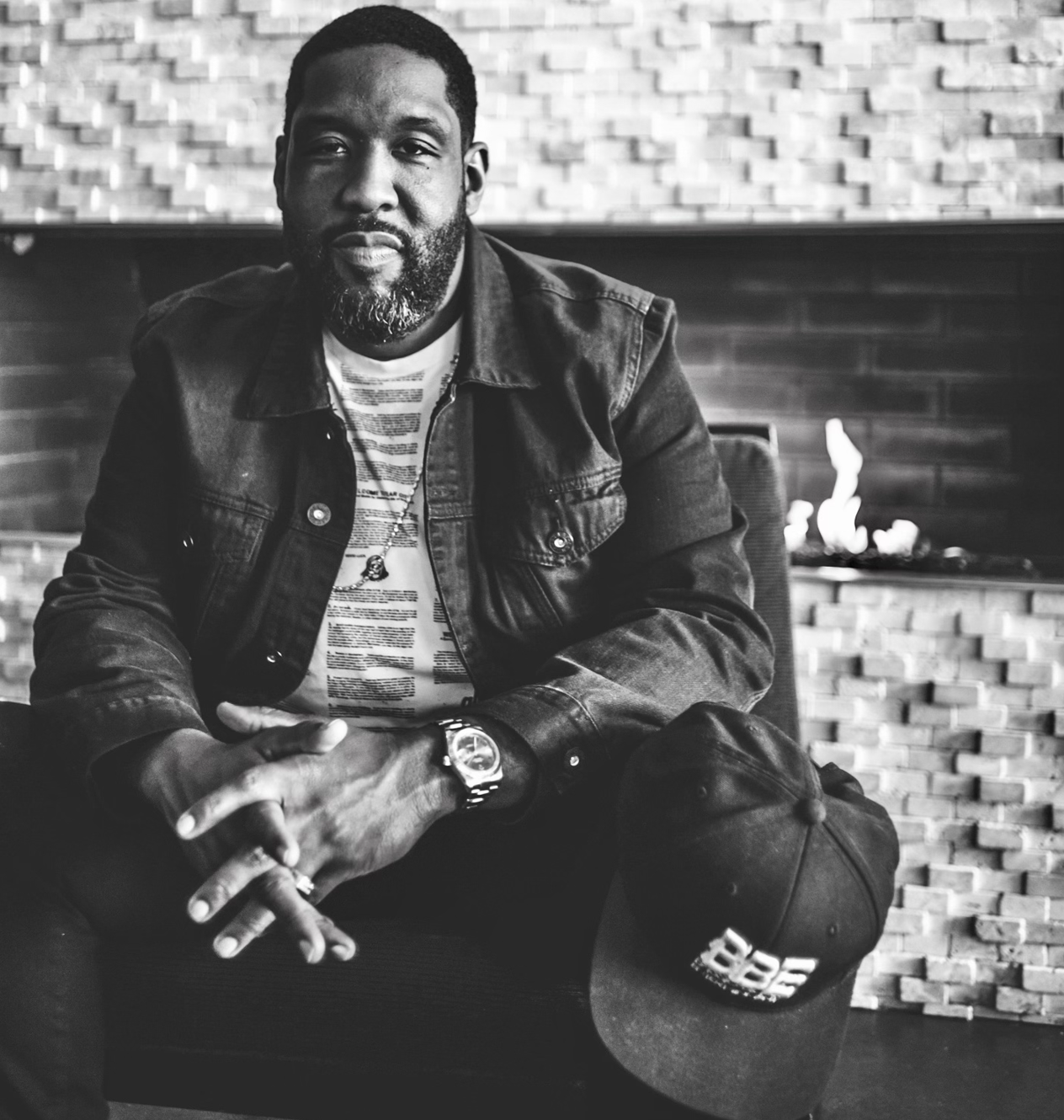
AM: I like how one decision really made all the difference!
You have worked with so many people from Rihanna, The Roots, Justin Timberlake, Maroon 5, Jay-Z and even across genres.
AB: Yes!
AM: How do you approach when you’re working on these projects as they all have different needs and different focuses in terms of when you’re coming in as the musician role.
AB: I think that the biggest thing is that they allow me to be able to be myself, to be creative, allow me to present them with ideas, but also knowing that I am protecting them. They know that I am taking their vision and just trying to enhance it a little bit. As musical director and crossing genres specifically, it’s not about my vision, it’s about the artists’ vision. We’re all a team. If they win, we win. If they’re hot on stage, if their tour is hot, it allows for more opportunities for me as well! So, I always pride myself on asking the artists what they need, what they want and how I can be a vessel to enhance that vision across genres, that respect is given and so they allow me to, you know, continue to be as successful as I am.
AM: Tell me about your debut album Legacy which came out last fall!
AB: Yessss Legacy, Legacy! It was a labor of love for sure! We all went through that pandemic, and you know, we lost some folks. I lost a couple of good friends of mine, I lost a cousin and going through to their services, I realized that I didn't want to leave this Earth with a laptop full of ideas – you know what I’m saying? I heard Jazzy Jeff say, “leave here empty.” So, I was really inspired by loss and I buckled down for about 40 - 45 days and returned to my roots and one of my first loves is jazz and really progressive jazz. I decided what songs I wanted to do and really saw which artists were being impacted by me for a long time and how they wanted to pay it back to me by hopping on my album. Everybody from Kirk Franklin to Mary Mary to Jazmine Sullivan to Jill Scott to Queen Latifah. The list goes on and on! I made that one phone call and they said, “absolutely, whatever you need,” because they know for the last 20 years, I have answered their phone calls and said the same thing. You know what I mean? It’s what I like to call, Relationship Equity! It’s been really cool. We went Billboard #1 on Legacy, the single got a GRAMMY nomination, we are Image Award nominee now for 2023 and going on tour opening for Jill Scott this spring. I’m very excited about that that Legacy continues to hopefully impact people and to become part of their legacy as well. I really did it to inspire.
AM: That is amazing and I really love when you are talking about Relationship Equity, as I have definitely dipped into that pool many times and let them know that for the times I reached back, I needed it for what I was working on.
AB: Even with that, to the right person, you don’t even have to say that because they know what you’ve done and the value that you have added to their legacy, you know what I’m saying? I’m very grateful for God giving me the foresight 20 years ago, didn’t know I would be here doing a record. I was nice to people, I was a good character person, I had integrity and so now when I make these calls, it’s been no issues. I’m super thankful for that!
AM: So are you thinking about your next album?
AB: Legacy 2, I’m definitely thinking about it for sure!
AM: In addition to being an artist and a musician, you’re a noted Music Director. Can you tell us what a Music Director does?
AB: No problem. As an MD, my job is to curate everything live music oriented from stage, to lighting, to choreography, to programming – basically build that live experience for the viewer. So it starts by me sitting with the artist and seeing what story that they want to tell through their set list. Sometimes we have 2 hours and then for things like the Super Bowl, we have 13 minutes, you know what I mean? From there, I do a lot of hiring of the band, backgrounds, engineers and then I rehearse the band and then it’s everything from me going to choreo rehearsal, lighting rehearsal to make sure that their cues line up with the music cues. So that gives that total overall experience and that’s essentially what a music director does from arranging, to scoring to creative on the stage.
AM: When you’re doing that, is it hard for you to wear two hats when you’re actually playing as well as being the Music Director?
AB: That’s a great question. I have to be honest and say, that it’s easier for me to be able to do the two hats because I speak through my instrument. That allows me to have a little bit more of a fluent language if we use that analogy, because I can get the ideas out while playing. Sometimes, if I’m just coming in to oversee and there is another band like Maroon 5 or something like that - when I do Tim McGraw, he has his own band, it’s like I have to adapt to their language. Either way it’s cool, but I have to say that the two hats actually because of my musicianship and I’m thankful for that, it lets the MD job be a little easier for me!
AM: It’s amazing to think about the fact that you were saying that whether someone is going on a tour, last year’s halftime show for the Super Bowl and you were also involved with The Masked Singer as well which is a TV show. That’s a lot of hats to juggle, so how do you say, ok if this is a tour – it’s this way and a TV show is another way and then when you’re doing the halftime show which was ridiculous –
AB: Thank you so much!
AM: We just watched the documentary, The Show: California Love, so being able to see the behind-the-scenes as someone who is a fashion stylist and the Co-Founder and Creative Director of Athleisure Mag, I have such an appreciation for how all of those things come together and it’s nice to see how that all took place.
AB: I think that the biggest difference is trusting myself and trusting the process. When it comes to the creative, I started as a touring guy so a lot of times, the touring aspect comes a little easier to me and I’m a fan of music. So I know what the viewer wants to see/hear. When it comes to the television show whether it’s The Masked Singer, The Four, BET Awards, The Voice – things like that, we’re making television so how do we want to sustain people’s interest by watching the show? How we do that is by making very impactful moments happen in a very short period of time. That’s different then the tour, because you want to elongate the moment so that you can stretch out people’s attention span – you get what I’m saying? It’s a different hat to wear, but at the end of the day, it’s about entertainment and I am happy to be a true entertainer in the sense of the musicianship of it.
AM: This year, you’re going to be back at it again with Rihanna’s halftime show for the Super Bowl. What can you tell us about this show and anything that you can share as we’re all so excited!
AB: No doubt, I’m excited to be a Co-Musical Director this year with my partner, Omar Edwards. He’s another Philly guy and we are going to set the world ablaze! Riri has had the superpower of all her career of being Anti, no pun intended! So, what that allows us to do is for us to think completely outside of the box. I can’t give you too many more details to be completely honest, but I will say that it’s going to be a whirlwind experience for that 13 mins for sure. I think that the people will love it for sure. I always like to call it the Super Bowl catalog of songs so I promise you that you will hear your favorites!
AM: Tell us about BASSic Black Entertainment and what it offers to those in the music industry.
AB: Absolutely, BBE we call it for short, BASSic Black Entertainment was founded by myself and my beautiful wife, Kaisha Blackstone. At a point in 2008/2009/2010, my stock as MD was rising and I was not able to be in multiple places at one time! So, the artists trusted me and said, “hey, even though you can’t be there. Can you set it up for me, hire the personnel?” I said of course and knowing that these people shared the same core values as me musically and personally, character and integrity as well – at one point, I had over 250 musicians, singers and engineers collectively out on the road with different tours. My wife said, “ok guy, hold on. Let’s figure this out.” How can we not just monetize because it wasn’t about that, it was about creating a structure for these people. I kind of was like calling them up, doing the music and then throwing them out with the wolves per se in my earlier career. But once we set up BASSic Black Entertainment, there is a structure, there are tour managers, there are rates in place and everything that allows people to be able to come to work and maximize their jobs for the potential to be a musician and to not have to worry that anybody will take advantage of them. They also know that the BBE brand is represented as well so it’s all with excellence.
Right now, we are a music staffing agency, we have now branched into the record label industry business as well with BBE Records and we will continue to not only put out music, and new artists, but also support tours. Right now, I have a BBE band out with Jeezy, a BBE band out with SZA, a BBE band out with Ari Lennox, we’re doing great! For myself, I’m opening this spring for Jill Scott, so that is going to be a great experience as well.
AM: I mean, you have so many plates that are spinning, all those projects, prepping for your spring tour, going to the GRAMMYs next month!
AB: Yesssss!
AM: Congratulations on that! You have the halftime show coming up – how do you take a moment for yourself in terms of self-care and making sure that you can kind of refill your cup or at least partially?
AB: I’m about to give you some exclusiveness! I like to just disappear from rehearsal for 3 days and to see my kids! Family first over everything to me! If I have their blessing to go out and be great, that allows me to remain creative and to operate in my most maximum genius. If the home structure is not cool, I’m coming home – you know what I’m saying? Even if home is cool and my stomach is not cool, or me missing my family and my wife is not cool, I’m coming home so that is how I replenish myself. I kiss my babies – I love on my family. I bring them out with me when I can. They support me in all I do, it’s been a sacrifice. It’s a sacrifice not only for me, but my wife as well. I’m just so thankful that I have a strong woman like that to hold the fort down, be at the crib – she knows that I’m out here building a legacy for our children. Hopefully, for her to be proud of as well. That’s how I replenish myself by filling myself up with love from my family.
AM: Once again, it was so much fun to research you for this piece as there were things that we already know, but it was a treasure trove of so many things like being the MD for All Star Basketball Weekend and the Oscars, you got an Emmy for last year’s halftime show for Oustanding Music Direction – you have done so much, you have worked with so many artists and now you have your own album, what do you want your legacy to be?
AB: My legacy should be that Adam Blackstone was a core value person, giving, selfless, loving and also did good music and made people laugh, made them dance through the melody. If that can be my legacy, that would be more then I could ever ask for. If my music is it then that is a plus, I promise you! I’ve been so thankful to see the impact that it has had through the accolades. The Emmy award was so so great, but I was hired to do a job, right. I was always going to do the best that I could do. I’m alsoways going to be the best me that I can be and an Emmy just validated that someone else thought that it was a good job as well. This GRAMMY nomination hit differently for me, because it’s an idea in my head – the music, it’s an idea in my gut, it’s an idea in my soul and it’s an idea in my heart. So, to see how that one idea can come to fruition and other people then latch on to that idea which was created by yourself, it just meant a whole different aspect for me with that. So the music thing has been such a great tool to show me the power of music, you know what I mean? I’m super excited for what’s to come and super thankful for that!
PHOTOGRAPHY COURTESY | Adam Blackstone
Read the JAN ISSUE #85 of Athleisure Mag and see A LEGACY MANIFESTED | Adam Blackstone in mag.



We're very excited about this month's cover, Bantamweight Champion Julianna Peña who will be fighting Amanda Nunes in the title fight in Dallas on Jul 30th for UFC277. This anticipated rematch is one we'll be glued to and just ahead of it, we took some time to catch up with the 'Venezuelan Vixen' herself! We wanted to know about her journey in the MMA, being the first woman to win The Ultimate Fighter - Season 18, joining the UFC, being a coach on Season 30 of The Ultimate Fighter, and how she trains to be Octagon ready!
ATHLEISURE MAG: What led you to MMA and when did you fall in love with the sport?
JULIANNA PEÑA: When I was 19 years old, my sister asked me to join a women’s cardio kickboxing class with her and I needed to lose some weight, so I joined the class. It came naturally to me and I wanted to explore it more. I immediately fell in love with it. And when I eventually started winning fights, the joy combined with the rush of winning solidified my obsession for MMA.
AM: You’re known as the Venezuelan Vixen. How did you get that name?
JP: I have to credit that to my coach that gave me that name early on in my career.
AM: What did you learn about competing on The Ultimate Fighter and becoming the first woman to win in Season 18?
JP: I learned that I still had so much more to learn, and that I still do. Not only is every fighter different, every FIGHT is different. Because as I’m learning and growing, so are my competitors. It taught me to never feel as though I know everything. There is always more to learn, more room to grow, more fights to win, and more fighters to challenge ahead. Always a student of the game.
AM: Last season, you and Amanda Nunes were coaches for The Ultimate Fighter. How did it feel to be there as a coach versus competing and what does it mean to you to work with those who are coming up and to give them the tools that they need to operate at their best?
JP: It was really interesting to be a 135lb woman giving advice to male MMA fighters twice my size! It was a little strange at first because I wasn’t sure how they would take my advice when we’re in very different divisions with different disciplines. But it soon became second nature. It was exciting to see them grow but it was also difficult getting to know them, their strengths/weaknesses, and then having to see them get eliminated. It was also very interesting to coach against Amanda because I was able to get a better understanding of her approach and methods, whereas before, I had only known what it was like to be fighting against her in the cage.
AM: We always like talking about workouts that athletes do that optimize their work in the sport, what are 3 workouts that you do?
JP: I love to run. All my workouts are what I do for and in camp. But running and strength/conditioning/lifting weights are others that I do. I love to swim and do yoga if I get the time.
AM: What is a typical training session/day like for you and how is it different when you are preparing for a fight?
JP: I train 2-3 times a day except on Sundays when I’m not in camp. I train MMA a few times a week but not nearly at the pace I do while I’m at camp.


AM: When it comes to training, how important is the mental aspect of it to you and how do you strengthen that area?
JP: The mental aspect of MMA training is just as important as the physical aspect of the sport. Especially as a mother, it’s very important for me to prioritize that work/life balance. I'm constantly reminding myself to remain focused and avoid unnecessary distractions while I’m training, so that I can, not only be the best fighter, but also be the best mother I can be to my daughter.
AM: In looking at your IG, we loved seeing your daughter Isa standing with you when you were doing promos for your fight last year or even when you’re training in the gym. It reminded me of being able to watch my mom work when she owned her own couture boutique. I think it’s powerful for kids to be able to see what their parents do. How is it to balance your duties as a mom, training, being a champion fighter and also building other areas of your brand/portfolio?
JP: Thank you! That’s so incredible that you have such fond memories of your mother and that you had a role model that also struck a great balance between work and parenthood. At the end of the day, my daughter comes first. She is the greatest joy in my life. And my duty to her to be a good mother is my ultimate responsibility. She will always come first. And the rest seems to fall into place as long as I continue to stay focused and motivated. Isa will forever be my biggest win in life.
AM: If we want to eat like an MMA fighter, what are the foods you eat that assist you in being an amazing champion and what are items you enjoy splurging on?
JP: My splurge is PINKBERRY or frozen yogurt of any kind. I train so much I can virtually eat what I want but I use Eat Clean Chicago to help prep me for the week and it ranges from spaghetti to baked chicken or salmon depending on the day.
AM: You have an amazing record 12-4-0. You are fighting Amanda Nunes in Dallas for a title rematch main event for UFC 277 on July 30th. When you fought her last year, you won the Bantamweight Title. Heading into Saturday’s fight, what are the days leading up to game time like when you touch down in Dallas?
JP: I’m actually already in Dallas! I got in earlier this week. Fight week is always a bit crazy – there are media interviews, press conferences, weigh-ins, and more.
And all of that is still in addition to an even more intense training schedule. Put it this way, I can’t wait to enjoy a bit of free time and sleep next week!
AM: After a fight, what do you do as you come down from all the energy and focus that you needed in the Octagon?
JP: Other than enjoying my victory?? I enjoy time with my daughter!!! That’s the easiest way to come down from that adrenaline rush that comes with months of training. Just fun and relaxation with Isa and my family.
AM: In addition to fighting, you are also a commentator for MMA fights as well. Why is this something that you wanted to add into your portfolio and what do you like about doing this?
JP: I love to talk and I love MMA. I always want MMA to be a part of my life!
AM: Earlier this summer, you threw the 1st pitch at the White Sox/Dodgers game in Chicago! How exciting was that experience for you?
JP: That was beyond exciting! The Chicago White Sox were so welcoming and truly made it an experience I will never forget. And it’s always fun to meet the players and coaches because it makes watching the game so much more fun. If they ever want me back, I’m a phone call away!
AM: When you’re not training or prepping for a fight, how do you take time for yourself?
JP: I spend my free time with my daughter. I’m so busy all the time between training and my other endeavors so any free time I have, I spend it with her. I haven’t sat on my couch in three months. I’m looking forward to putting my feet up.
AM: With all the successes that you have had, being a champion in the UFC and being able to do what you love – what do you want your legacy to be in the sport?
JP: I would love to be remembered for my ability to bring home victories even when the odds are stacked against me; being able to have opened the doors and break barriers for other working mothers. If you believe in yourself and are determined enough, there’s no reason that you can’t have it all. I dream of being inducted into the UFC Hall of Fame one day.
PHOTOGRAPHY CREDITS | Pillar Marketing Corporation

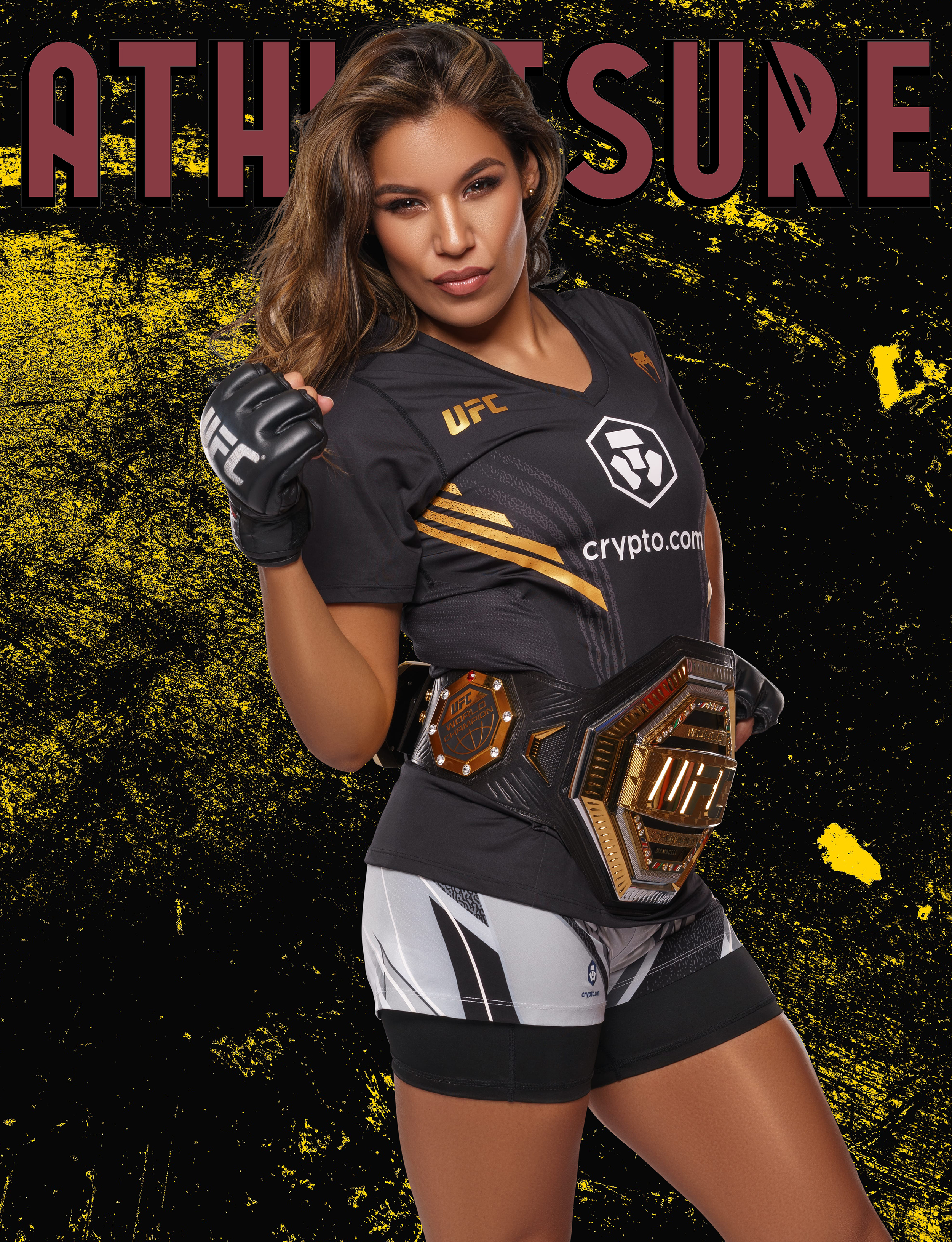
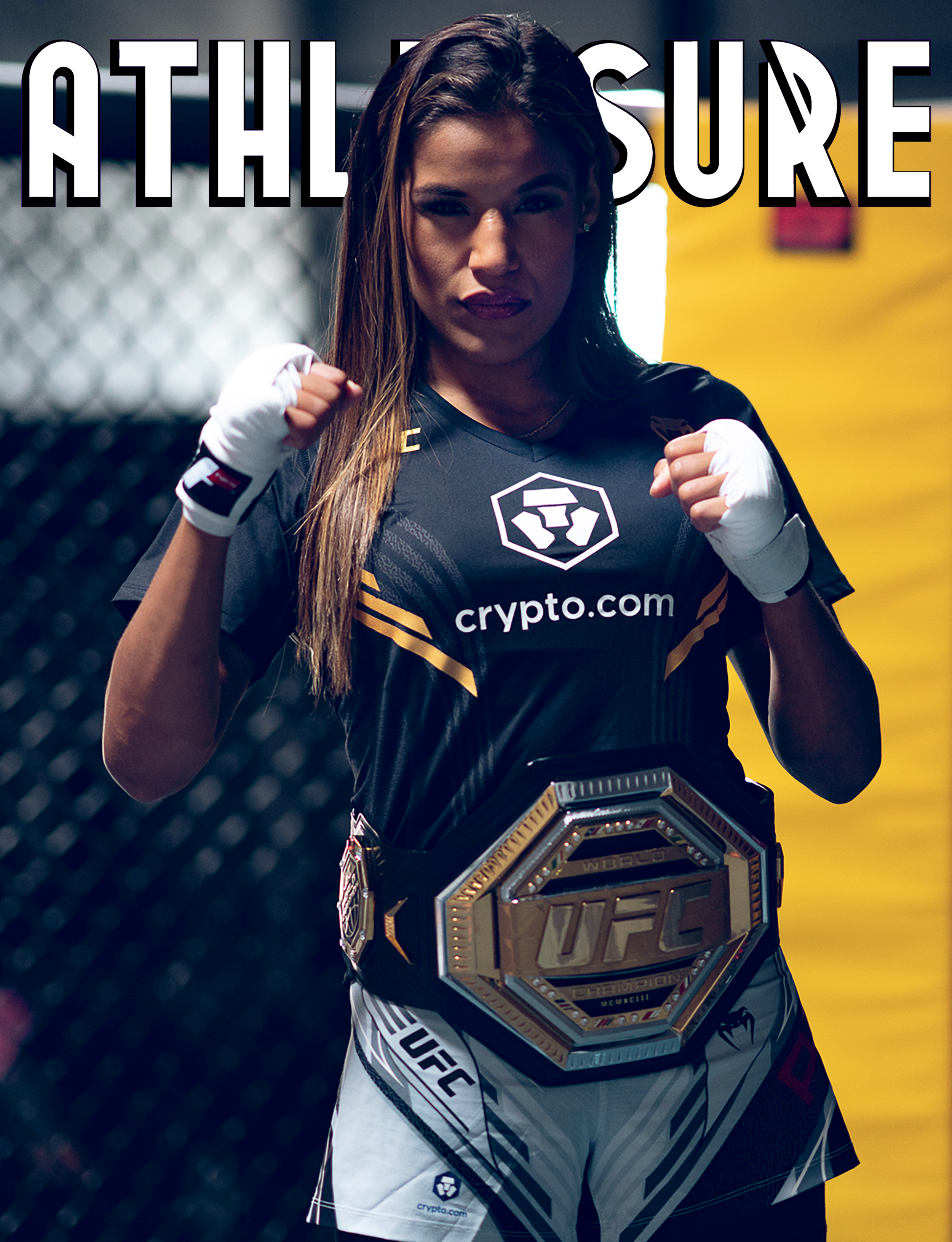
Read the JUL ISSUE #79 of Athleisure Mag and see REMAINING FOCUSED | Julianna Peña “Venezuelan Vixen” in mag.
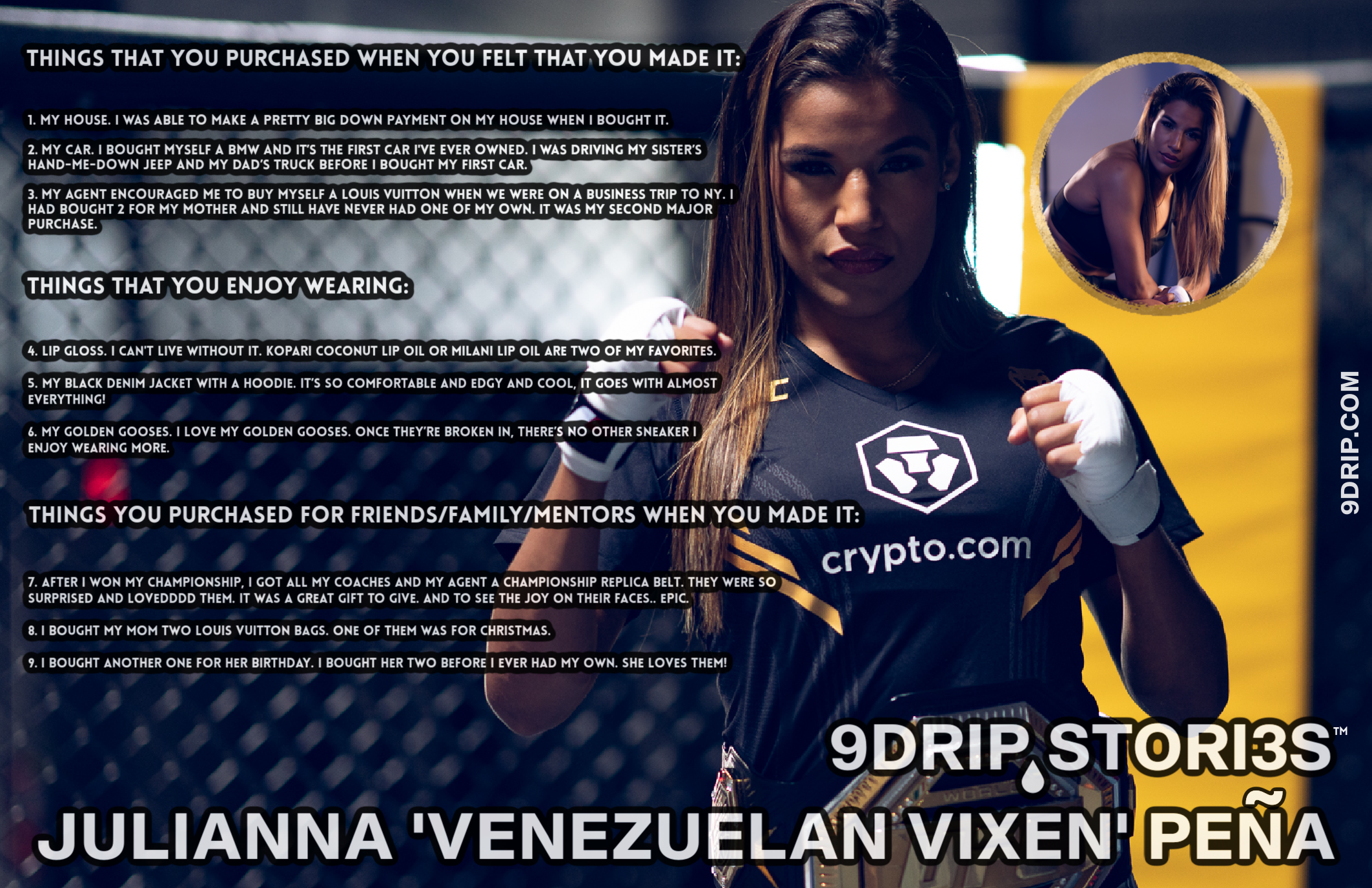
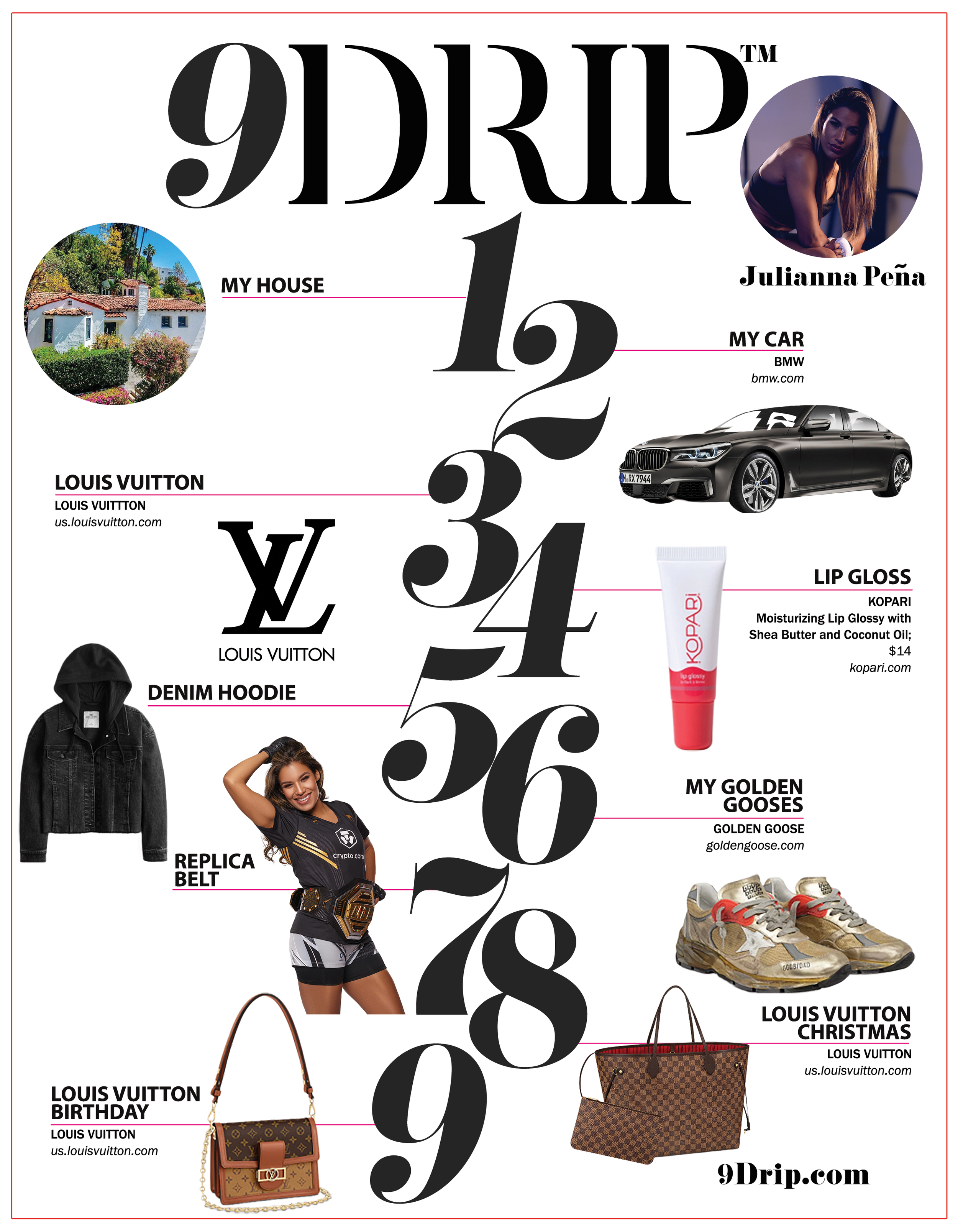
Read the JUL ISSUE #79 of Athleisure Mag and see 9DRIP | Julianna “Venezuelan Vixen“ Peña in mag.
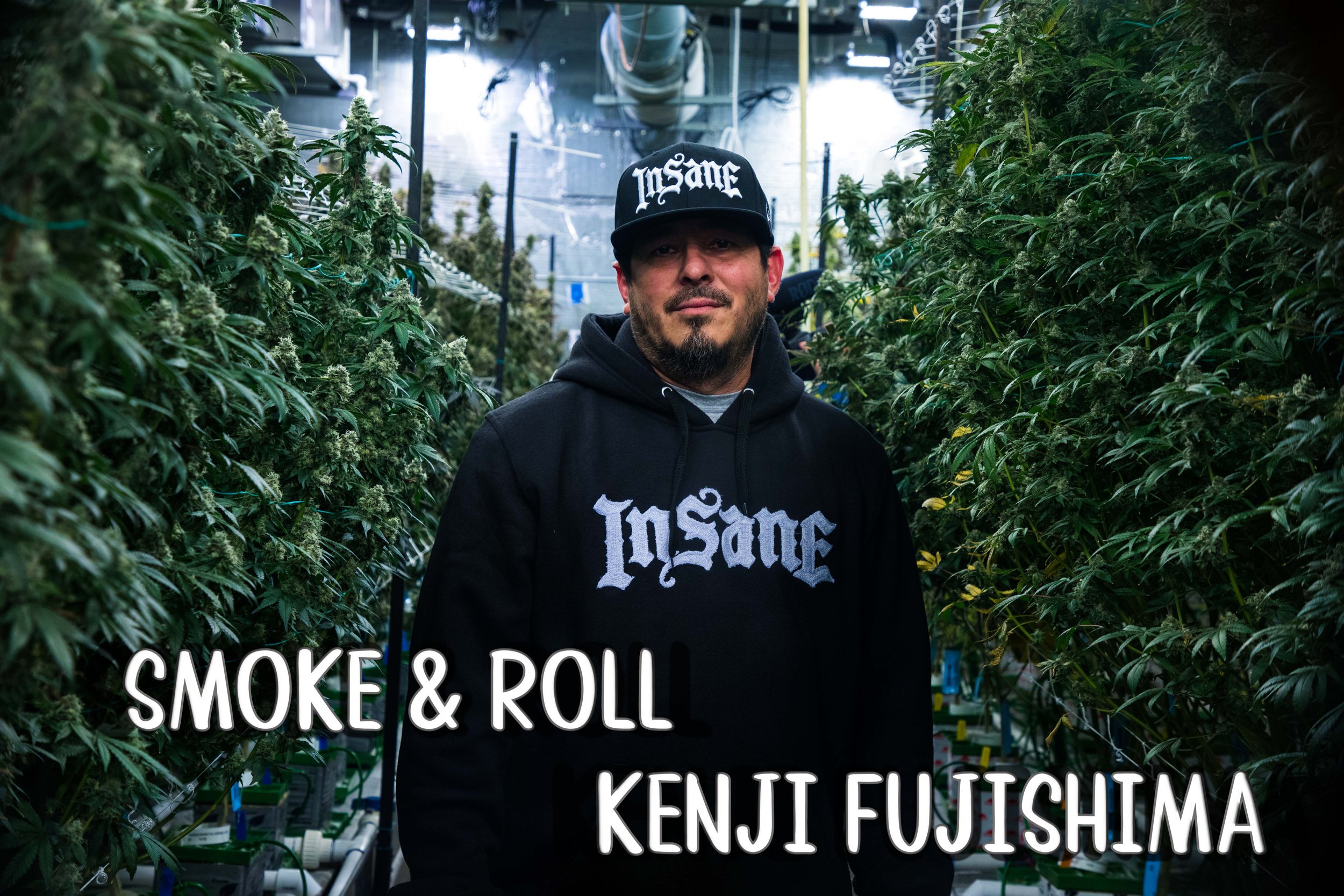
For this month’s cover story we catch up with Kenji Fujishima, who is Head of Cultivation at Dr. Greenthumb and Insane OG Brand. He shares how he befriended B-Real over martial arts training under his world-renowned father as sensei; going on the road with the Cypress Hill crew; and growing weed together to become legends in cannabis culture. Kenji recounts tours and trips in Amsterdam; the origin and viral smash following of Kush Bubba (known as Bubba Kush) and Insane OG; and the insane path from growing underground and the Dr. Greenthumb hit anthem to going legit with Dr. Greenthumb’s dispensaries taking over California and expanding to legal states across the US as cannabis mainstreams. Their mission is admirable and necessary in delivering top quality products at an array of prices, while helping legacy farmers grab their share against corporate giants pushing to overtake the scene. We also delve into how cannabis is increasingly crossing into sports, health and fitness, and leisure activities, particularly with Brazilian Jiu-Jitsu smoke and roll, and their Team Insane recently featuring the exciting Nicky and Jacob "Jay" Rodriguez at Subversiv 7, their participation in High Rollerz, and more.
ATHLEISURE MAG: So you met B-Real through a friend around 1993 at a Cypress Hill Show, with the Beastie Boys and Rage Against The Machine?
KENJI FUJISHIMA: Yeah, I went to school with this girl and her boyfriend sold weed, and by way of linking with him in that sense, he was like one day, do you want to go check out a show? And it was with Cypress Hill, Rage Against The Machine and the Beastie Boys, a Leonard Peltier Benefit close to LA; at Dominguez Hills College, and we all pretty much started hanging out from there. You can imagine that line-up it was nuts.
AM: It sounds it! So you guys were hanging out and then started training martial arts together too? I see from your background you started doing Shotokan from age 5, right?
KF: Well my father is a world-renowned Shotokan master, I kinda grew up in the dojo. I started training when I was like 3 1/2 probably a little bit more serious by the time I was 5, because 3 1/2 is pretty young, you’re just still getting real legs under you. Both my brother and I, from the time we were in cribs we were in the dojo, and then by the time we were walking we were on the dojo, and when we were actually cognitive of learning things, that’s when my dad started putting Gi's on us and training us.
AM: And B-Real was doing Taekwowndo before?
KF: Yeah, he was already training, we shared the love of the martial arts and stuff, and after many months of checking my dad out, he wanted to switch it up from Taekwowndo to training with my dad. I want to say that probably happened early '94.
AM: That's cool. So when did you get into cannabis?
KF: Oh man, well I've been smoking weed since late '80s maybe like '88-'89, I barely turned 15 years old. Put the first plants, just like from bag seed in the ground around '91. And it just evolved from there, you know. The first time I went to Amsterdam was in ‘96 with them and that’s where I really saw seeds and everything for sale. I mean it was just a whole new world when you saw seeds for sale - it kind of all happened at the same time, right. Like we were seeing stuff in Amsterdam and then we were seeing things starting to change back home with weed. Because around ‘96 we were starting to see little things of OG Kush coming. So those years '96, '97, and '98, I would say where my career in cannabis started taking shape.


AM: Got it. Amsterdam is crazy! There are menus, and even more, there’s the culture.. different vibes and types of world music, like we had never heard of Alpha Blondy, all of those different kinds of hash - you just start experiencing some similar things in and around all of the coffee shops - that has never been re-created yet!
KF: Yeah, you know the culture definitely is really different over there. You know nothing like we were really used to seeing like being able to walk into a shop, buy weed, smoke it, drink some coffee, have some food and just bullshit all day if you'd want to. There were the smartshops where you could walk in and get mushrooms. We had times where we were just trippin' out in the Amsterdam streets, which was pretty wild when you have a crew of like 10 or 12 people.
AM: No one should be fooled by the small mushrooms, those things don't go by the size!
KF: [Laughing] Yeah those small ones, those things did some damage, they were no joke.
AM: We want to go over that story with the original Bubba, and how that blew up! Sounds like a crazy time how it went viral and blew up.
KF: It was one of those things.. At that time weed was like Indo, maybe it was Chronic you know. There weren’t too many different strains in the early 90s, like you saw Skunk, Northern Lights, a lot of the stuff we were seeing with seeds and stems, not like Mexican Brick Weed, but it was green, it was ok. Once the Hydro stuff started coming, it was so expensive, like less than a gram for $20-$25 bucks, so you barely got a joint. Always worked, but like man that was expensive. So we wanted to mess around with the whole growing thing. By the time we had started doing the Bubba, we had grown out some things, but those were from seeds, we never kept any of the plants, we didn’t know really too much about cloning or any of that other stuff. So when the Josh D crew and our crew connected and we got a hold of the Bubba seeds, that's really some our first attempts.
At that time we also had the genetics, some of the seeds from Amsterdam, where we were popping all of these things to try to figure out what's a really cool plant. That’s when I really learned to clone and keep strains - the start of that. The Bubba was given to us by a friend that regularly went and saw Josh D and Matt Berger, they call him “Bubba.” We kind of popped all of those seeds at the same time. We were popping some of the ones we got from Amsterdam like White Russian, White Rhino, Cali-O, and a few other things. And it was like our first real phenohunt, the same batch of seeds was coming out looking different, smelling different, and totally different characteristics and whatnot, and we came up with that one pheno that became to everybody the Bubba Kush. It was so different from what we were seeing in weed at the time from the brightness of the colors, the stickiness of it, the smell, I mean literally that thing stunk up entire neighborhoods from not many plants! We had never seen anything like that as far as plants in front of our face before.
AM: That was all in B-Real's house?
KF: That was in B-Real's house, we put a couple of plants outside, which were the first flowered out Bubba plants. We built a little mother/propagation room, he had an upstairs bedroom with a bathroom and we did it in there, and we used his garage to build the first set of lights. I want to say we had like four lights and that grow kind of became the influence of the Dr Greenthumb song.
AM: So how was all that? We had the honor to talk with B about how that came about. How was it when the song was written and the choice to have the track be what is and not to go commercial with it necessarily..
KF: You know, I guess I really didn’t think about it too much at time just because we were road dogs, we were like already together all of the time. If we weren’t together at the house or going out doing some shit, we were in the studios or karate studio, and I guess it was cool because maybe I knew him for 4 years or so. Just to hear him writing verses on stuff we were doing at his house was cool, but i didn’t really think that was going to change so much stuff for us because that was B-Real, he was already talking about weed. I didn’t think this Bubba Kush or this Kush Bubba was going to change a lot of the culture of weed out there, and definitely think between that and OG pushed a lot of people growing weed in the valley at that time. It spread so fast, there was nothing else that you could do to make that much money at the time. Even though we weren’t doing it at huge scale at that moment, for us we were getting like $7K or $8K a pound and you’re talking about ‘97, ‘98, '99 and 2000’s at the time, and people loved it and it was great weed. It made and ended a lot of good friendships, I’ll tell you that.
AM: All good things do..
KF: You know, money always has the tendency to do that to people. You see a lot of true sides come out, a lot of like long and what I thought were tried and true friendships came astray because of it, but we kept doing our thing. At B-Real's house, it was all pretty much personal stuff, and then at my house I started putting up rooms to pay for extra bills and stuff like that, and sometimes I’d have a roommate to take care of stuff when we were on the road and over the years of being in a bunch of different studios and a hell of a lot of tours. We were gone for like 6-9 months out of the year for a long time, we would always have our weed and when you took stuff like that to the Midwest or East Coast or even overseas, not many people had seen quality stuff like that. So it definitely changed the landscape of what we knew cannabis as it existed at that time.
AM: Did we see that you guys put Snoop on to some stuff too?
KF: Yeah, there was a studio session, and B-Real wanted to link.. oh god this had to be like ‘98-’99-ish, might have even been 2000, but where he wanted to give Snoop Dogg an oz. of the weed, there wasn’t really production of it. You were lucky if you could get an 1/8 in those days and it was like $100. An oz. you know just in general was like $500. Yeah Snoop wanted one and he thought we were going to give it to him. I was like it wasn’t even mine, it came from my boy’s spot, and yeah he had to pay the $500. He at that time, he hadn’t seen nothing that looked like that. You know it that Ooh Wee Snoop Dogg type thing you know. I mean for me, I was already just amazed to be hanging out with Snoop Dogg and crew. B-Real's definitely responsible for it being introduced to a lot of artists out there that talked about it and kind of showed off whatever they had over a lot time and a lot of fans were built over those studio sessions. A lot of creative stuff was done I’m sure.
AM: How much time was put to doing martial arts when the tours were going on?
KF: When the tour was going on not that much. It was attempted, but between going out there originally to train with him, and kind of becoming a roadie at the time and learning the ropes, and those guys with their press schedules and rehearsal, and shows and traveling. Those kind of tours are super tiring, we got to train here and there, but not really anywhere like we wanted to. But I'll tell you B-Real stayed very consistent at home, at the dude almost got to be a Black Belt. He was very serious about it that’s for sure!
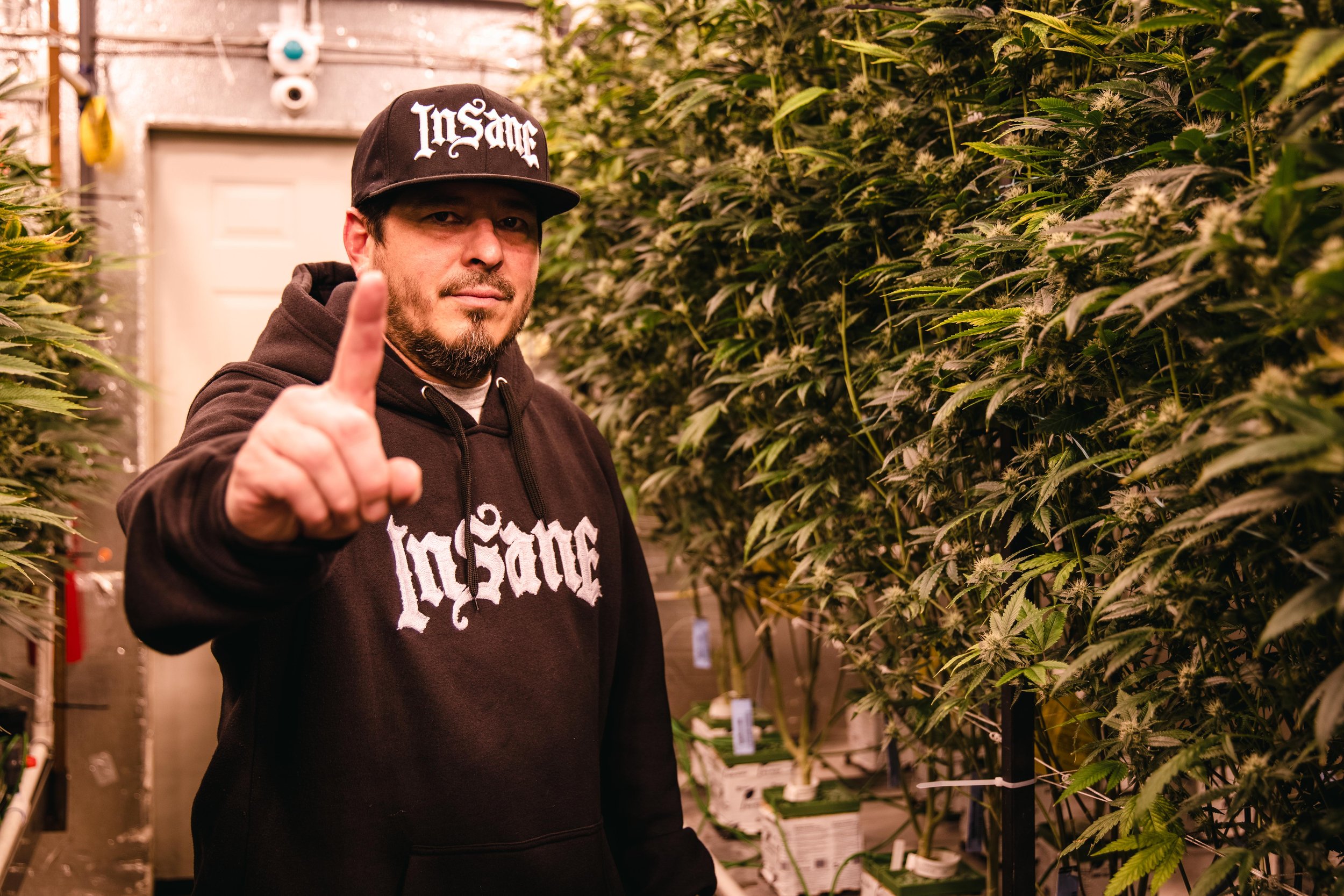

AM: We caught the Insane in The Brain documentary for Cypress Hill on Showtime, and it ends with a quote that's very gripping that hits as a throughline for us... "It's one of those eternal flames that we all just keep lit, all of us keep going and being masters of our crafts, better men, better friends, better at business - I mean look at us, 30 years later it was all organic." Seems to be such an important statement right there, what does it mean for you to be the Director of Cultivation for Dr. Greenthumb and pulling in the prior underground lines with Insane?
KF: It means a lot, right. We've been doing our thing for so long on the underground, and never really turned it to a legIt brand. We were busy touring, we loved what we did with the cultivation, and the flavors and the smoking and stuff like that. Everybody was just busy doing the thing you know, we had to be dodgy about it though - we were growing in like houses and bedrooms, spare rooms and guesthouses and everything. The lifestyle wasn't like glamorous as far as the cultivation was concerned, we lived really grimy. The plants got better and the bigger bedrooms. Half the time we were sleeping in like living rooms or the smallest room of the house. Everything was always fucked up because you can't always be super clean and too nice blowing up an entire residential house you know or multiple houses like we did. There was a lot of work put in, but it’s great to see it transition now into a brand that is literally just growing every day.
The team is getting bigger and stronger and with any business and any new crew a bunch of mistakes are made, and we all learn from that and hopefully we don't repeat any of the stuff and we keep on elevating what we do. We don't look sideways, we don’t copy what other people are doing, we just do what we like, we grow what we want to smoke, and if people like it that's great we're going to keep doing it – and if they don’t that’s everybody’s individual opinion in life and we accept that. We just want to keep the people that support us happy and keep bringing new stuff. Thats our goal.
AM: Dr. Greenthumb's has new category offerings from the Legacy, Loyal and Unapologetic lines, it seems incredible that you can get different quality, choices and price points for different kinds of smokers.
KF: So over the years we've built up a lot of relationships with different kinds of farmers, you know some of those being outdoor, or full sun or greenhouse, mixed light or indoor - we know not everybody can afford the top quality, like let's just say Insane bags that might be like $50, $60 an 1/8 at a store. But if there's like sungrown, or mixed light or greenhouse that we can work with our people that we can get to the price points that we want that can be the most affordable, then we want to do that. We don’t want these legacy guys and girls that have been doing this work, you know ended up a lot them in jail, raided, stolen from, killed whatever, like there are so many things that have happened to the people that have tried to bring this culture forward! Now that they are not necessarily struggling, but it is a struggle every day because now its mainstream, all these companies with super deep pockets are coming into the space and not understanding the culture or really caring about the culture. All they care about the money, and them thinking they’re going to come in and take it from everybody. For me, I felt it was kind of a responsibly to help keep these legacy operators active and at least do whatever I can to help support them as long as we know they’re doing the quality, we know we want to work with them and actually instead of just whitelabeling or purchasing whatever they do, them getting the proper recognition for their efforts.
AM: That’s mad cool. Literally Farm to Table
KF: It’s Farm to Table, that’s right yeah.
AM: So tell us about the Garbage Test and the 1, 2, 3 thumbs up test..
KF: We got a bunch of guys over here, we're all friends and we're all stoners, and we see a lot of weed come through these places. And for us it's cool because these people want to submit these products to make it into these Greenthumb bags or Insane before bags and whatnot, you can always appreciate peoples’ efforts, but we can’t put out garbage. So it’s just a test, even our own stuff that we grow, we do the same thing. If I grow, let’s just say 10 new strains, I’m gonna put them on the table and I’m telling everybody OK honest opinions, you tell me what we all like, and it’s just a rating system based off of smell, taste, effect - there’s levels to it. Because for me I don’t want to grow stuff people don’t like. For us we like stuff that’s a lot heavier, so we kinda gauge to the stuff that's a little bit on the stronger side. And that’s it, you know if it’s good and if a majority of us like it, it might make it to the next phase depending on what we are trying to do and how many strains there are. We've all literally had sessions where we all smoked 16 joints each and each joint was a different strain in a test, you know at one time, and it was a 5-6 hour smokeout and I think we kept 2 of those.
AM: You had how many?
KF: Out of 16, 2 that we kept. Not saying those other 14 weren’t good. They just didn’t fit the profiles we were trying to achieve at that time.
AM: You had raised strain standardization before, makes a lot sense..
KF: Well, not saying everybody growing the same thing, but standardizing ways to do it, like we want to keep consistency, especially a brand operating in multiple states. So if somebody goes to a store over here and they buy, whatever an OG Kush from us, we want to be the same over there, not just produced by somebody and it’s totally different and somebody and it’s totally different and we just called it this. Yeah standardized is hard, because there are a couple of different levels of smokers over here. Some people want it the same, they want that same strain all the time, just like us we love OG Kush we're going to die by that you know what I mean that’s our stuff. But like other people want flavors, and people get bored of stuff. Some of these strains may have a year, 2-3 year cycles before people are bored of it. Like Ice Cream Cake or any of these other ones, even though there are a lot of people that buy it, names get played out, artwork gets played out. So you just gotta keep it fresh and always come with quality. We standardize the procedures of what we do so that our stuff comes out, hopefully, the same every time. There are plant issues or failures that might lead to one or two batches here and there not making the cut, but for the most part standardized methods to produce the same - that’s important.
AM: So the Insane Brand is sponsoring Team Insane for the Brazilian Jiu-Jitsu for Subversviv 7 on June 11 on Fite TV. How did you guys put this sponsorship together and connect with Nicky Rodriguez, who is just blowing the sport up with his brother. How did this come about?
KF: Well one of our buddies was working with the Subversiv crew, I think he’s catering the event, and he knows we’re into martial arts and whatnot, and that I've been involved with High Rollerz camp that does the stoner Jiu-Jitsu stuff too and he passed it to our team, and of course B-Real and I loving and appreciators of martial arts definitely wanted to be involved, we thought Insane kind of fits into the mixed martial arts category and we wanted to be known as more than a cannabis brand.

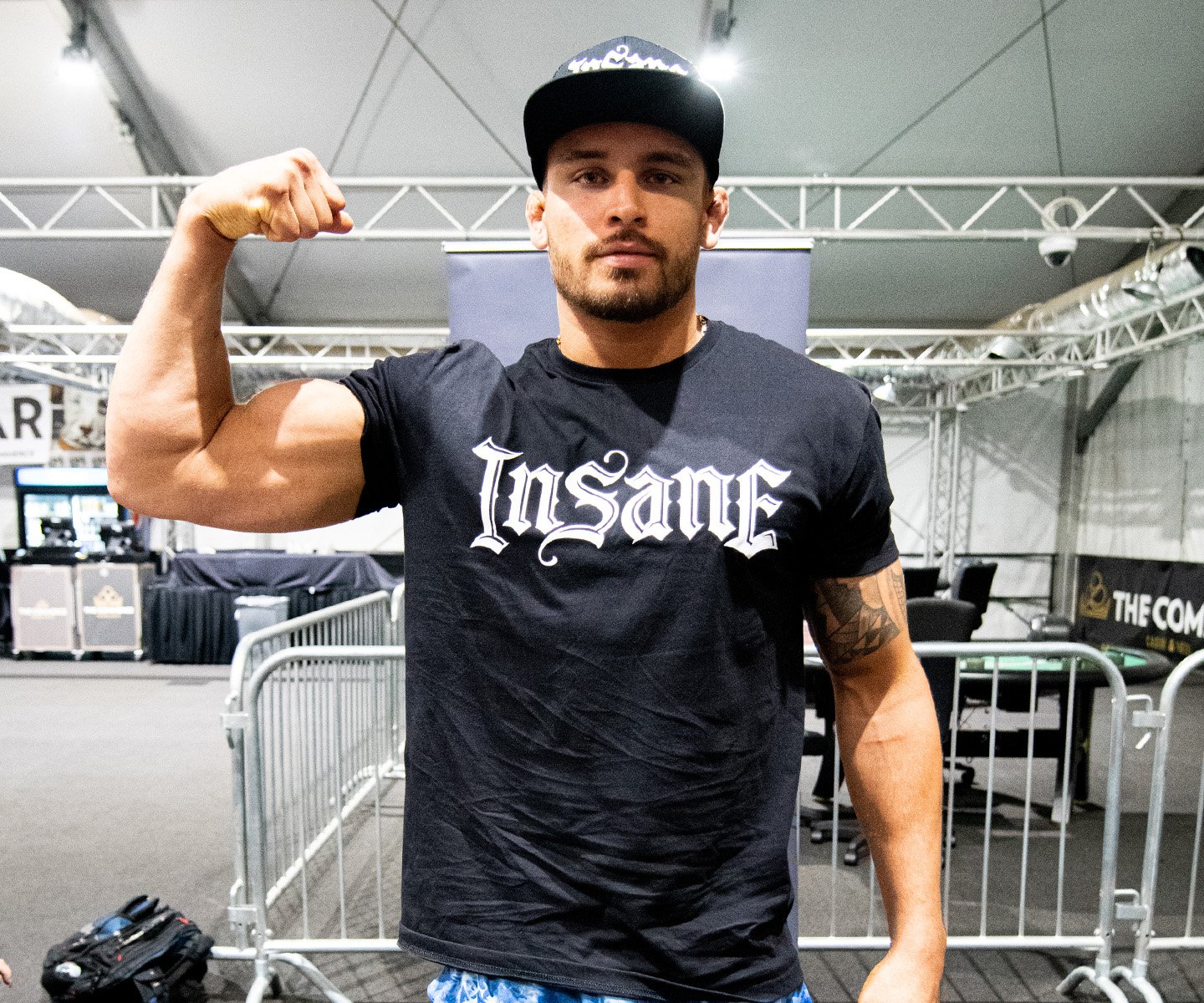
AM: Yeah speaking of Insane, I mean Nicky has been wrecking people.. It’s just been incredible how he's been progressing to the whole industry, that’s going to be sick, his brother too!
KF: That’s what I’ve heard, I didn’t know too much about these guys, I took my eye off paying attention and when all of this came up, and I saw what these guys were doing out there - it's kind of shocking how much this sport has been coming up and evolved, and guys like those brothers that are out there just slaying people. So I’m honored to get to meet them and see these guys rolling and go fuck some shit up. I love the sport and the level of these guys training it’s definitely something to watch.
AM: The High Rollerz looks cool too, how did you connect with that and for those that don’t know that they have cannabis as part of the rulebook and the sport too.
KF: My buddy Matt Staudt is one of the founders of it and right when they were launching we were talking a lot and we just wanted to support that too. It was super interesting that the mainstream people started hearing about the Jiu-Jitsu and grappling events happening, but for as long as I’ve been around Jiu-Jitsu a lot of the guys that have been involved in that have always been smokers - like smoke and roll. It seemed to be one of those things where you smoke before you go roll, and be in that zen spot and then training was just like that. B-Real and I would go smoke and then train with my dad for a 2 hour training session, so you know some people function on it, some people don’t. For us, smoking puts us into a certain zen where our concentration locks into whatever we're into at the time.
AM: Yeah there’s a certain cerebral zone you can hit right. And for recovery too - so it can be good for training, fighting and recovery?
KF: Well for me, definitely on the recovery side too. I’m pretty much always hypertensive. I had back surgery back in ‘02 and so i pretty much did my whole recovery drug-free minus cannabis. It was a little different because the injury that I had, like even when I coughed it hurt, so I had to be careful about how I was smoking so I wouldn't choke too much, but it would definitely help me relax and help me get into sleep versus taking a bunch of pills that were making my stomach bad. To this day, peoples’ addiction to pills is crazy, I just never wanted to go that route, so my medicine has been cannabis you know.
AM: Makes sense the stories with the pain pills, just a couple of missteps and anyone can take a wrong turn with that.
KF: You never know, today there’s Fentanyl and people are dying from the smallest dose where they’re just normally taking a pill or doing something they’re used to and they’re just dropping dead. I don’t really need to worry about that because I’m not taking pills. It’s just something I’ve never been into, you do, or do too much of that and you can’t control yourself, with weed I’ve always felt I’ve been able to micro-dose myself. I guess you can say control hitting the joints or however just to get to the point where I’m good and that’s it, and then I’m going do what I’m going to do. Smoke a joint and go ride 20 miles on a bike just in my zen spot or smoke and hike or go train or whatever. Yeah THC and the other cannabinoids and things like that the compounds in cannabis definitely have medicinal properties and should be researched a lot more so the people can find the benefits from the use of it.
AM: Yeah we're still scratching the surface, between all the different cannabinoids, the terpines and the entourage effect.
KF: 100%
AM: So when you see customers coming in, you have different groups of people where some see the different Indica and Sativa; some looking for the highest THC possible; others CBD.. will people more and more see what their personal relationships can be and become connoisseurs?
KF: That and combined with education, a lot form people walking into dispensaries and are just asking the budtenders ‘what’s your strongest stuff;’ or ‘what do you suggest;’ or saying they like this, this and this; or the whole Sativa and Indica thing which I personally really don’t believe it too much anymore these days. There’s a lot Sativas that look like Indicas, I mean it’s a very hard thing to really solidly I guess to say because there are so many things are crossed these days. There are hybrids and poly hybrids, a majority of stuff you really can’t say is a solid Indica or Sativa, with the exception of maybe a few strains out there. Once people understand the entourage effect and where terpines and other cannabinoids combine, and even the method ingested being smoking or eating, have a big deal how it impacts a certain individual.
AM: So what’s coming down the pike for Dr. Greenthumb’s, you guys are opening up stores everywhere and more states are becoming legal, and you have all these new lines?
KF: Definitely a few more states that are being locked in right now for retail; as well as the possibility of some third-party stores carrying the Insane and/or Dr. Greenthumb brands; we're going to continue to partner with farms to add genetics to the roster of Dr. Greenthumb as well as new skus be it joints, vapes, or concentrates and whatnot, and the same with Insane - Insane will have a lot of new proprietary stuff we're doing, a lot of breeding is going down this year, as well as phenohunting, so we're going to see a ton of new strains coming out probably toward the end of the year, first quarter next year - and beyond that, we’re working stuff on right now that will be released under both lines, merch, extreme sports - keep moving, keep building this culture.
AM: Who are 3 people that have inspired you along your path and journey?
KF: My father for one, he gave me my work ethic and discipline to do what I do.
My wife, actually has been pushing me to kind of come out of the shadows, right. I never really talked about what I did. I never cared about interviews or cameras, we were old school guys, that didn’t talk about it, we just did it, to kind stay out of jail. And this community, B-Real - that dude gave me an opportunity back then to come work for Cypress Hill and I was not in a good way back then, I was making some stupid decisions. That guy, by bringing me into the crew and allowing me to do what I do and make use of the resources that came around to the camp, that really changed my life and I’ll say it now and I’ll always say it that changed my life and I’ll never forget that.
Nicky Rodriguez is taking the Brazilian Jiu-Jitsu sport by storm. He transitioned from wrestling in college and had breakout success taking home Silver at ADCC ‘19 as a Blue Belt. Dubbed as the ‘Black Belt Slayer,’ he trained under legend John Danaher, and recently splintered off to co-found The B-Team, based in Austin, Texas. We chat with Nicky Rod about BJJ; training for ADCC ‘22; cannabis and the sport; team-building and nutrition; as well as fighting for Team Insane at Subversiv 7 this past month, with his brother Jacob “Jay” Rodriguez and female fighter, Alex Enriquez.
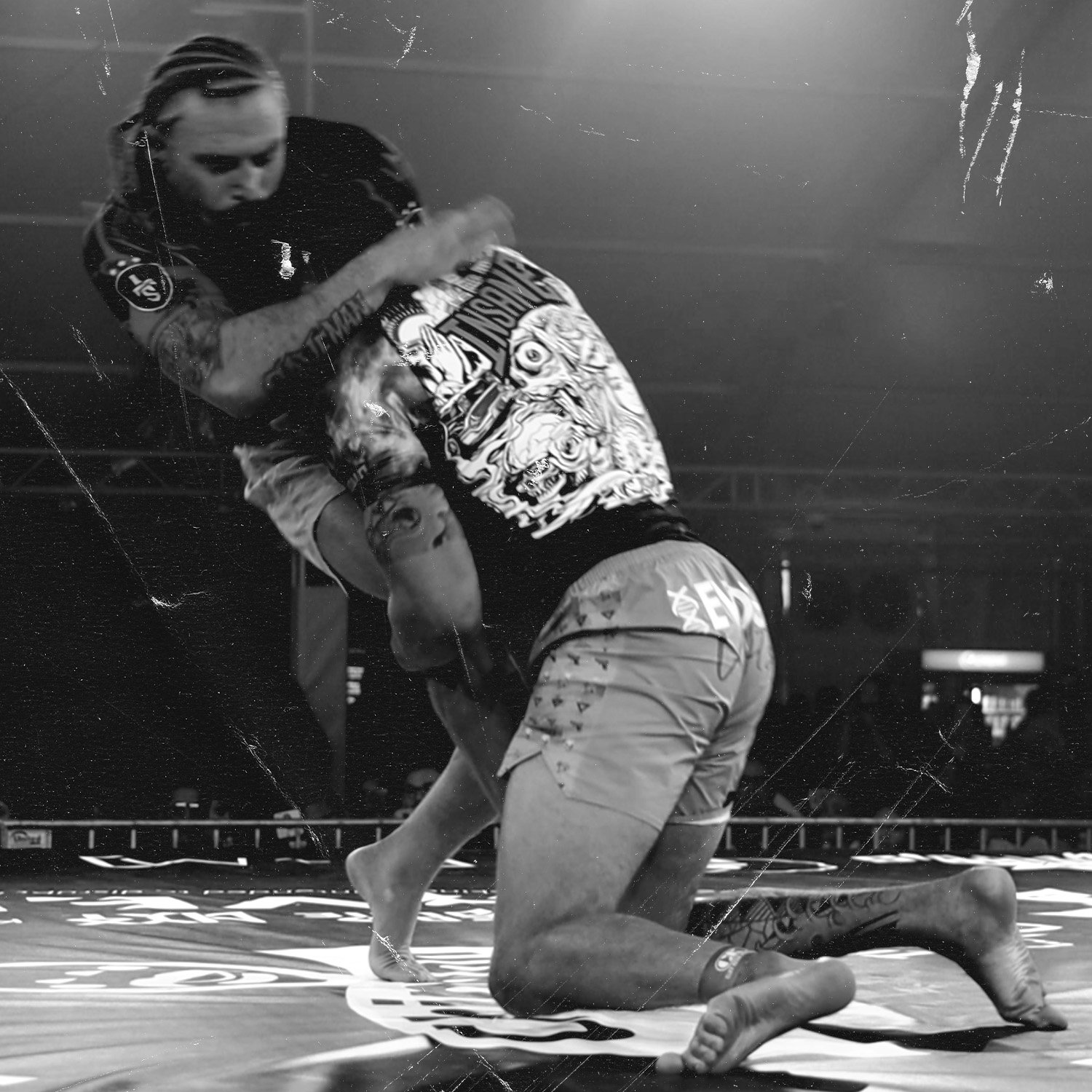

ATHLEISURE MAG: We see that you wrestled in college and made the move to do Brazilian Jiu-Jitsu, what was involved with making the switch?
NICKY RODRIGUEZ: It was a bit of a tricky transition. There are some things that coincide, like Jiu-Jitsu often times we start from a standing position, so Americanized wrestling is a small aspect of the sport. There's a lot of things I had to adjust as a wrestler you know, you want to take your opponent down but there is always a threat of a guillotine or other submissions, so I had to really solidify a solid defense to have success when trying to be offensive.
AM: You were training under John Danaher?
NR: Yeah I was training under John Danaher for maybe about 3 years, and man I learned a lot, you know the guy is brilliant in his space and dedicated his life to the sport. So I was just there to soak up a bunch of knowledge and it was very beneficial.
AM: And you guys formed the B-Team in Austin?
NR: We opened up B-Team in Austin about 6 or 8 months ago, it's been going well. We're a private competition-based facility. Eventually we'll open up to white belts, newcomers and outsiders, but for now it's a strictly private location.
AM: And it's an elite gym, so you have to be pretty advanced to apply?
NR: You have to be pretty advanced. We have some lower level guys, that compete pretty well, they train hard. You don’t have to be a world beater to be in our gym, but have to be willing to learn and train often. Most train twice a day and want to be professional athletes. We just are keeping it like that because we're athletes ourselves in our prime and we're still looking to compete, and win and grow. Yeah it's been a fun ride so far.
AM: What's next for Mexican Ground Karate?
NR: Well, ADCC Titles are our main focus. ADCC World Championships are the ‘Olympics of Jiu-Jitsu' in September. We have about 6 guys going from our team, potentially more because we have Australian and Asian trials very soon, and a few guys competing over there. We'll have quite a few guys at the event and would be nice to get some gold medals.
AM: In '19, you just dominated people and you got the Silver medal and had a blue belt!
NR: Yeah, exactly. I was a blue belt at the time and was training Jiu-Jitsu for about a year and a half. I won the ADCC trials and then with the year and a half experience I ended up taking second at the World's. That's pretty much why people got to know me, because it was not seen before, a wrestler making a transition so fast successfully as I had. So it definitely opened people's eyes to how they can input NCAA wrestling into Jiu-Jitsu. Now you see a lot more quality wrestling in the sport, and yeah the Americanized wrestling in Jiu-Jitsu has been much more prominent over the last several years.
AM: And they were calling you the Black Belt Slayer?!!
NR: Yes, that’s definitely a name that stuck. People liked it, I liked it. It seemed pretty memorable, so I just rode the wave on it.
AM: And now you’re a brown belt, we see you got it earlier this month..
NR: I got my brown belt a few weeks ago actually. So I’m a new brown belt, still plenty to learn, still fresh in the sport you know. I think it takes time to get acclimated and keep learning, it's about how many reps you do, you can know moves, but you really have to learn and be in-depth with those moves.
AM: So how many divisions are you going for in ADCC ‘22?
NR: I'll be doing the heavyweight which is over 99kg, which is no weight limit, I’ve had guys from 200 to 300, 360, and then the open weight division where you can have much smaller quota like 125lbs all the way to the biggest guys. So absolute division is the most recognized and more valued gold medal you can get because there is no weight class and you are the absolute champion.
AM: You just fought in Subversiv 7 on Saturday, how did that go?
NR: We had a team event at Subversiv 7 with 30K Grand Prize, I was representing Dr Greenthumb and Team Insane OG, they treated us very well when we were out there. It was a high level competition. Team Insane OG did well, we had some wins, we had some losses. As a team, as an event - it was fun, man. A lot of people came out, it was good to see the support in LA. It was a great event.
AM: How did you connect with those guys?
NR: I got contacted through social media, they were looking to expand in the Jiu-Jitsu world, they see the kind of content I put out, and it was a mutually beneficial relationship. I believe social media has a lot to do with an athlete’s success in the business world. Obviously you have to win, but you also have to tell a story. That’s what I do online, tell a story, so it’s a really good relationship with us working together.
AM: How was it fighting with your brother, was this was the first time in a major match fighting with him together?
NR: Yeah it was the first time we stepped on the mat back-to-back and on a team at the same time. In high school we wrestled at the same school and stuff, but I was graduating when he was getting into high school, so we never got to be on the same team together. So it was a great experience.
AM: And he is a blue belt right now? It seems like he is also starting to take the sport by storm, following your, and taking his own footsteps, it is a crazy parallel..
NR: He is a bit of a Black Belt Slayer himself, you know. He's been training for about a year and a half. He just did his ADCC trials where he got his purple belt on the podium, right, but out of 7 matches, he also sub'd all 7 opponents, most of them high-level black belts. I would say his trajectory is even bigger than mine, just because the results he has had at a year and a half you know, I was at ADCC and winning matches, but he is finishing high levels guys with minimal experience and that's honestly never been seen before. We’ve seen me use wrestling to negate Jiu-Jitsu and win, but Jay with a year and a half, he has been using strictly Jiu-Jitsu to submit opponents. So it’s something different and the speed of which he is doing it has never been seen before.
AM: What are some lessons and recipes about making good teams, be it about Jiu-Jitsu, corporate or in general?
NR: To make a good team.. First you need knowledge, you need to have somebody where most people can go to answer questions. Also, it's important to have conversations before and after practice about things you’re having issues on. Many don’t know the right questions to ask. It's a solo sport, although you’re training with teammates, it’s only you out there on the mat. So when you’re practicing you really need to figure out what you’re having problems with and specify what they are so you can ask your coach. So having the knowledge, having people on the team that can answer those tough questions and consistency. Being consistent with your training, for me I train everyday and that’s how I like it. Other people can get away with training less and do well. You can’t expect results to come fast. I think people train a couple times and expect it to work immediately. Things take time, and through pressure and time you can make diamonds man.
AM: It was cool to see you with Team Insane OG. What are some of the cross overs of Jiu-Jitsu and cannabis culture?
NR: Most of the community uses it, whether for nighttime or right before training. It enhances my mood, how I think cognitively about certain things, sometimes it changes the perspective that I’m having, so I can see and move different, or make certain adjustments.
AM: Is that smoking or edibles, in what format?
NR: Usually burn it, maybe roll up a joint or use a bowl. Joint is pretty easy and pretty immediate effect.
AM: Any particular strain?
NR: I’ve had Insane OG, probably the best strain I’ve ever had to be honest.
AM: Yeah shout out to them.
NR: For sure, Dr Greenthumb and Team Insane OG, those guys hold it down for sure!
AM: Have you competed in High Rollerz?
NR: I had a competition at High Rollerz a while back. I did one of their beginning events, it was fun man. I know the guys that own it, run it. They put together a great event. It was great to see the two worlds collide, the hip hop, the cannabis and Jiu-Jitsu culture. I think the two blend together, it just had to be in the right format.
AM: It’s about the vibe, serious but fun, all the blends together -
NR: I think the Jiu-Jitsu world makes it a bit of a party, when you come out to a show, it's not Jiu-Jitsu and leave, you know it’s good music, good vibes, people are drinking, food, there’s a lot going on, it's more of a spectacle, a fun event instead of a quick jits vibe.
AM: You have a handle @nickyrodeats, is that about wellness and food too?
NR: Well it's something personal I’ve been collecting like a food blog, I eat clean - like mainly meats, fruits and veggies. I post the cheat meals too, you know sometimes I grab a coffee and a donut, or some ice cream or something. It's not far-fetched to have a sweet tooth and display that, but it is something I’ve been kind of blogging about with no real direction. I think eventually I’ll have some more in depth content, maybe a Youtube channel. But it's a bit hard to focus on being an athlete and content, so for now I have to really mitigate my time where my thoughts are going.
AM: Sure it will come in time, people will be interested.
NR: Yeah I’ll keep posting, growing it little by little, and when I’m ready to fully commit to it, I’ll be ready.
AM: Who are 3 people that have inspired you along your journey?
NR: I'd say my coach John Danaher, the most inspiring, at least the most valuable asset to my immediate growth. Second, my dad, because hard work runs in the family and it is important to see it first hand, experience it first hand, that way so we can display it often. Three, I would say myself, I’m pretty much self-motivated. I never really get up and have it not hard for me to get going, I never really waste any time or have wasteful thoughts. I like to gear my day towards something positive, towards the next things.
AM: Cool. What do you think can help mainstream Jiu-Jitsu to levels like MMA and boxing?
NR: I think of this here and there. Getting on a major network, like ESPN would help. There are a few things that hold it back.
I think there are lot of different rule sets within the sport, I think it makes it harder for viewers to follow. I think honestly this year’s ADCC will help push us closer to becoming mainstream. It’s a bigger prize, a bigger spectacle, the event itself will be massive. But if we had a huge Grand Prize like maybe $1M to win the absolute devIsion, I think that will pull a lot of people out of their seats and come watch, or just be intrigued, and potentially make it more mainstream to see these guys fighting for a million rather than 10k, 20k or 50k.
AM: Well we'll be rooting for you! You're style is entertaining and your definitely an inspiration for us and a lot of people.
IG @killdrama
PHOTOGRAPHY CREDITS | Front/Back Cover, 16 - 19 + PG 70 9DRIP Eitan Miskevich | PG 20 - 23 + 27 - 35 Pedro Garcia | PG 24 Showtime |



Read the JUN ISSUE #78 of Athleisure Mag and see SMOKE & ROLL | Kenji Fujishima in mag.
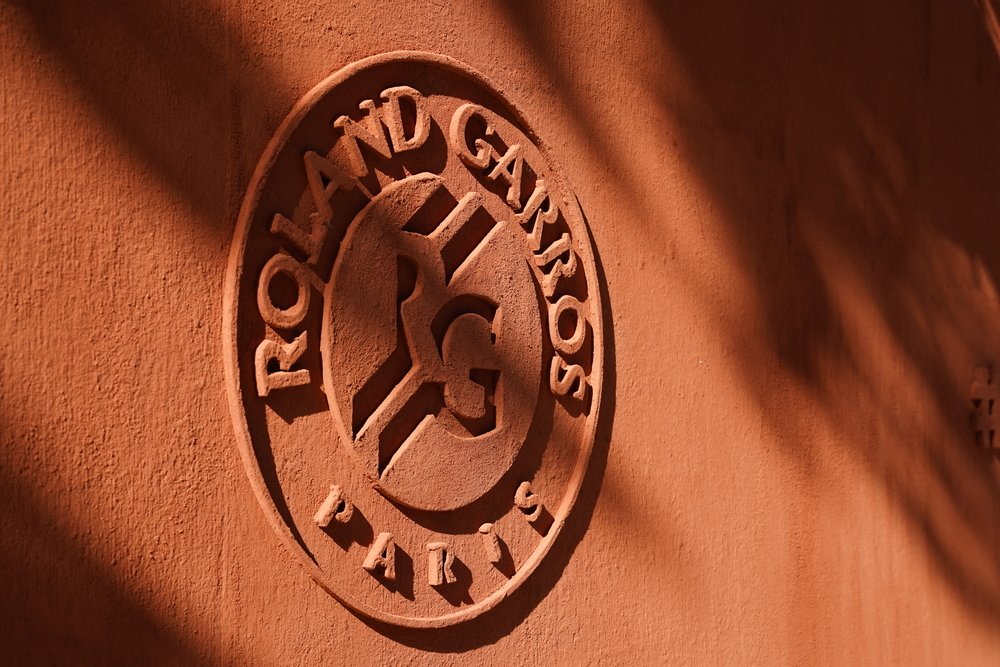
PHOTO CREDIT | ROLAND-GARROS
We love this time of year when we’re able to catch up with our favorite tennis matches. The Roland Garros French Open kicked off its 1st round on Sunday May 22nd and continues through June 5th which you can watch on the Tennis Channel. If you’re still looking to catch up as we’re currently in the 3rd round, we have the remaining schedule for this event!
Tennis Channel’s Live 2022 French Open Coverage
Date Time (ET) Event
Friday, May 27 5 a.m.-6 p.m. Third Round
Saturday, May 28 5 a.m.-1 p.m. Third Round
Sunday, May 29 5 a.m.-1 p.m. Round of 16
Monday, May 30 5 a.m.-3 p.m. Round of 16
Tuesday, May 31 6 a.m.-6 p.m. Quarterfinals
Wednesday, June 1 6 a.m.-6 p.m. Quarterfinals
Thursday, June 2 6 a.m.-2 p.m. Mixed-Doubles Final; Women’s Single Semifinals
Friday, June 3 8 a.m.-4 p.m. Men’s Singles Semifinals
Saturday, June 4 5 a.m.-9 a.m. Juniors Girls’ and Boys’ Singles Finals
Sunday, June 5 5:30 a.m.-9 a.m. Women’s Doubles Final
Same-day encores of the men’s and women’s singles and doubles finals (all times ET):
Saturday, June 4 – 2 p.m.: women’s singles final, men’s doubles final (and again at 6 p.m.)
Sunday, June 5 – 2 p.m.: men’s singles final; 6 p.m.: men’s singles final, women’s doubles final
Read the latest issue of Athleisure Mag.